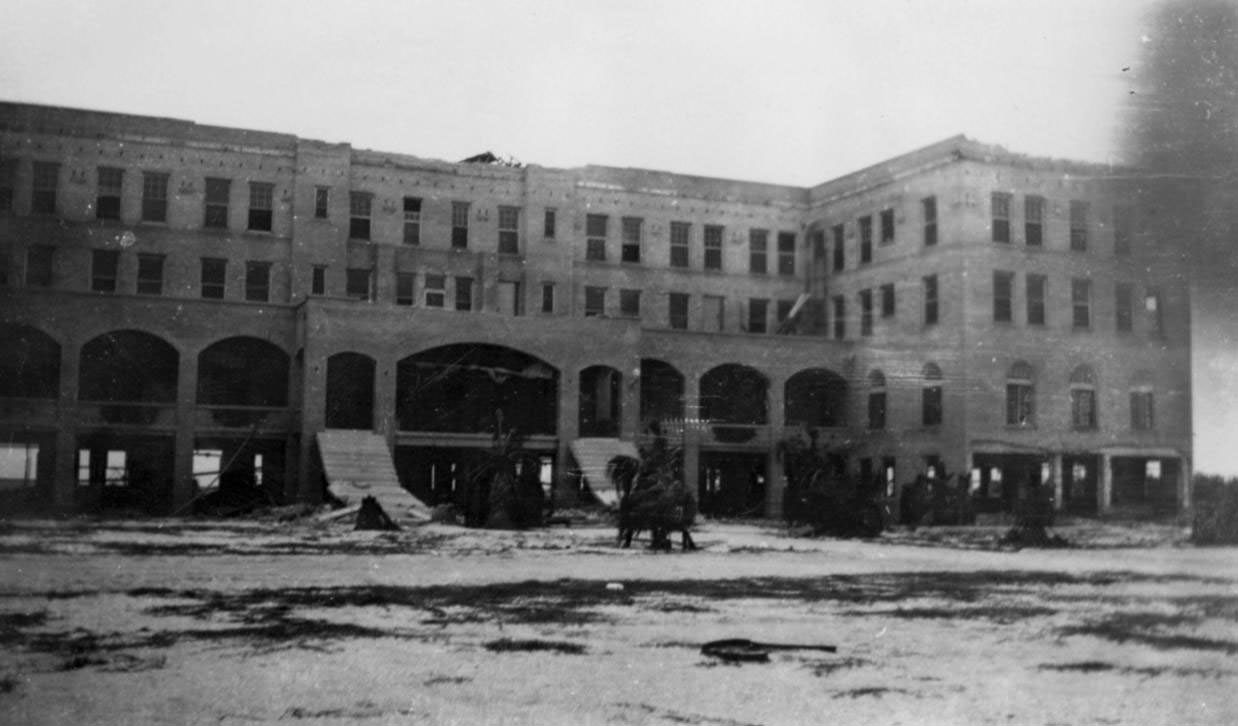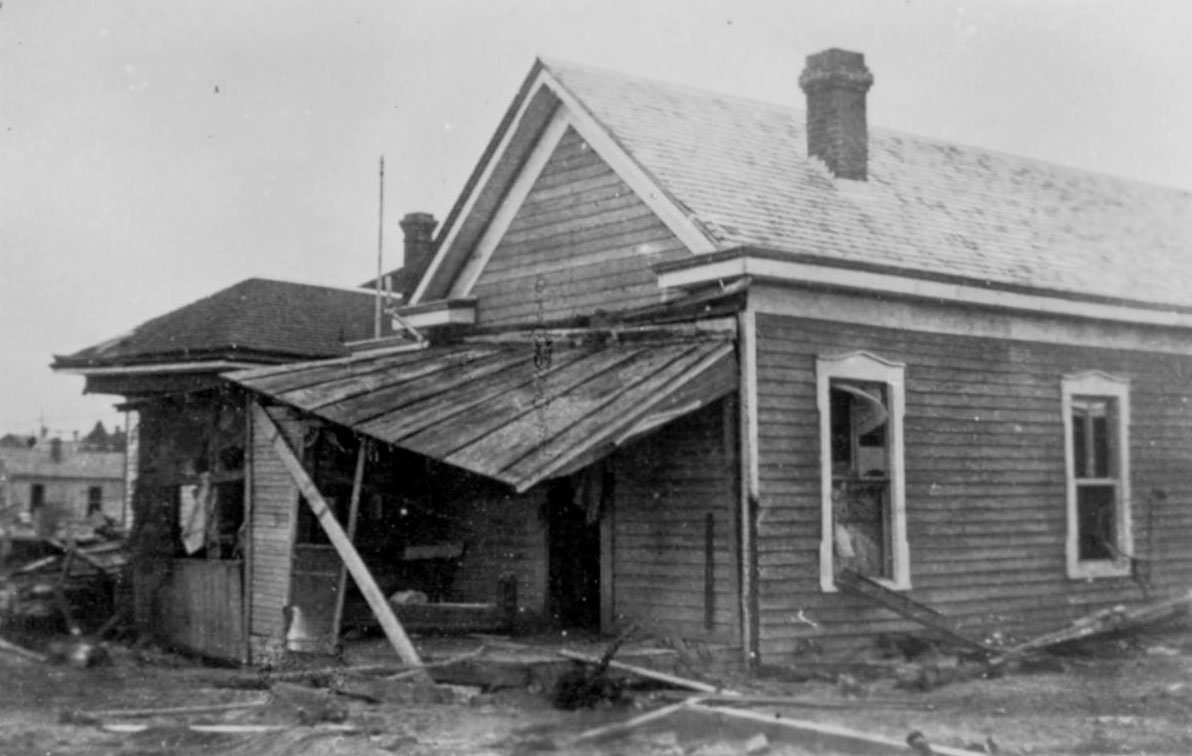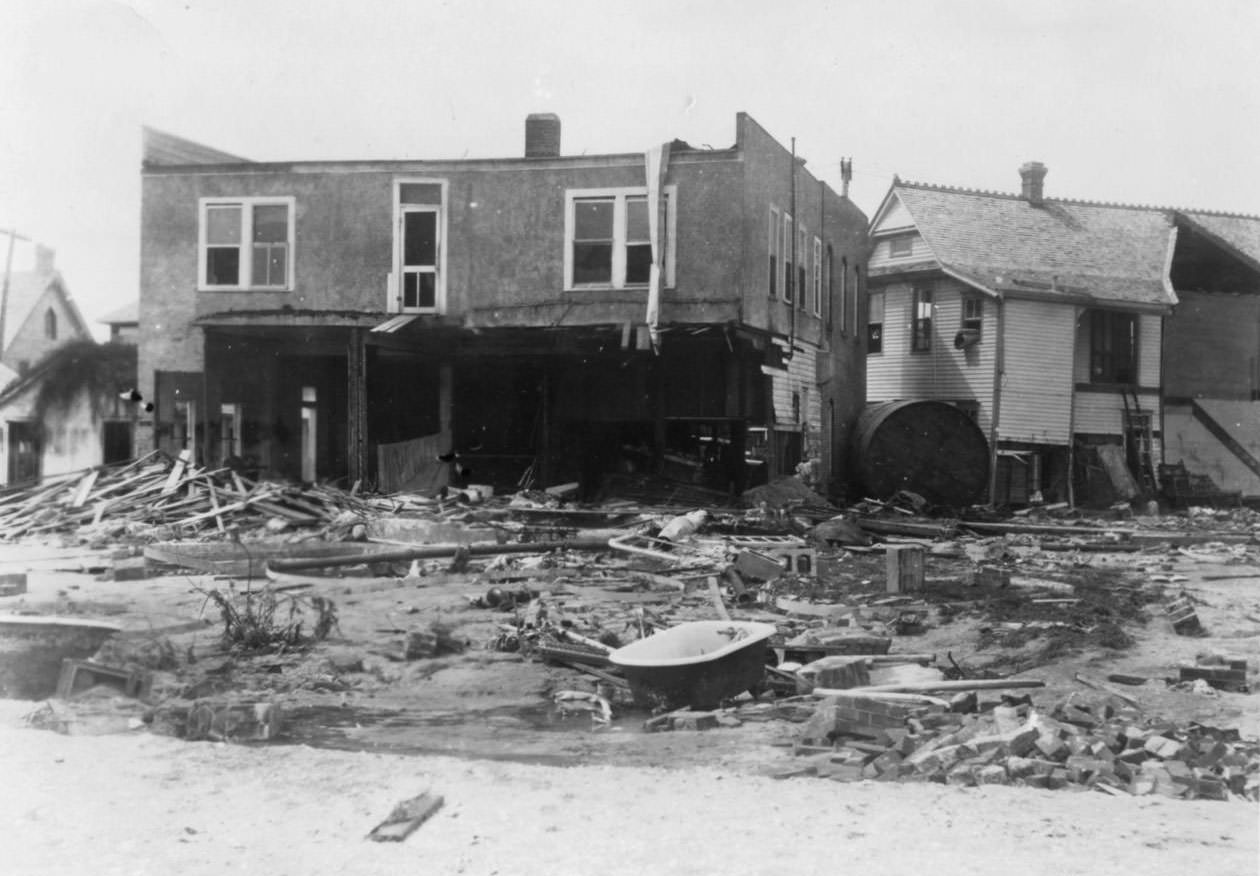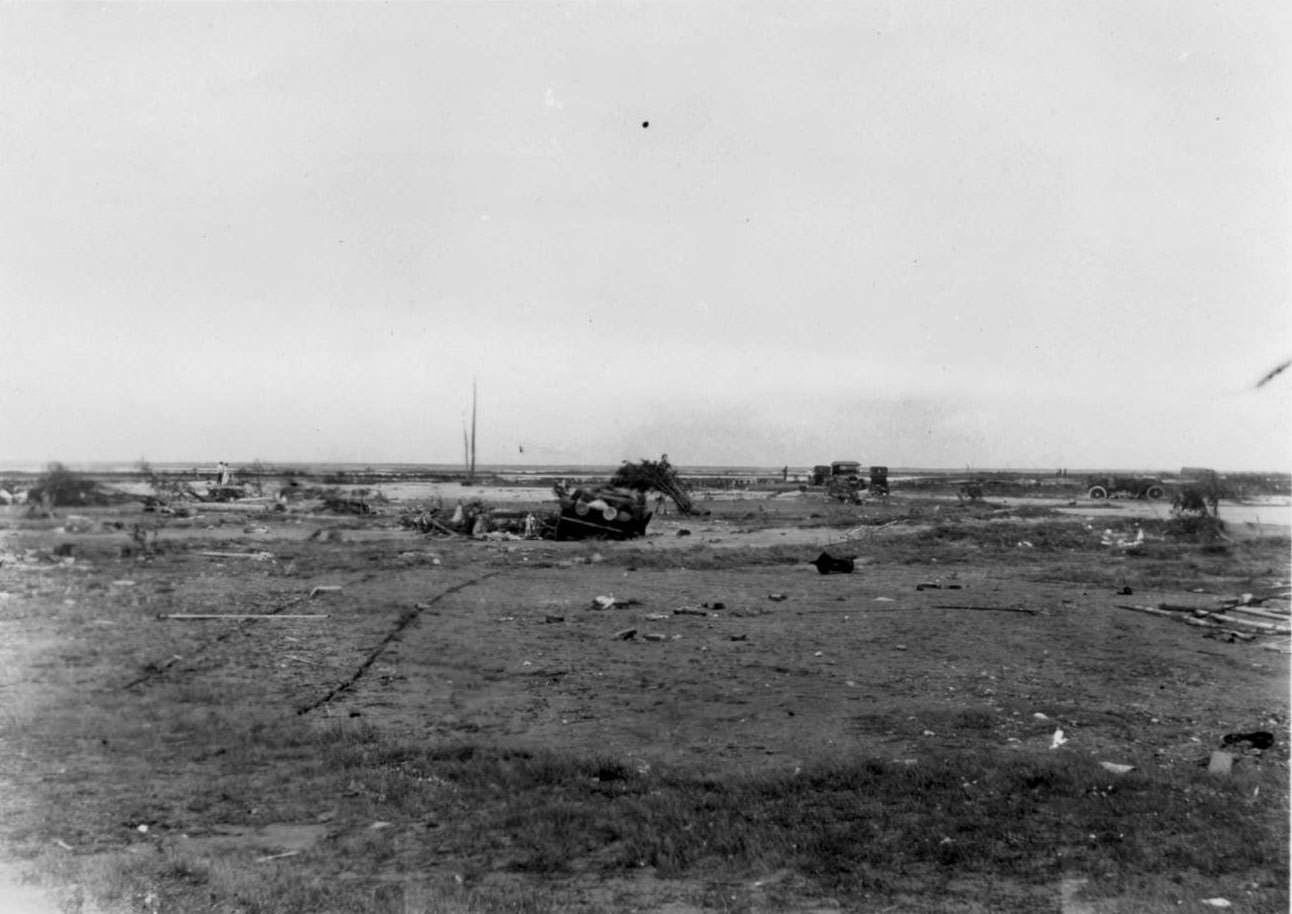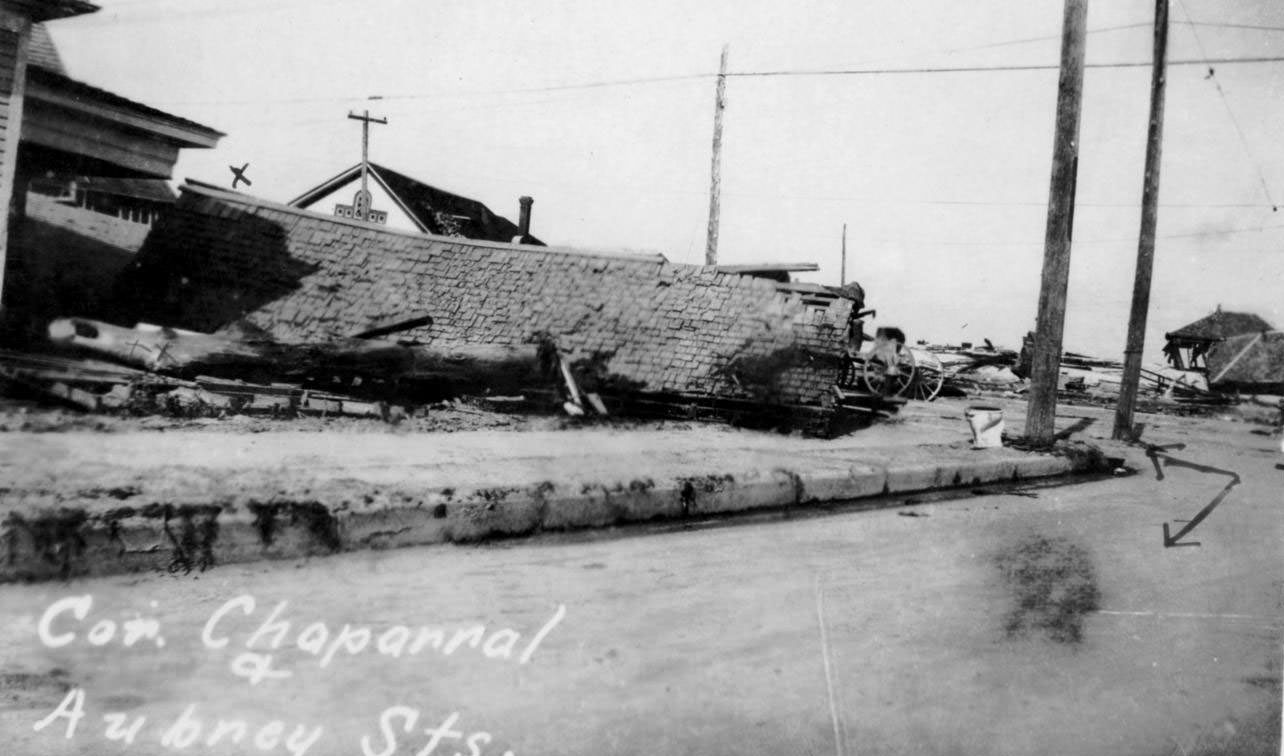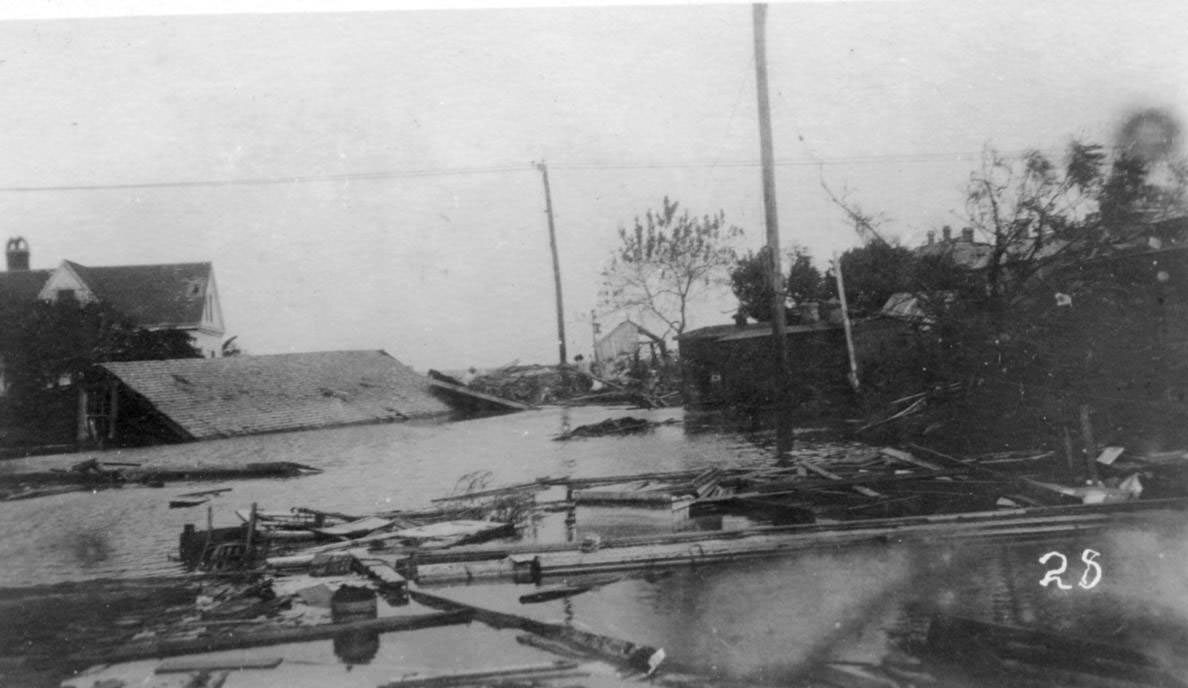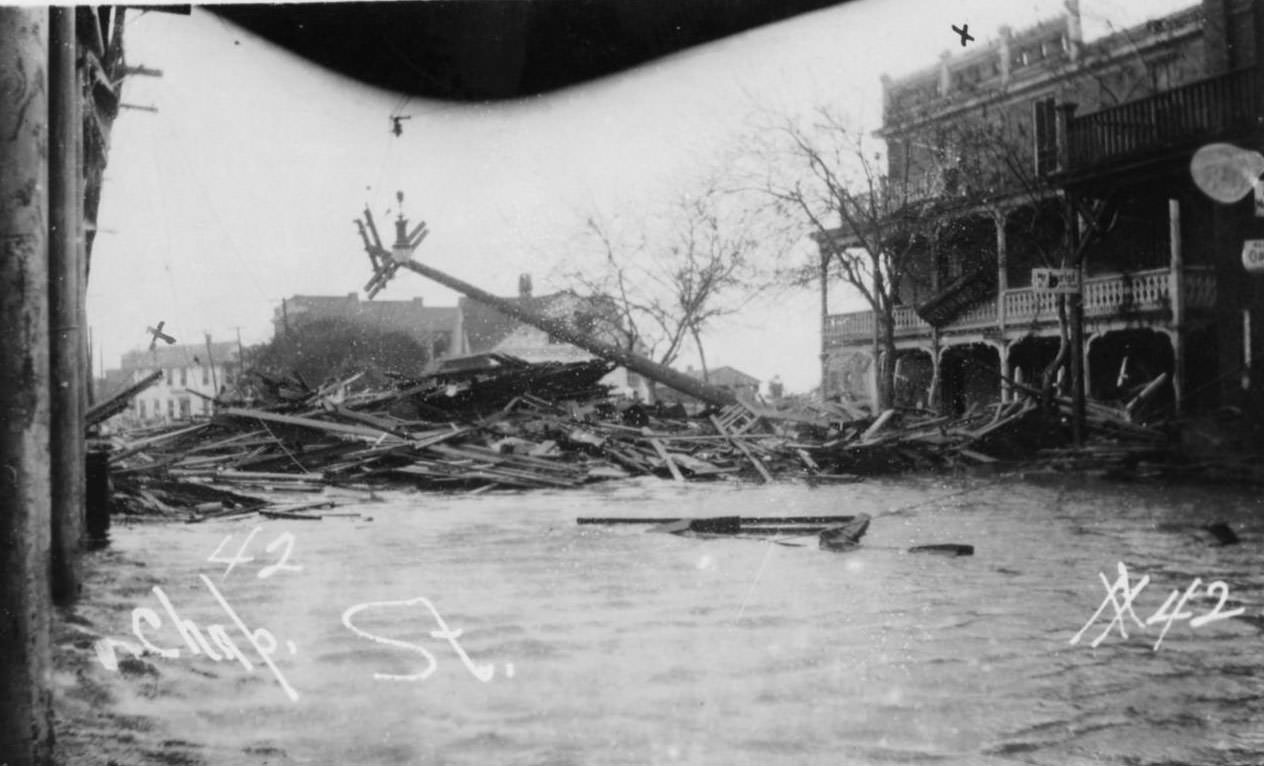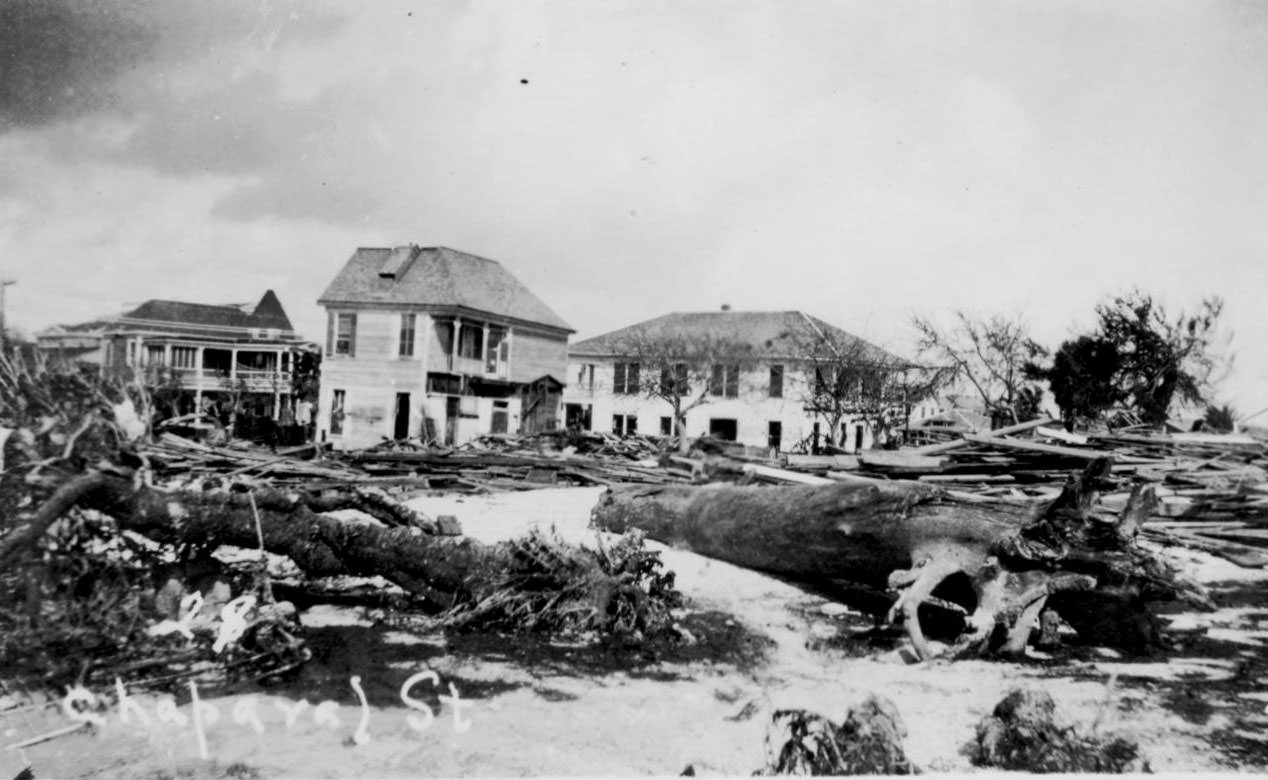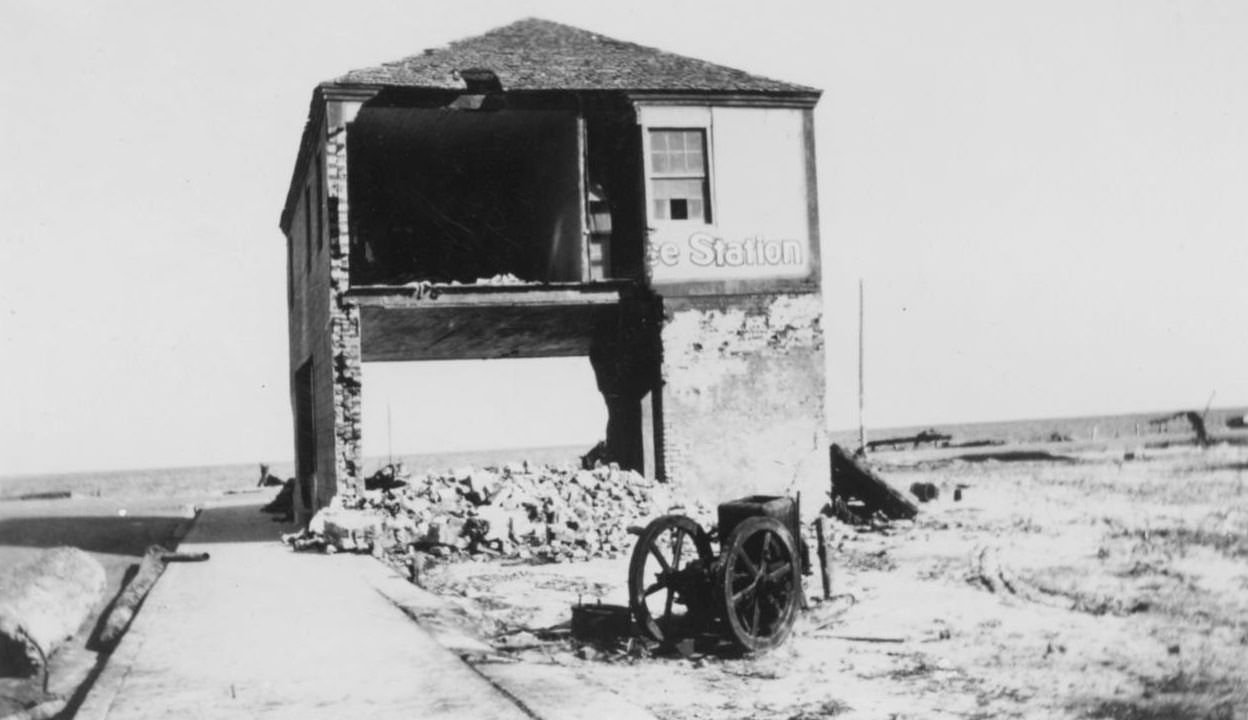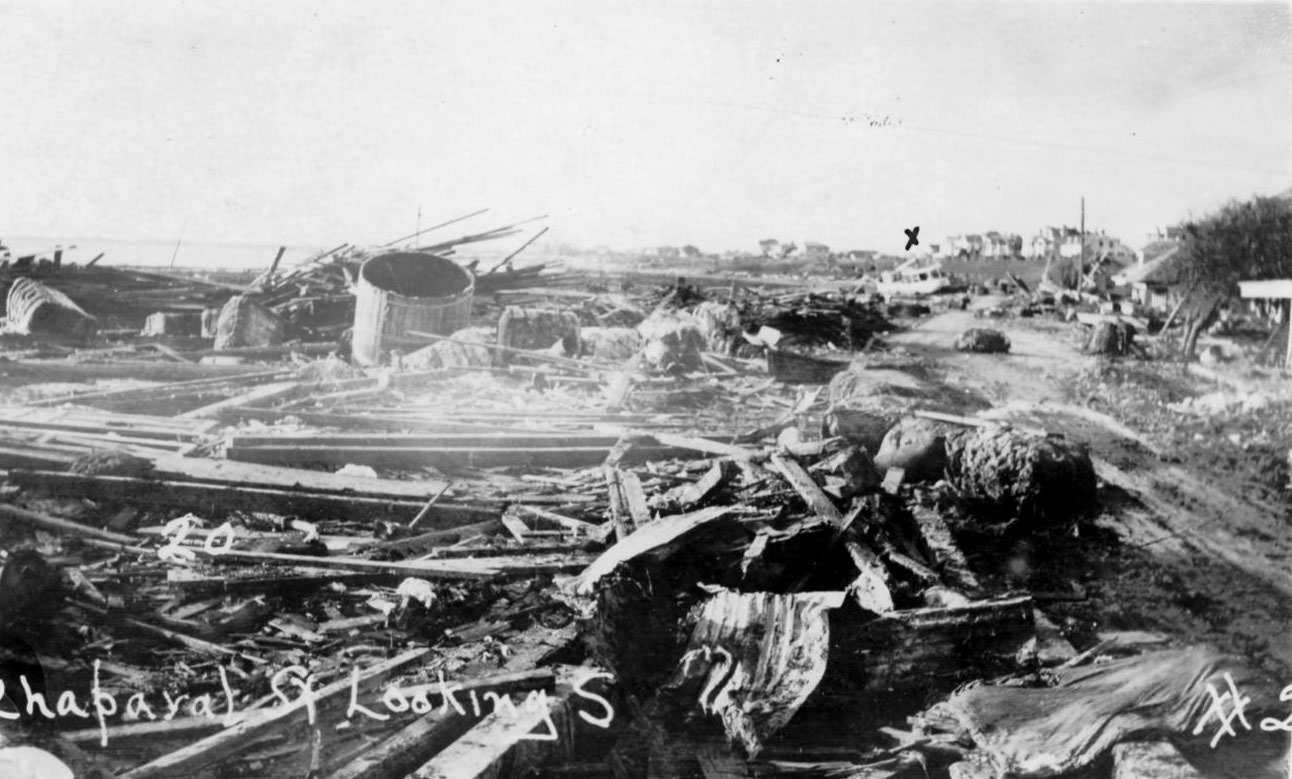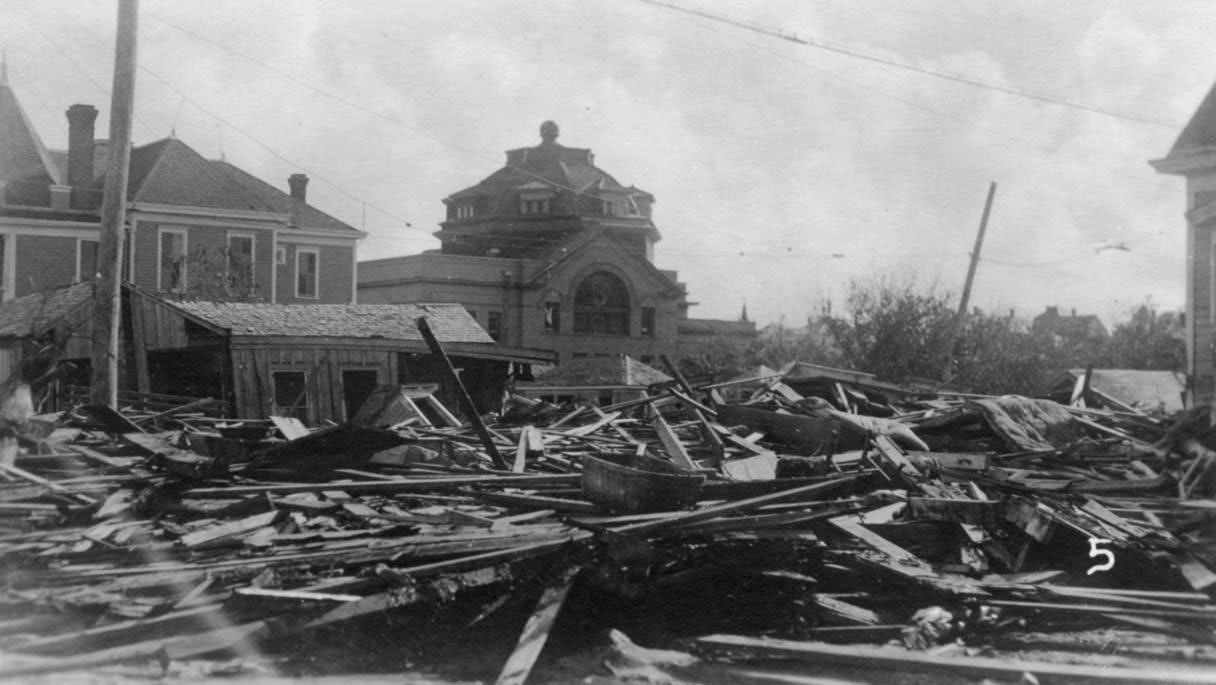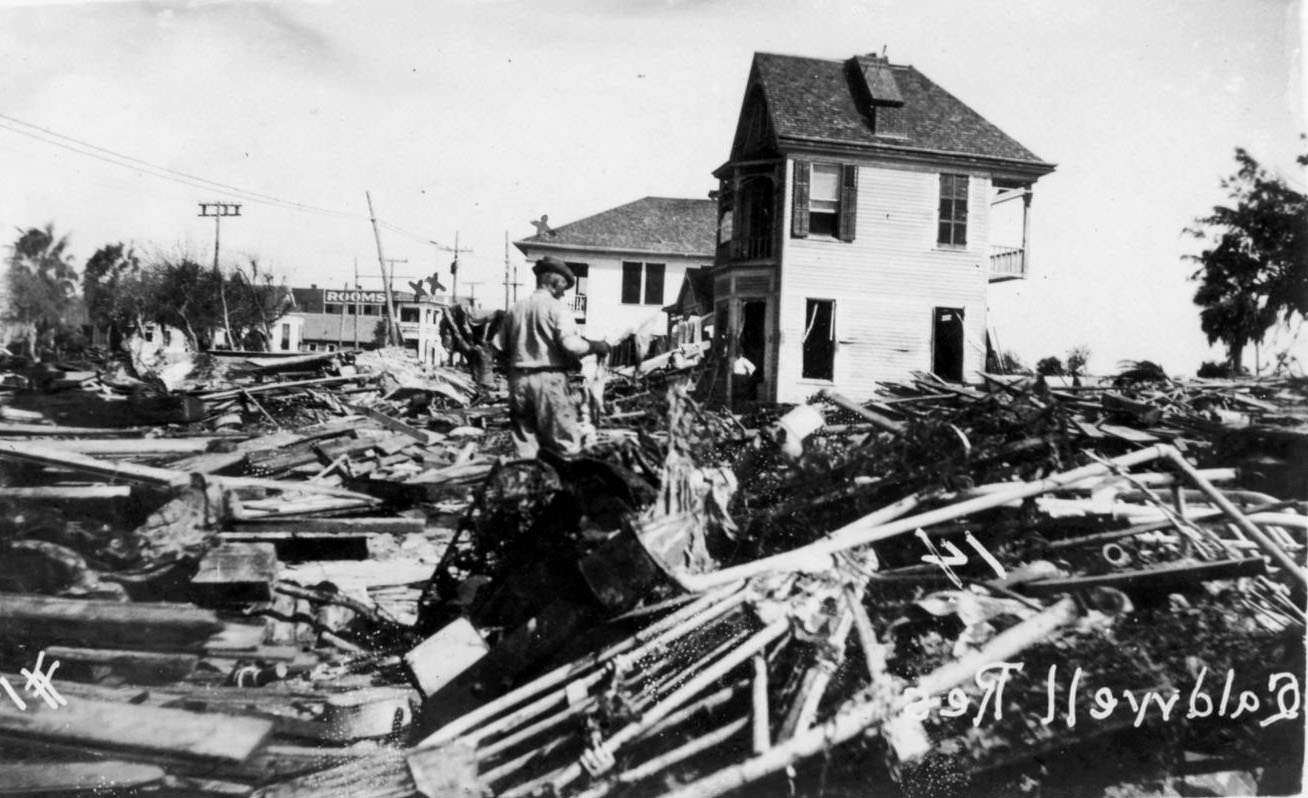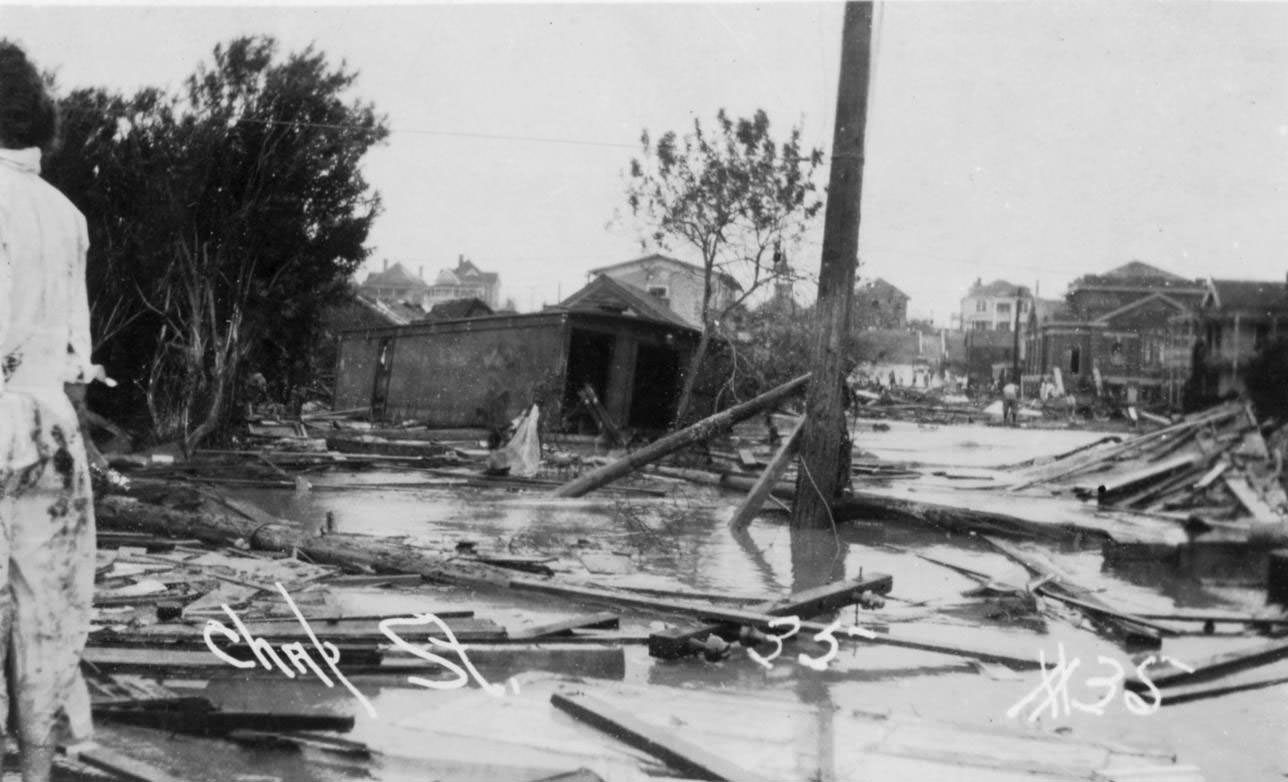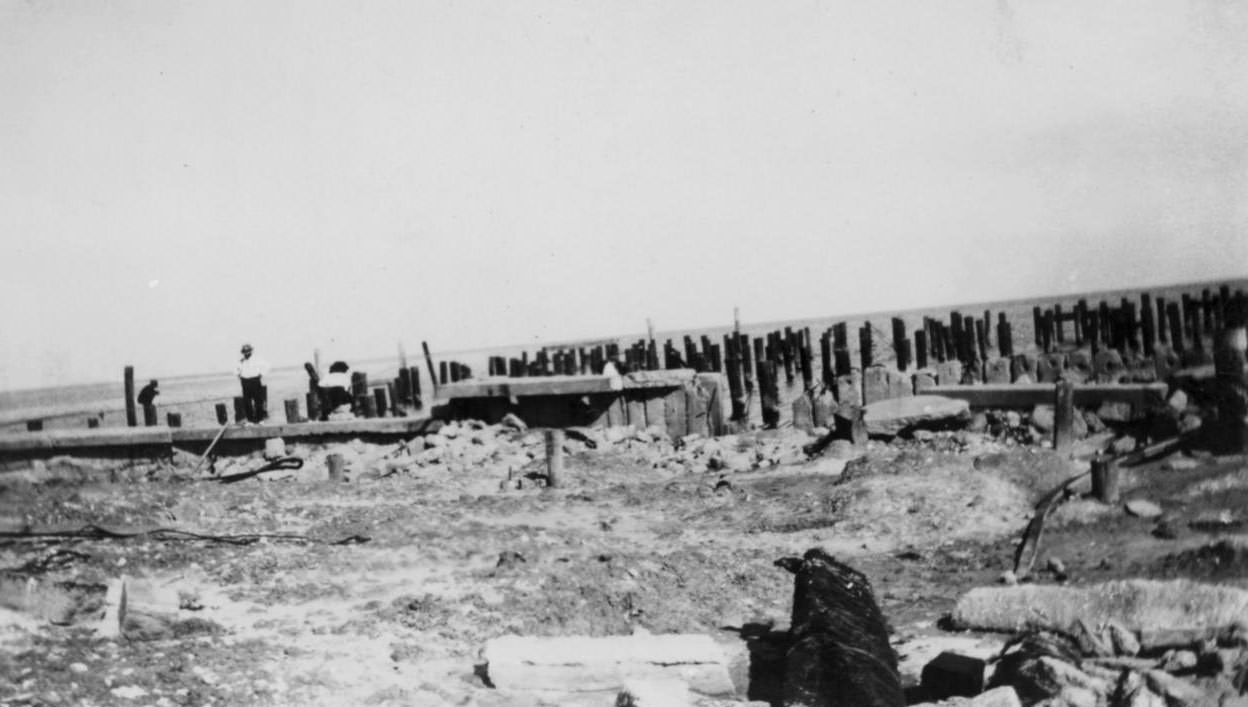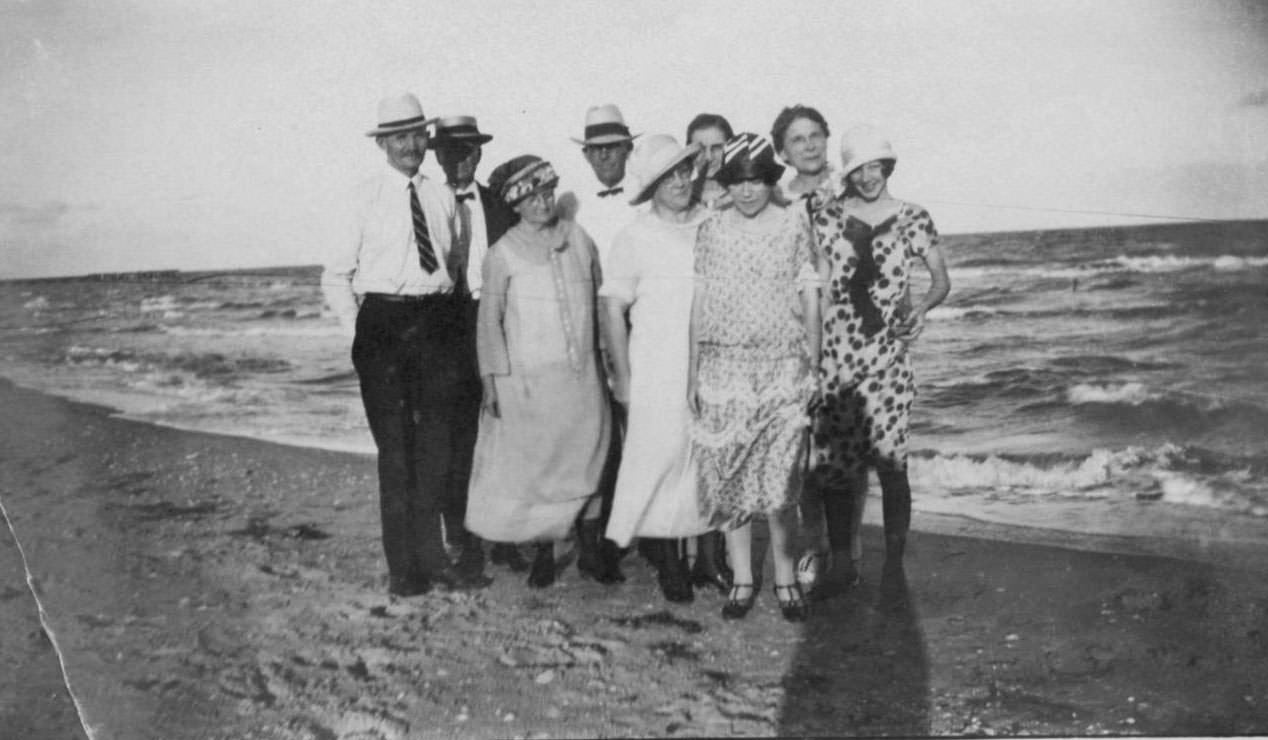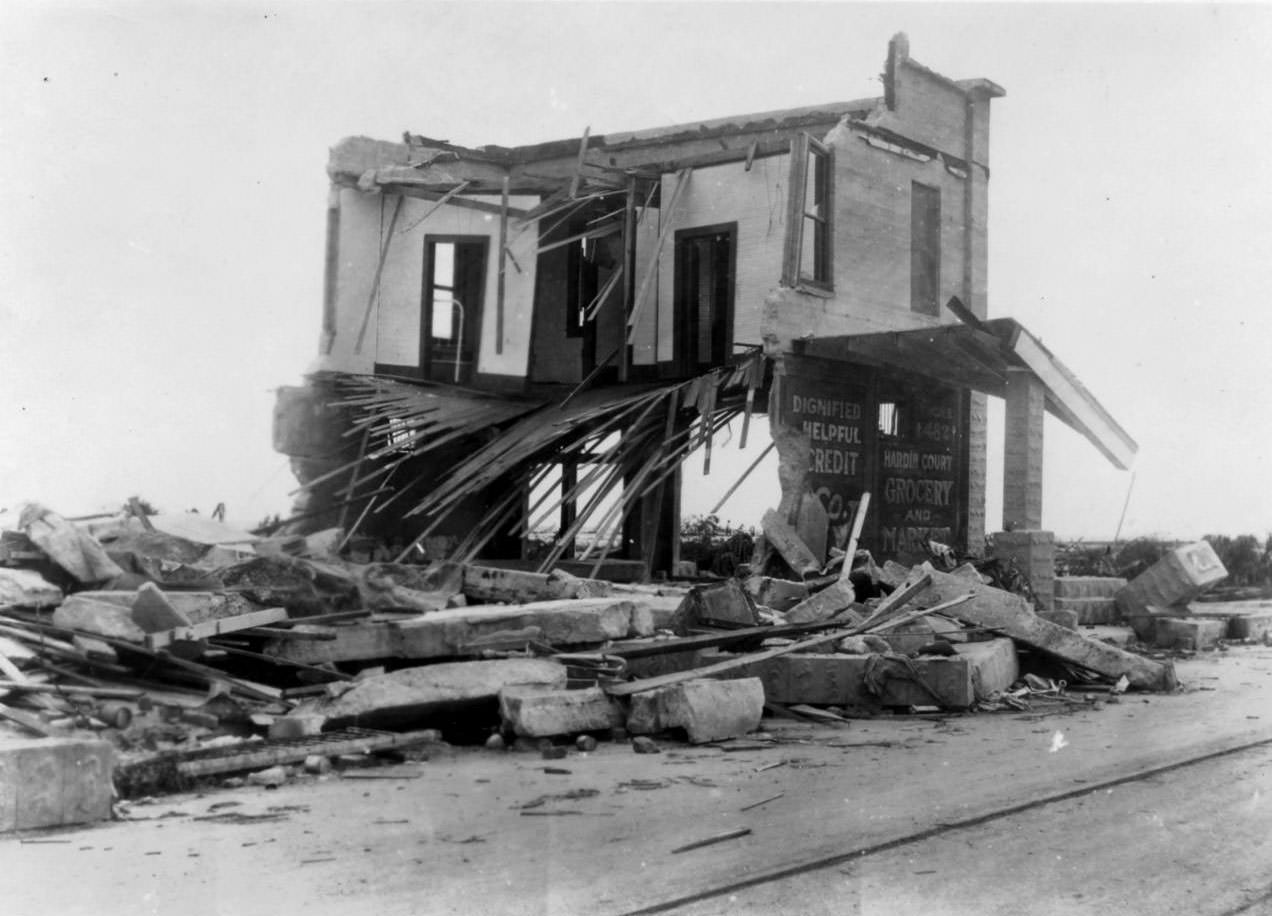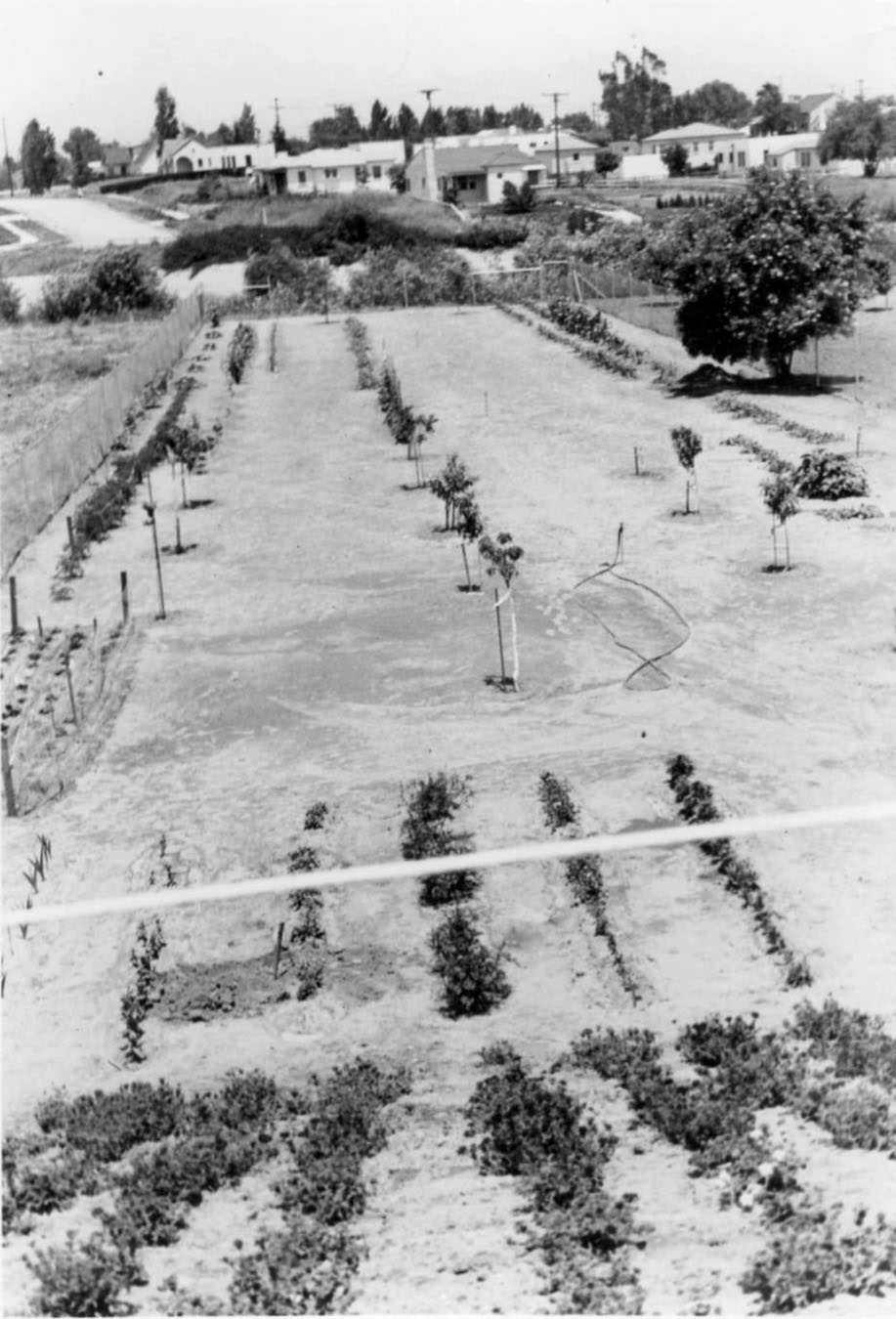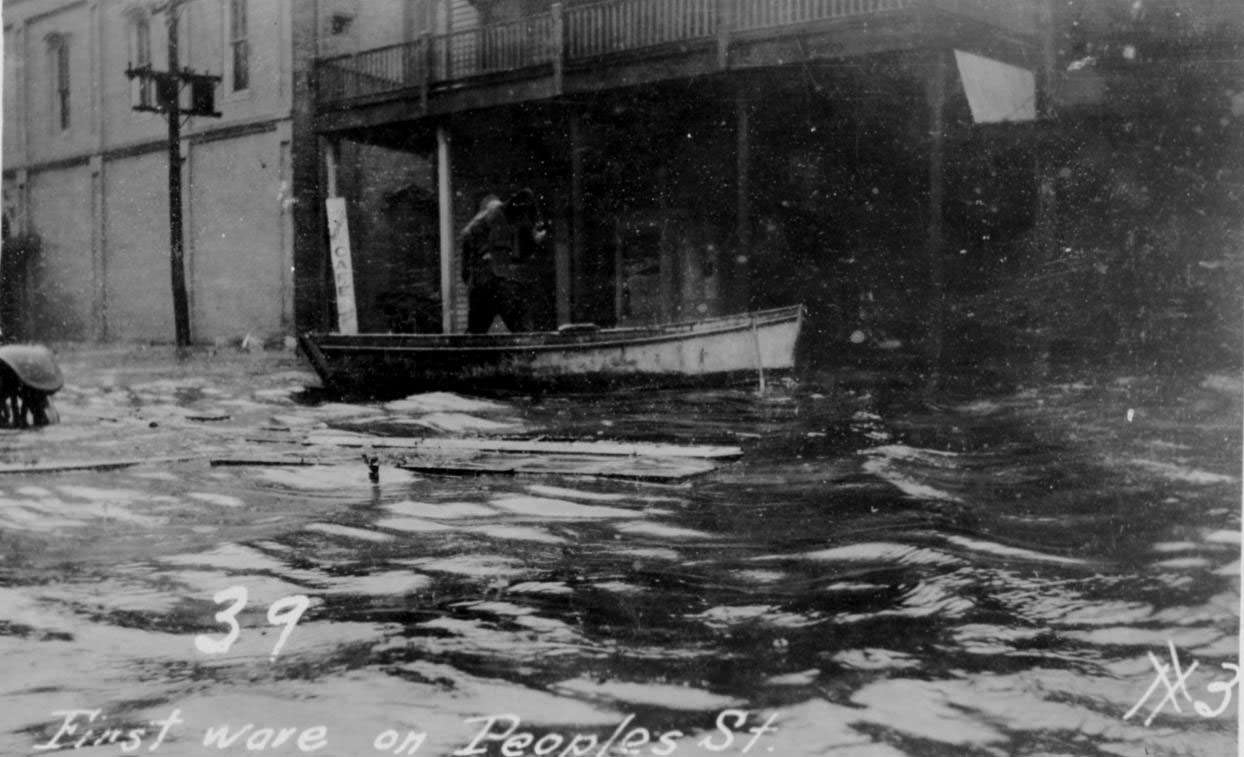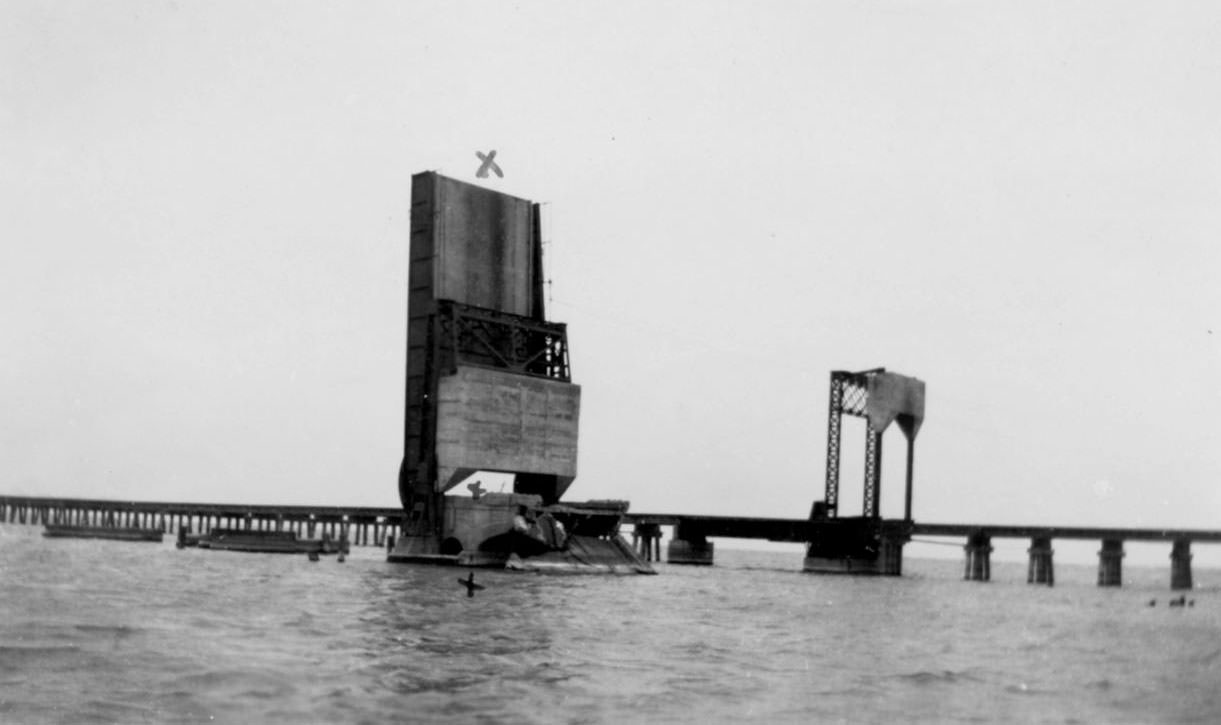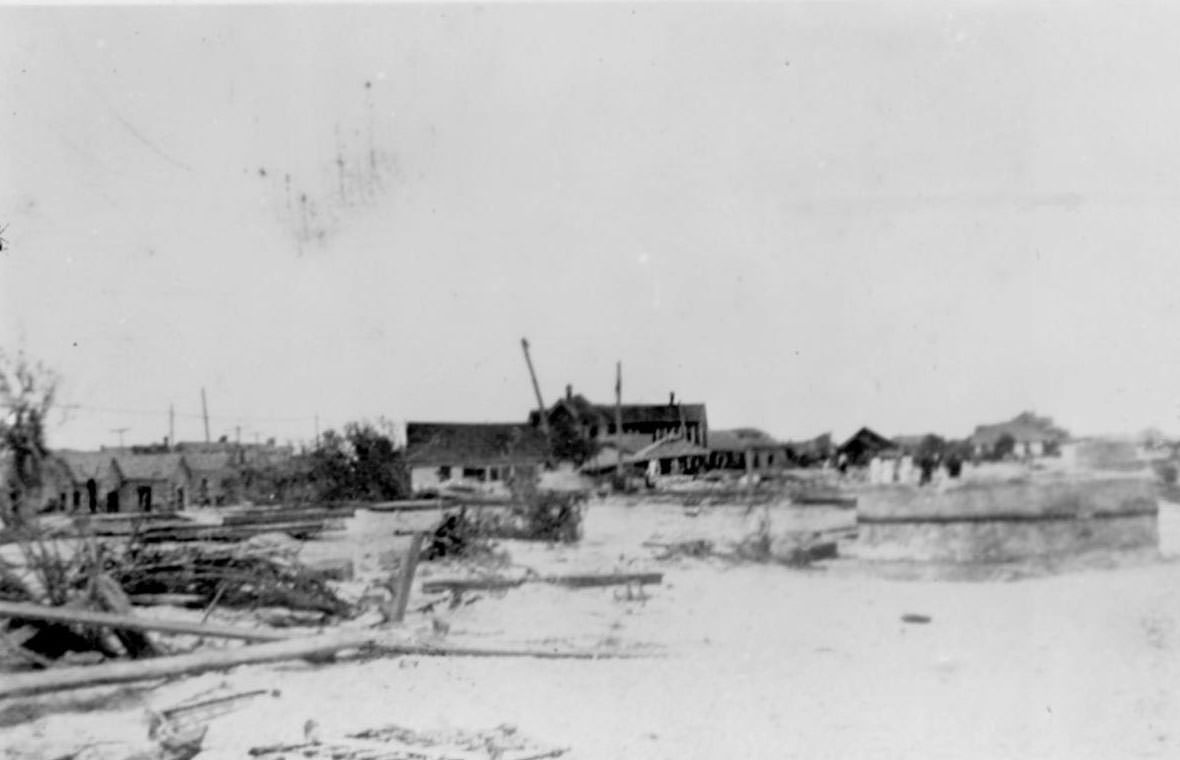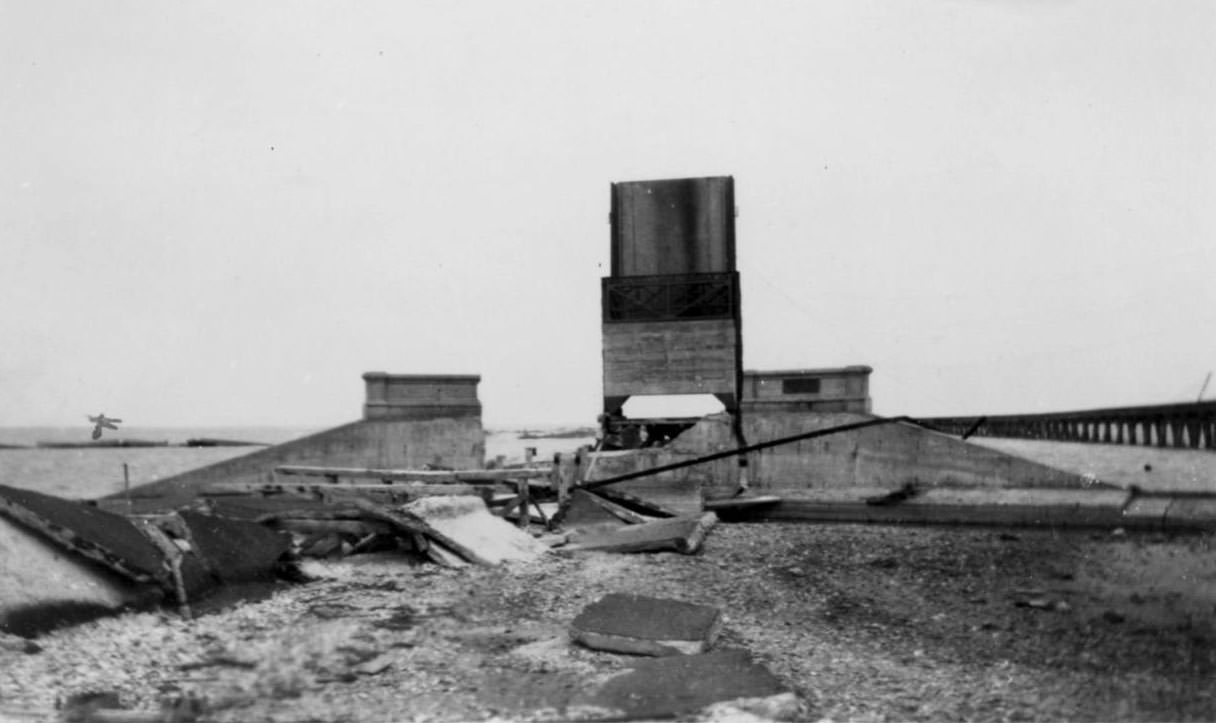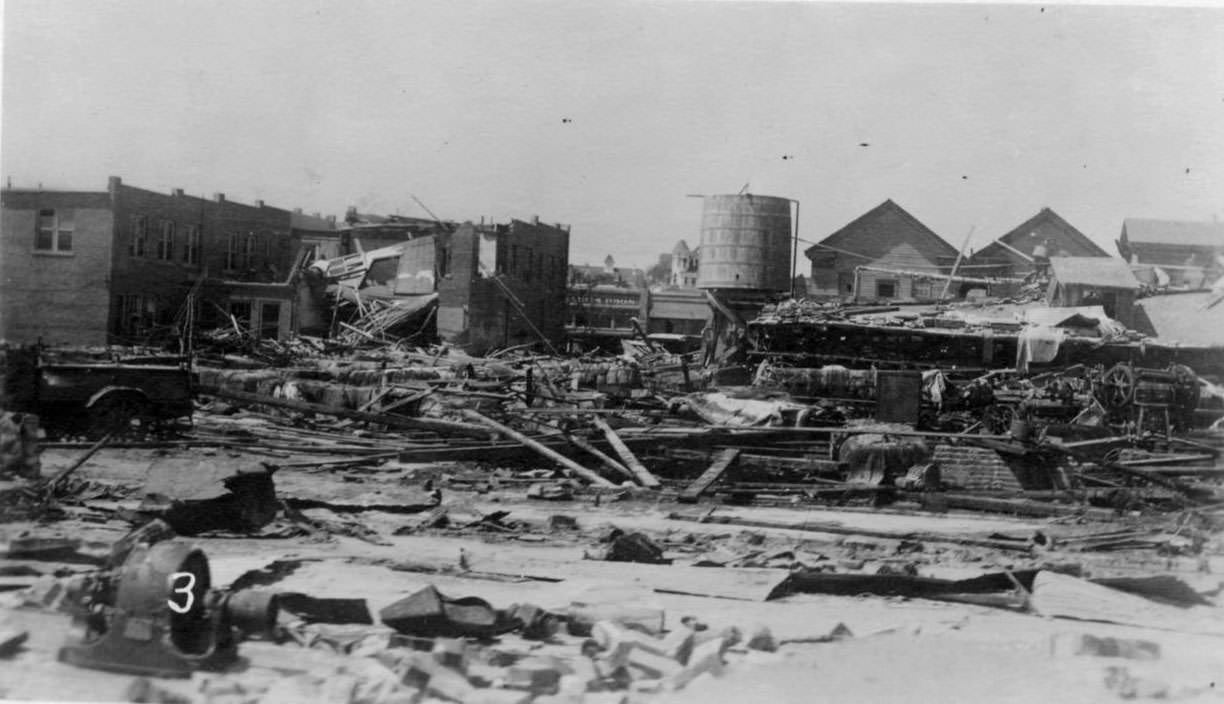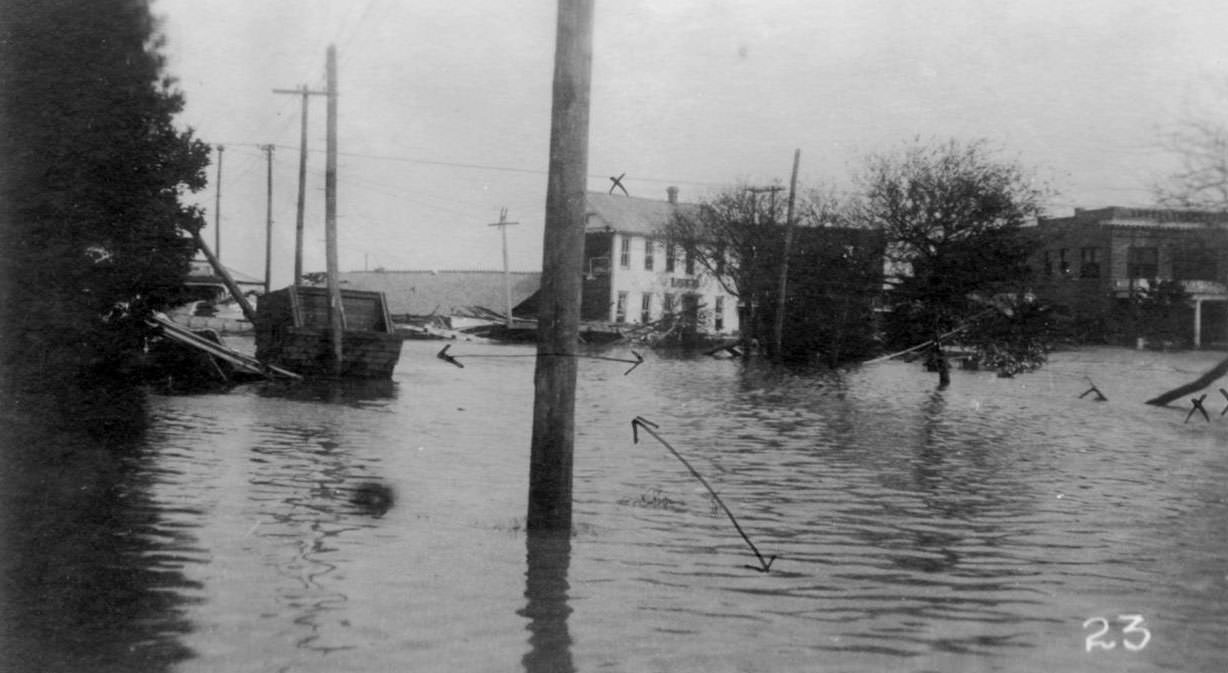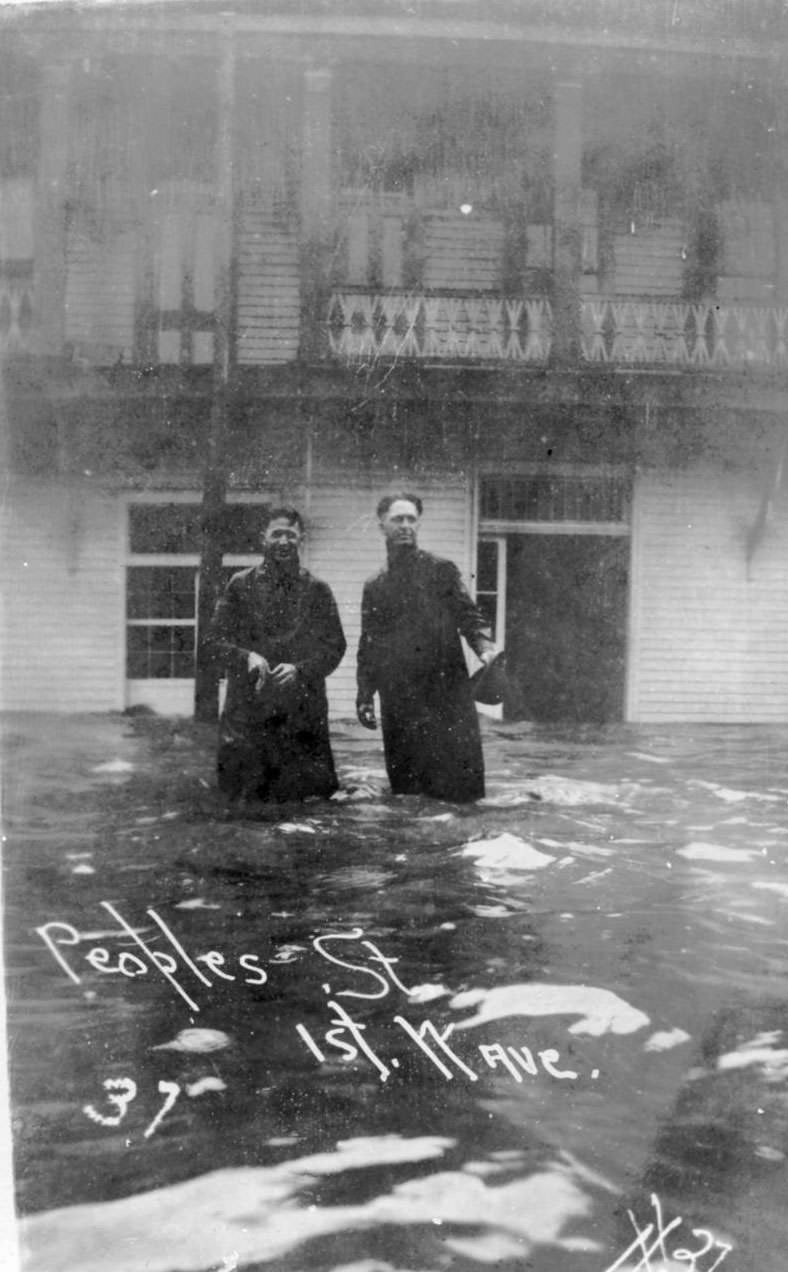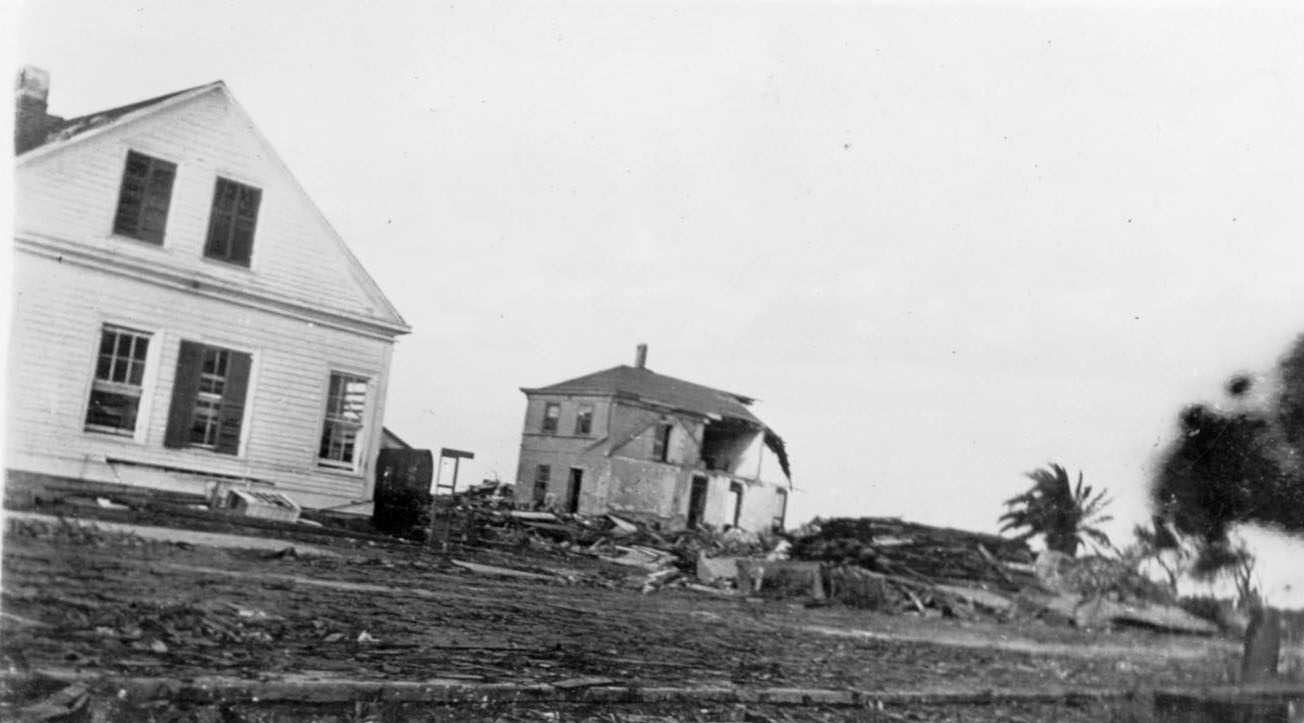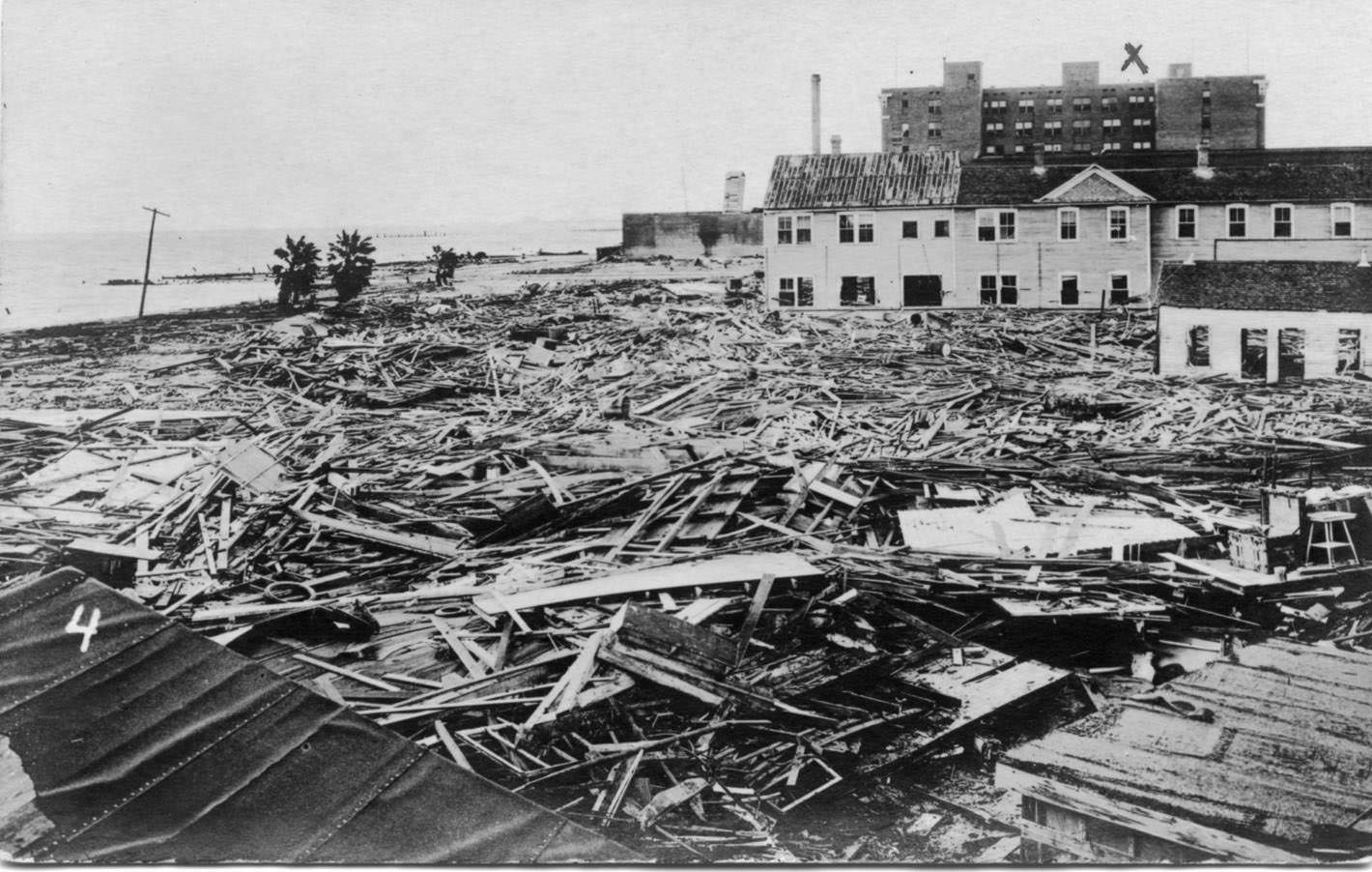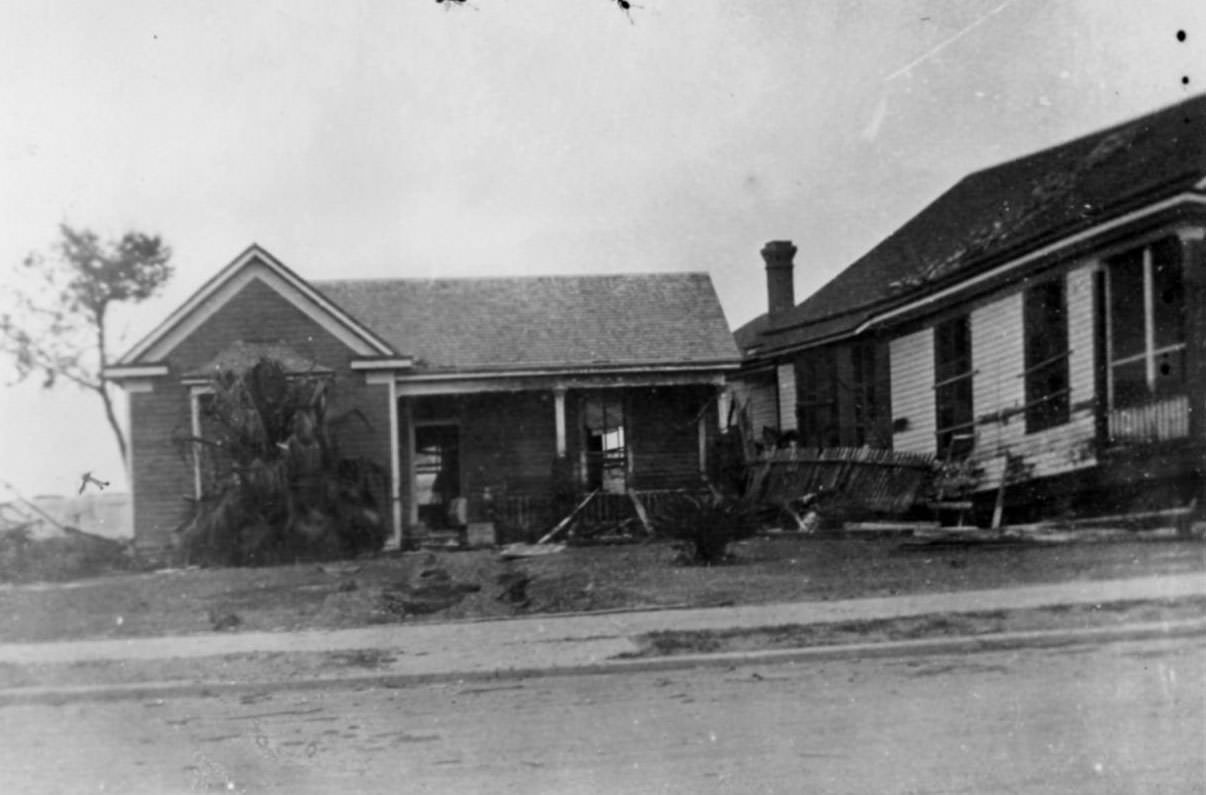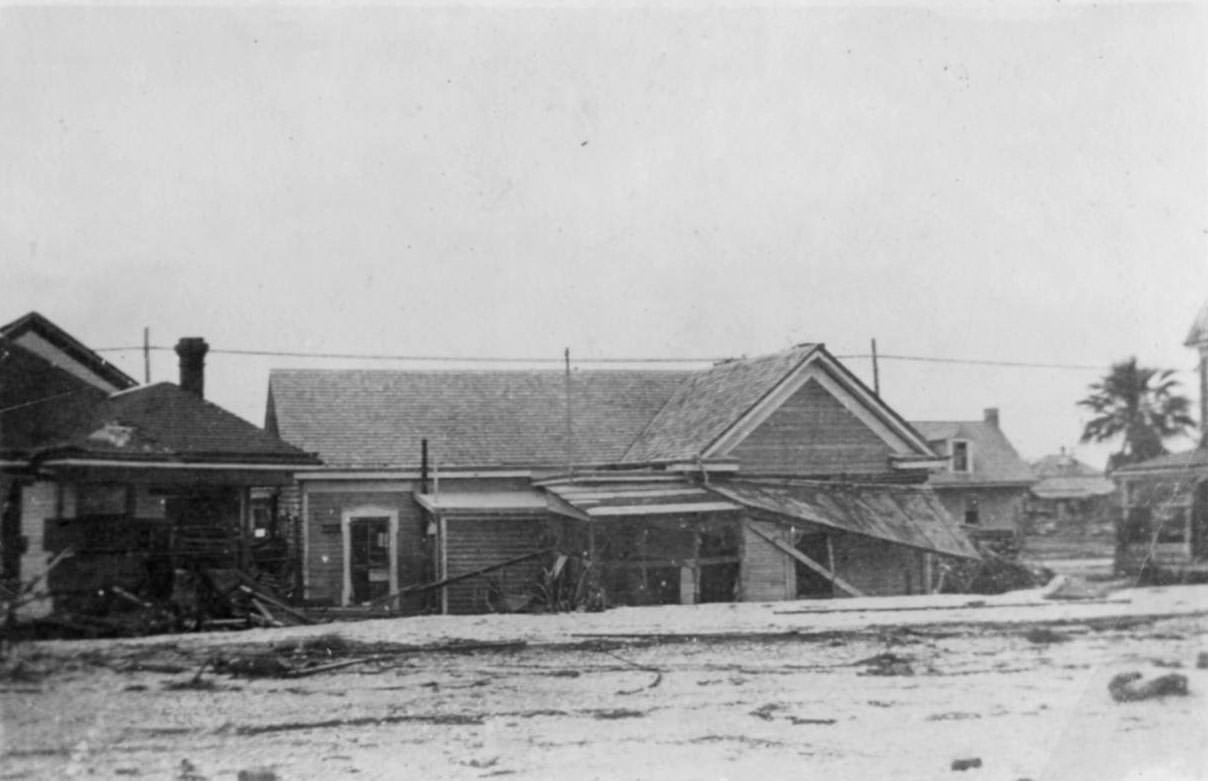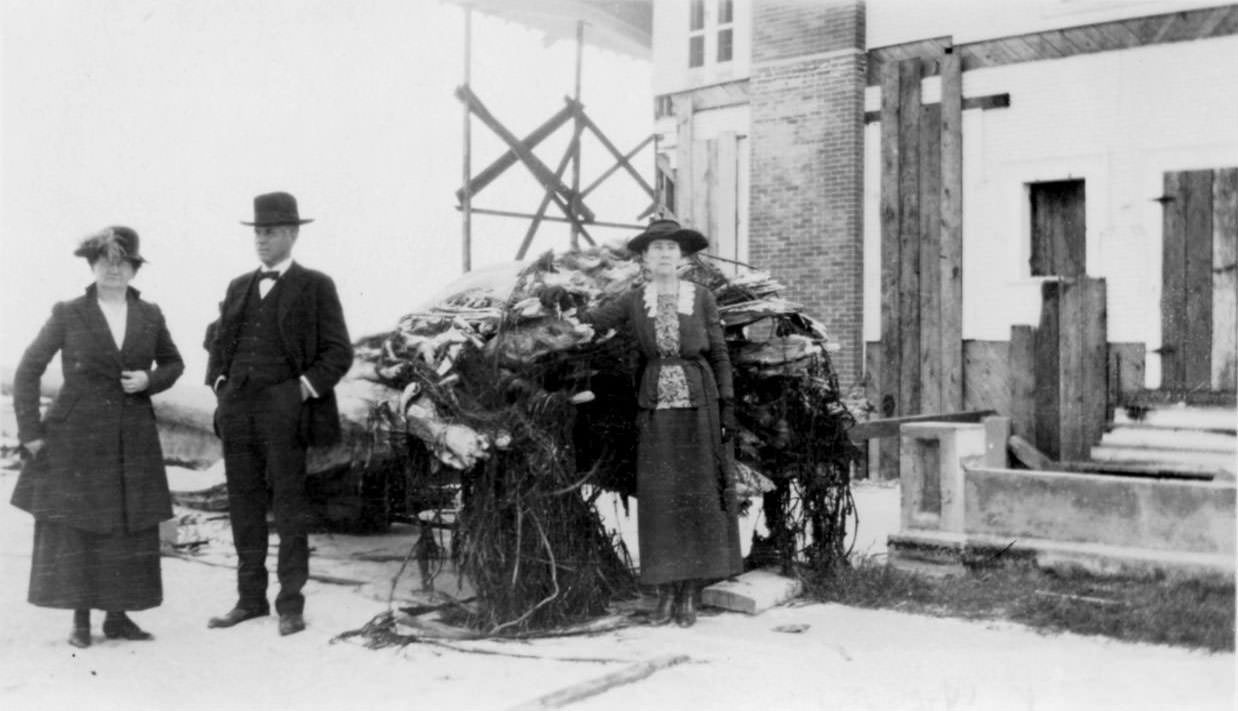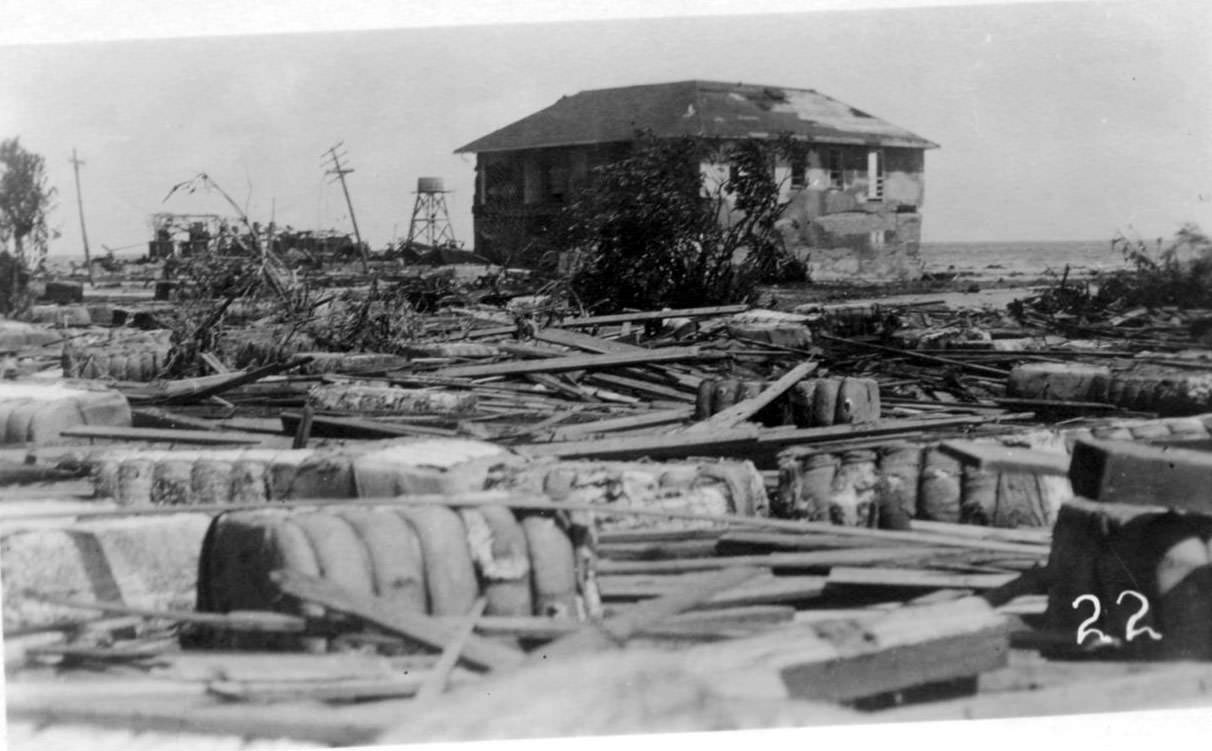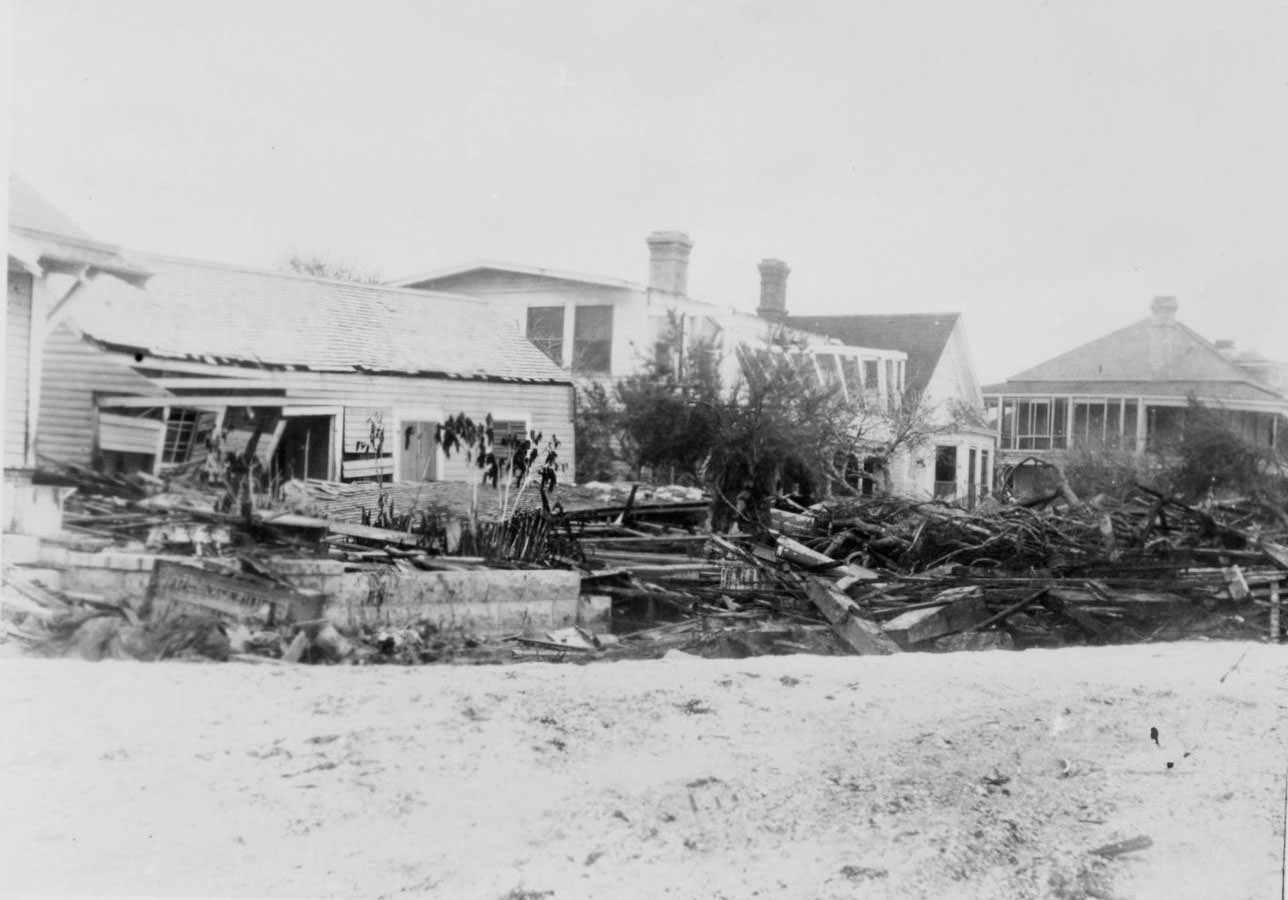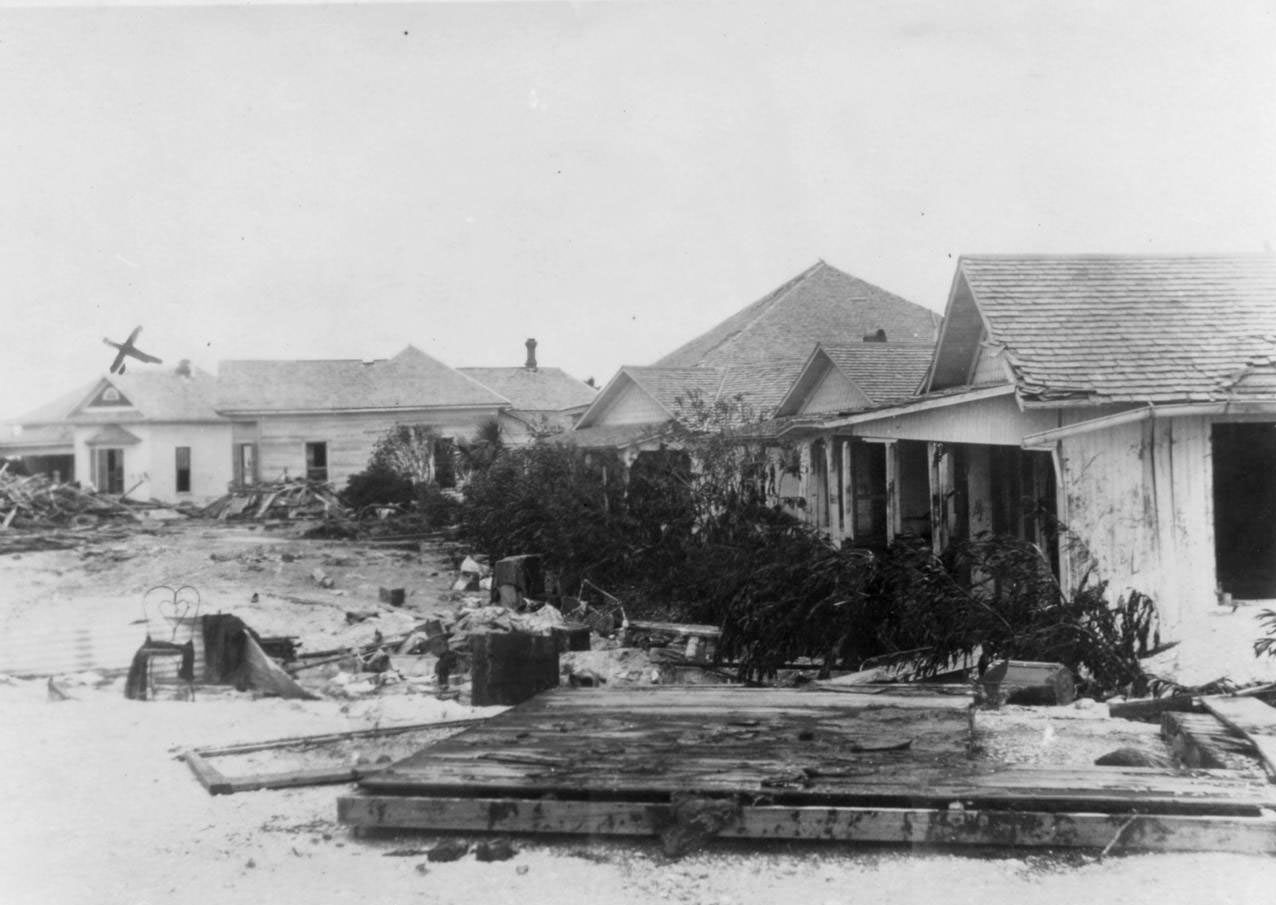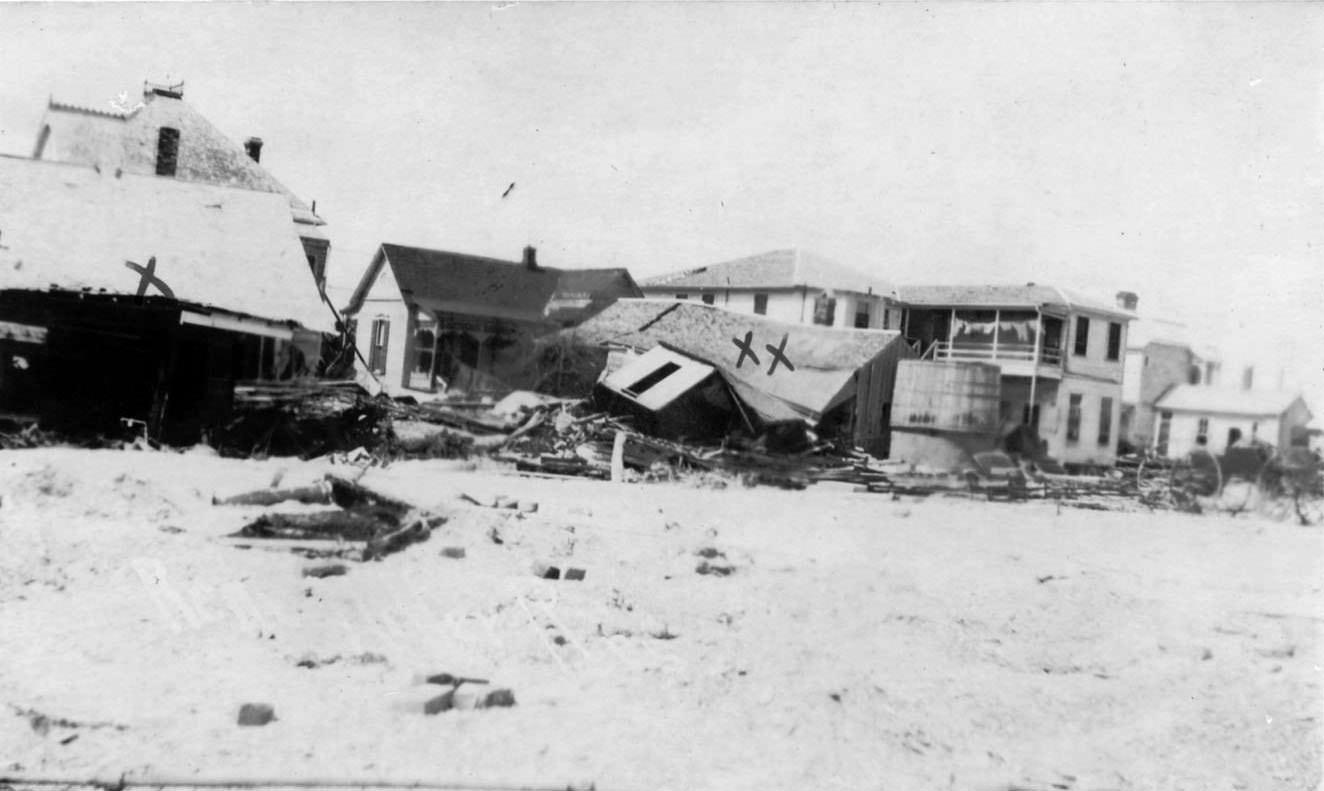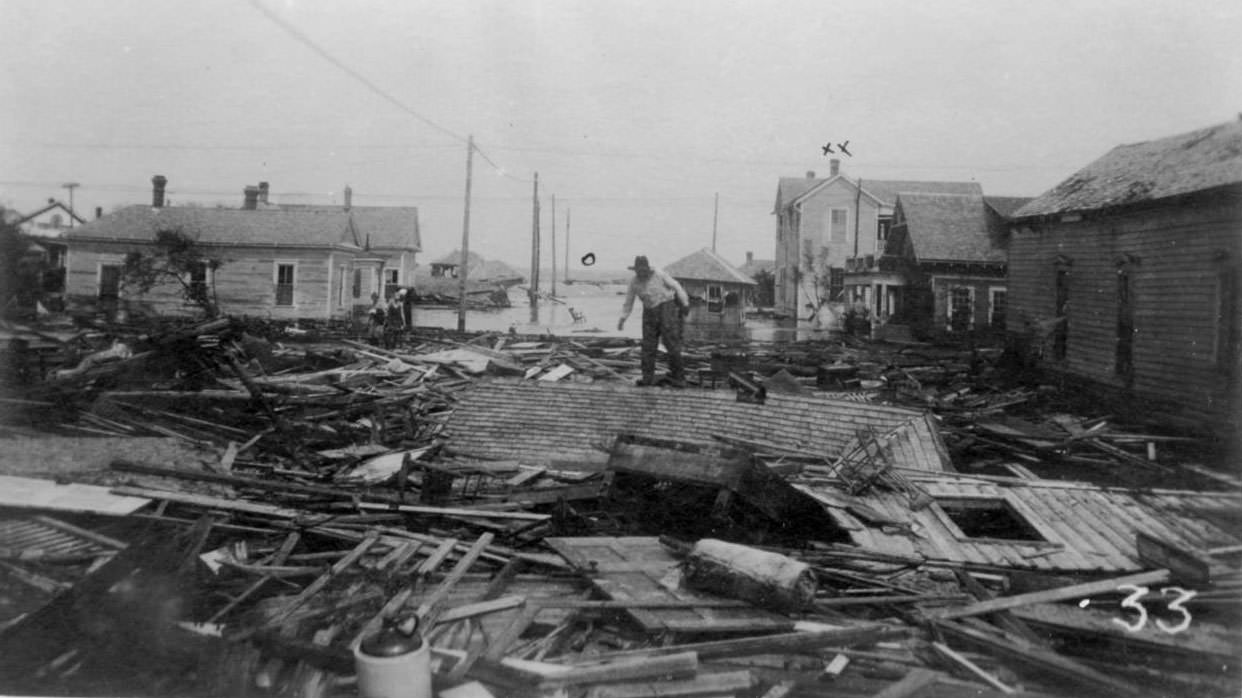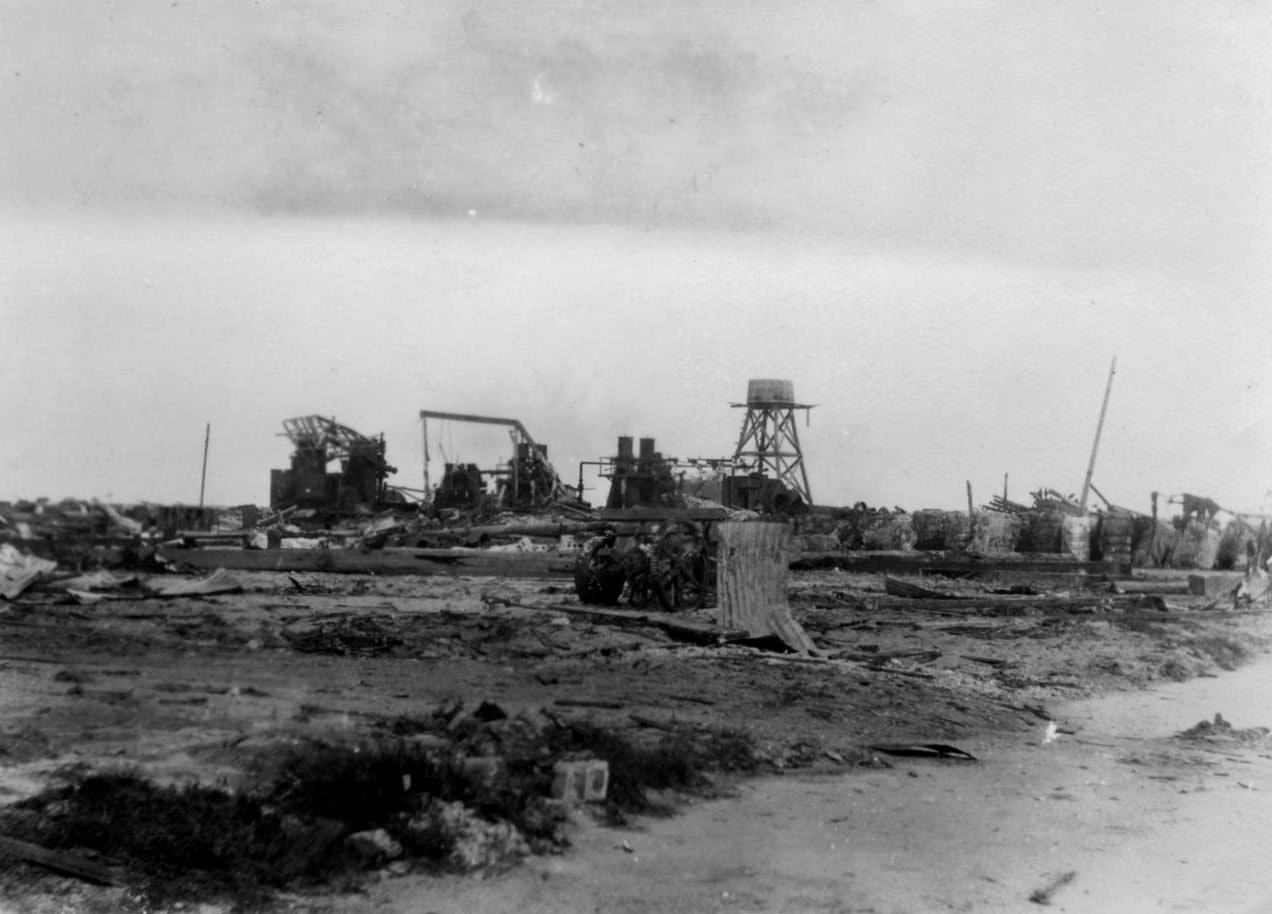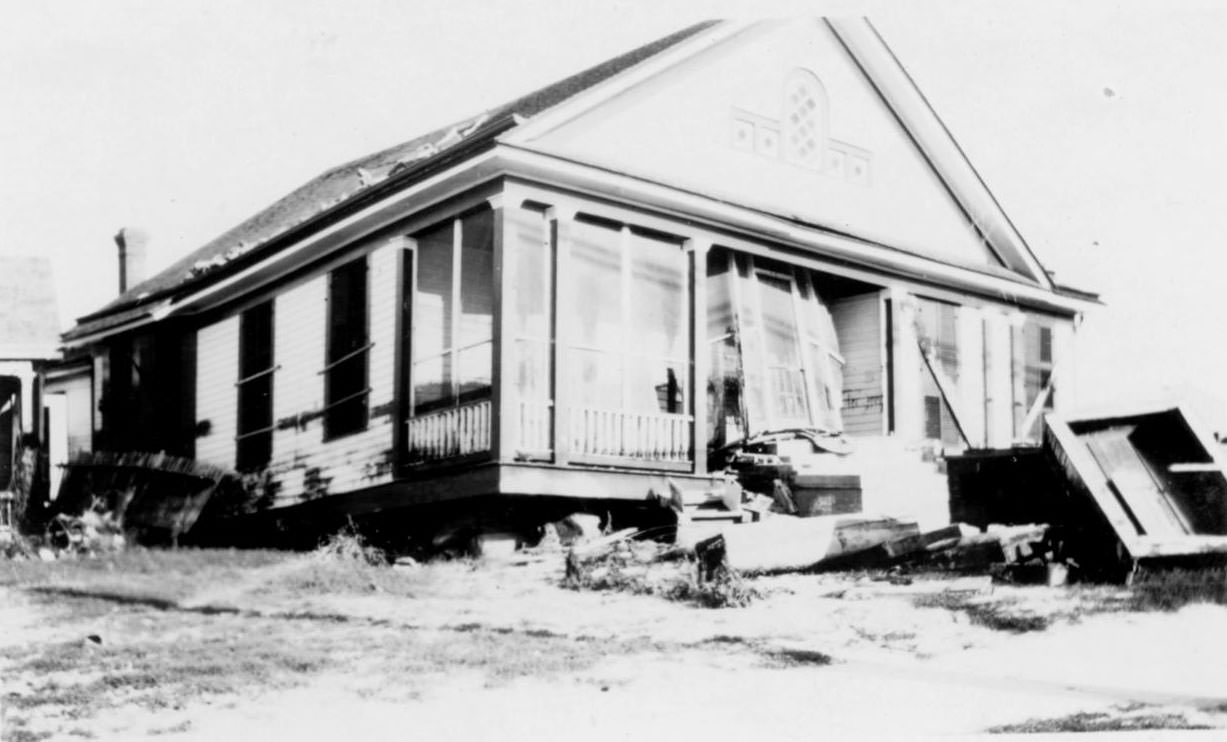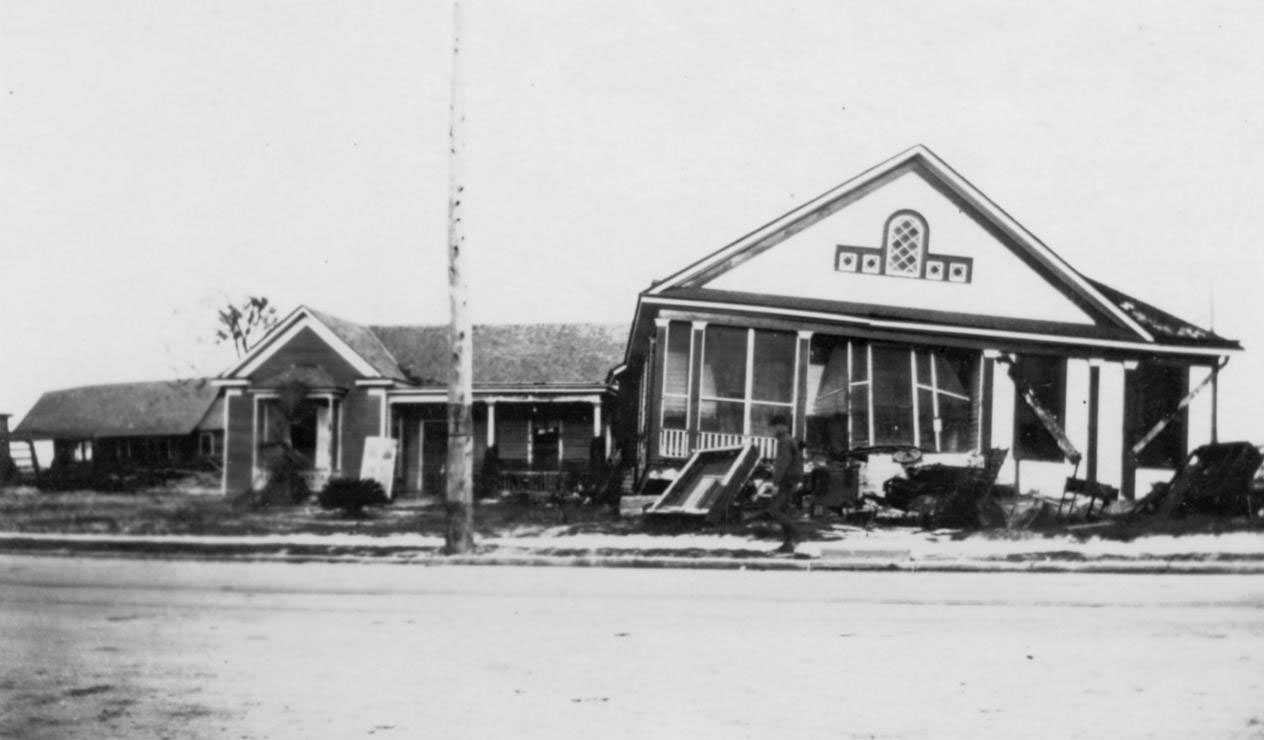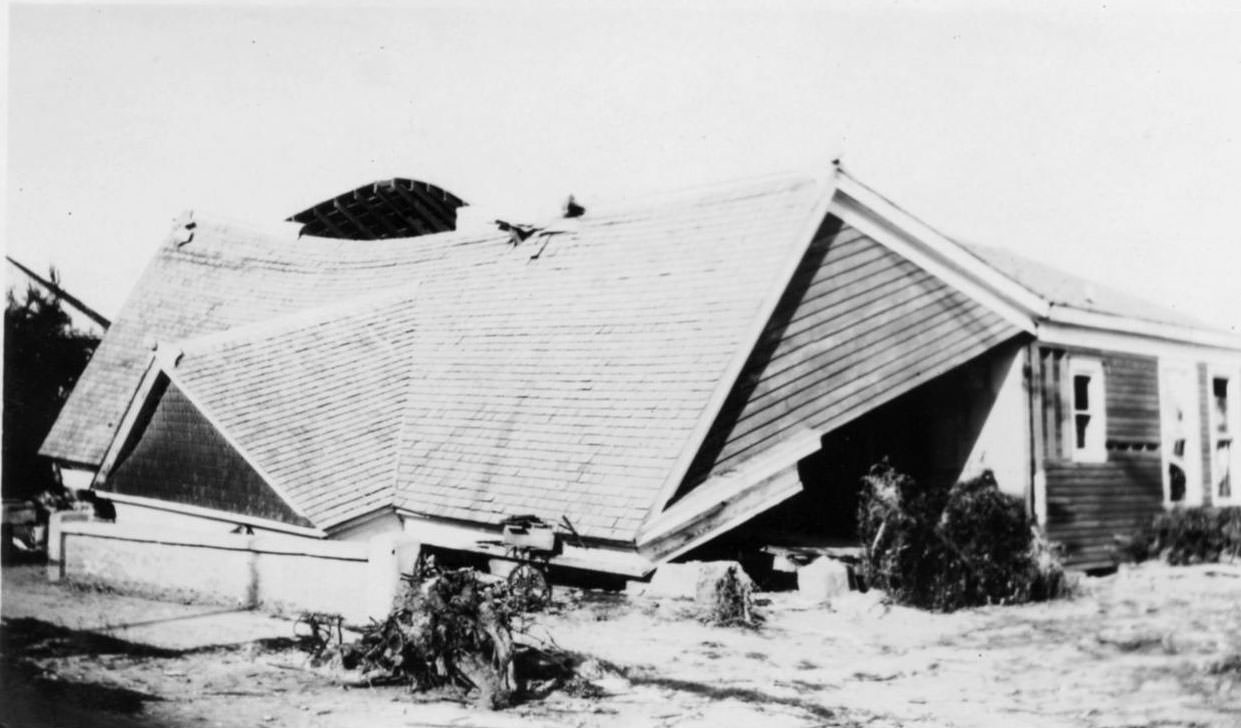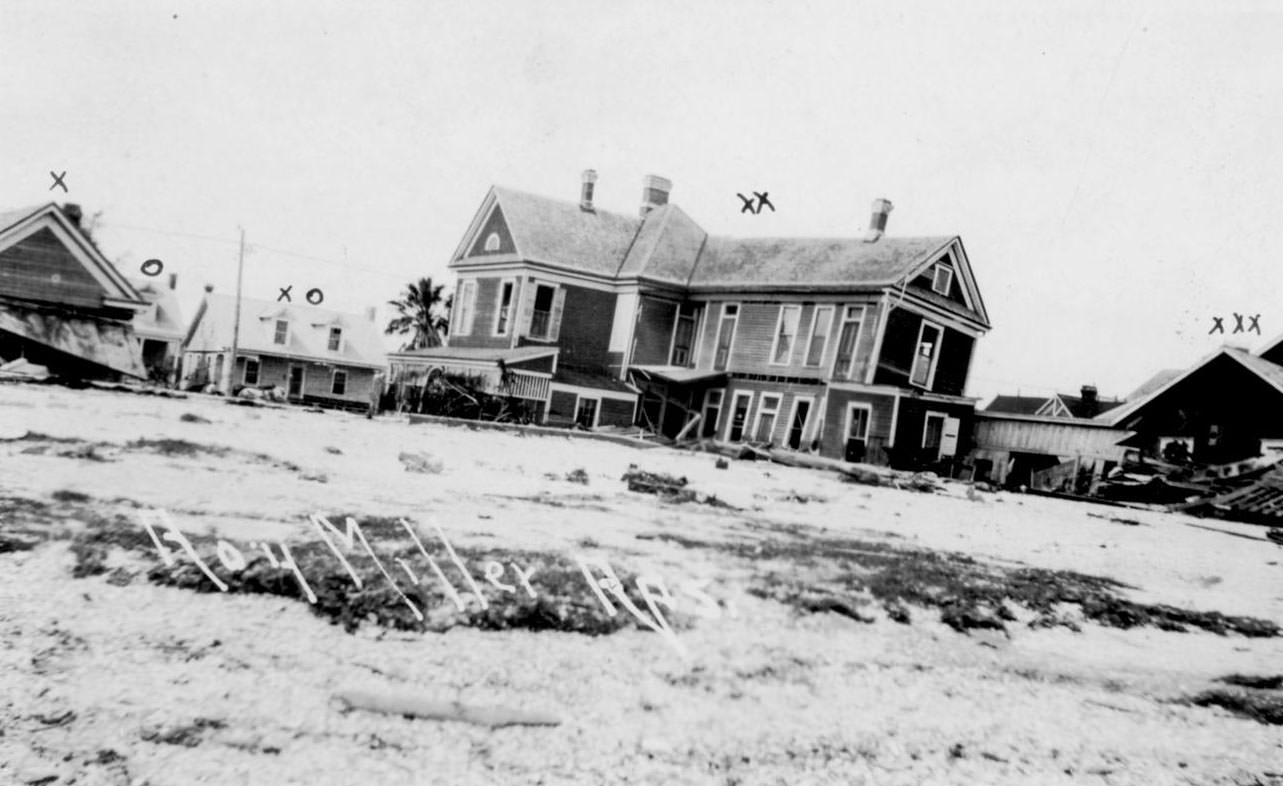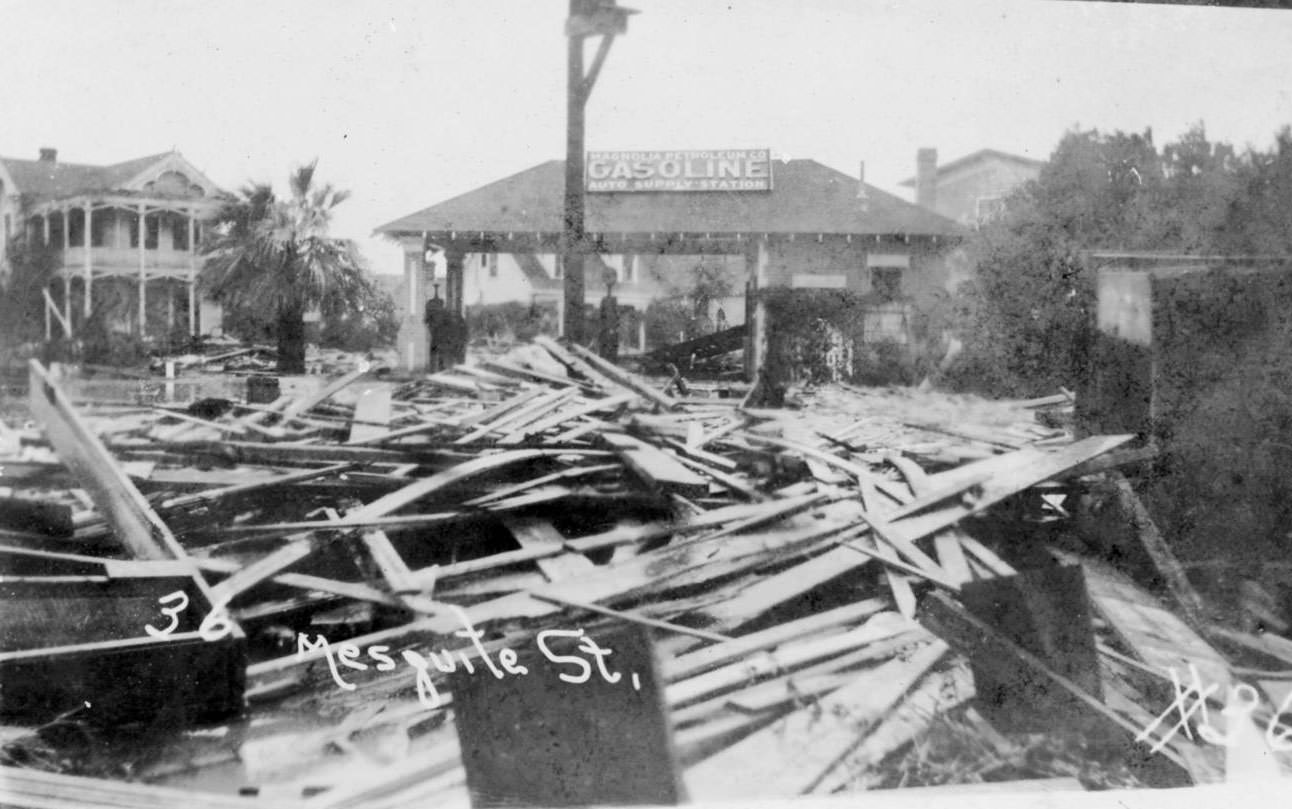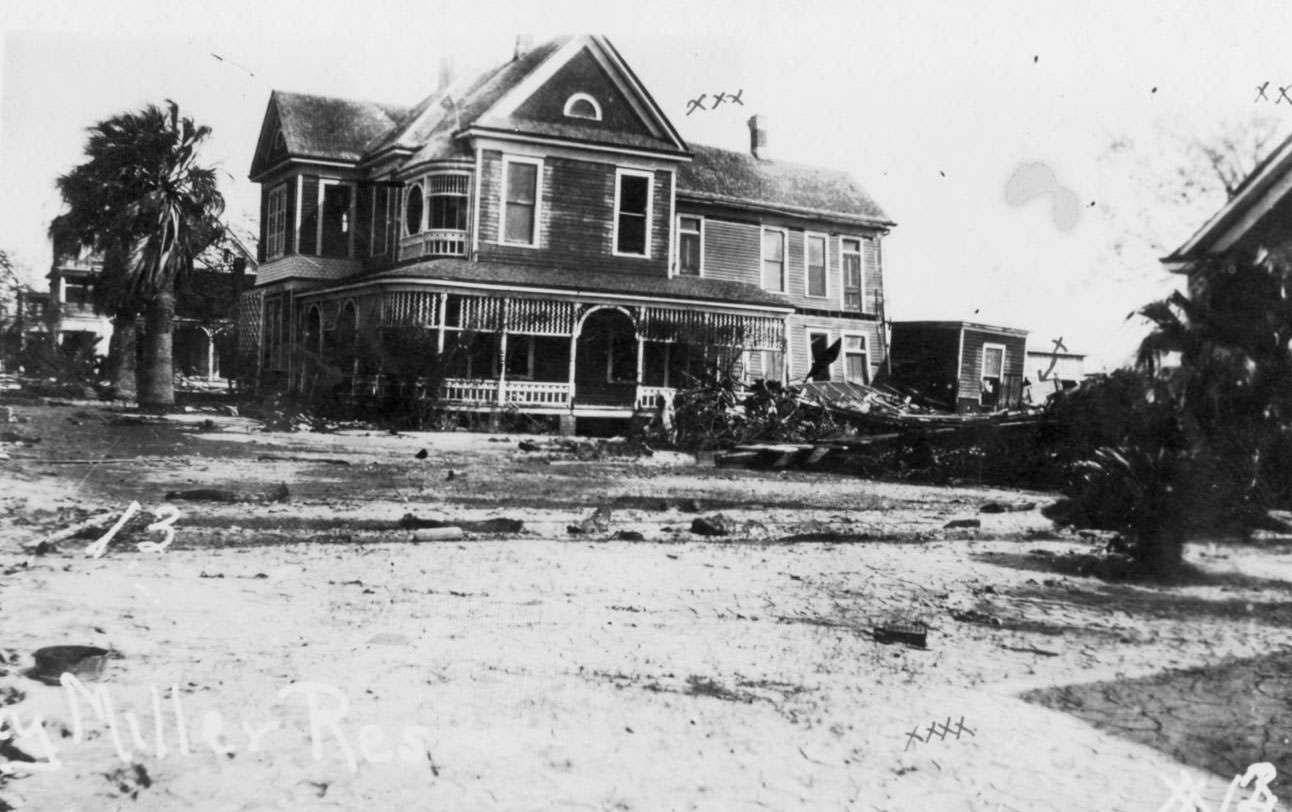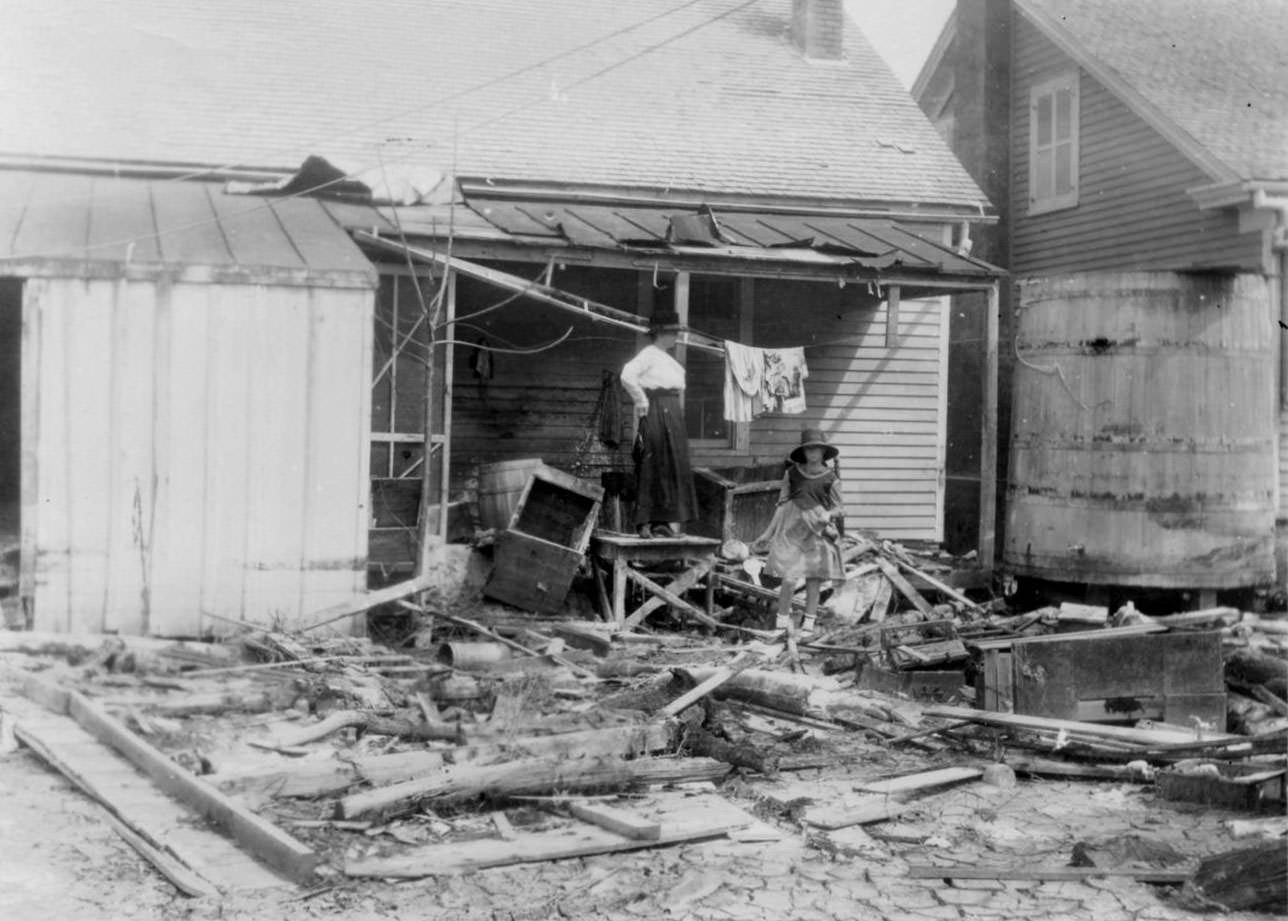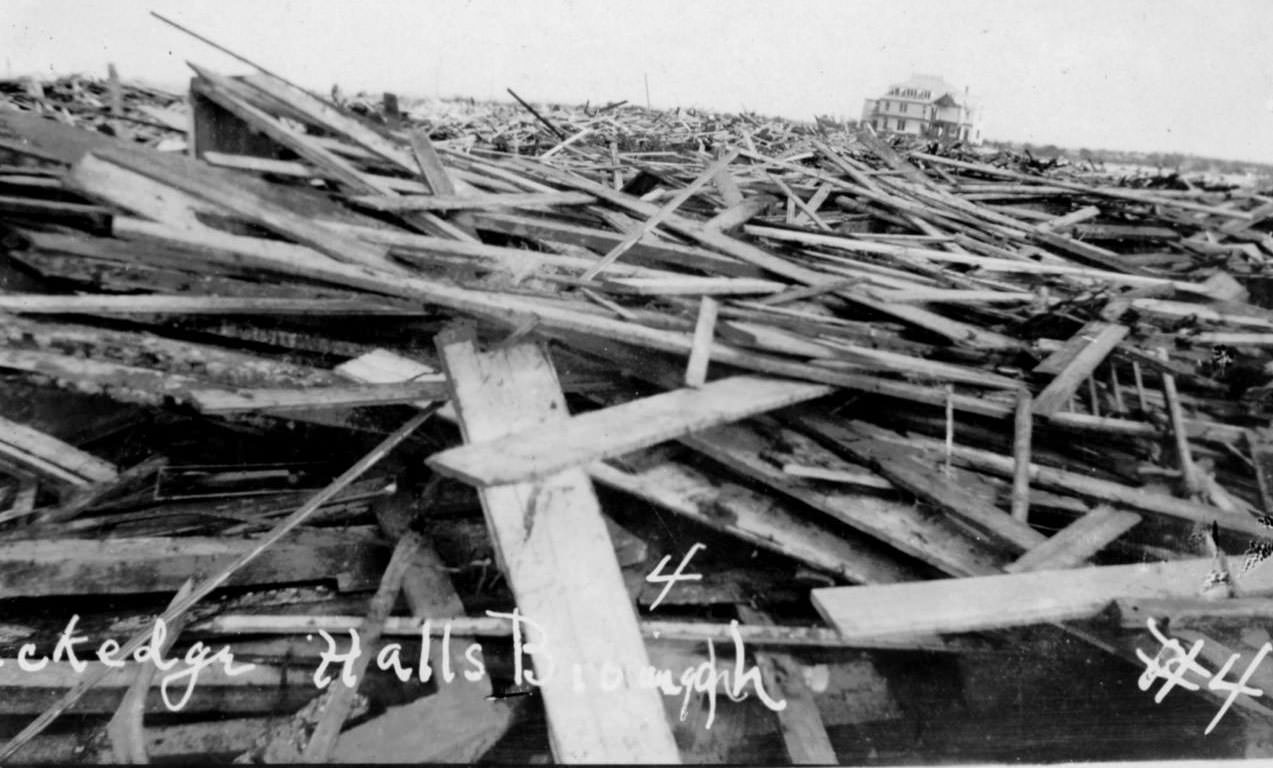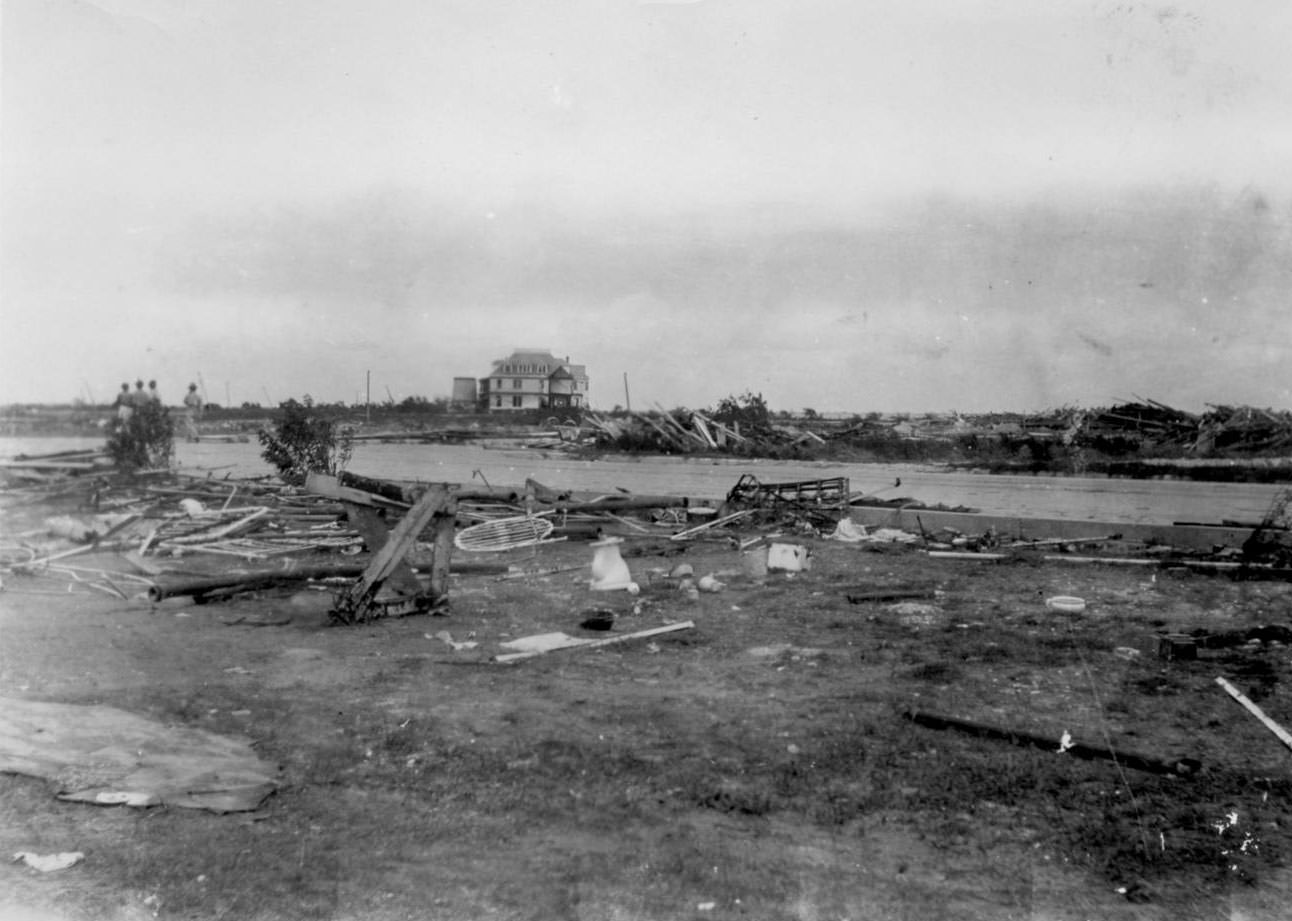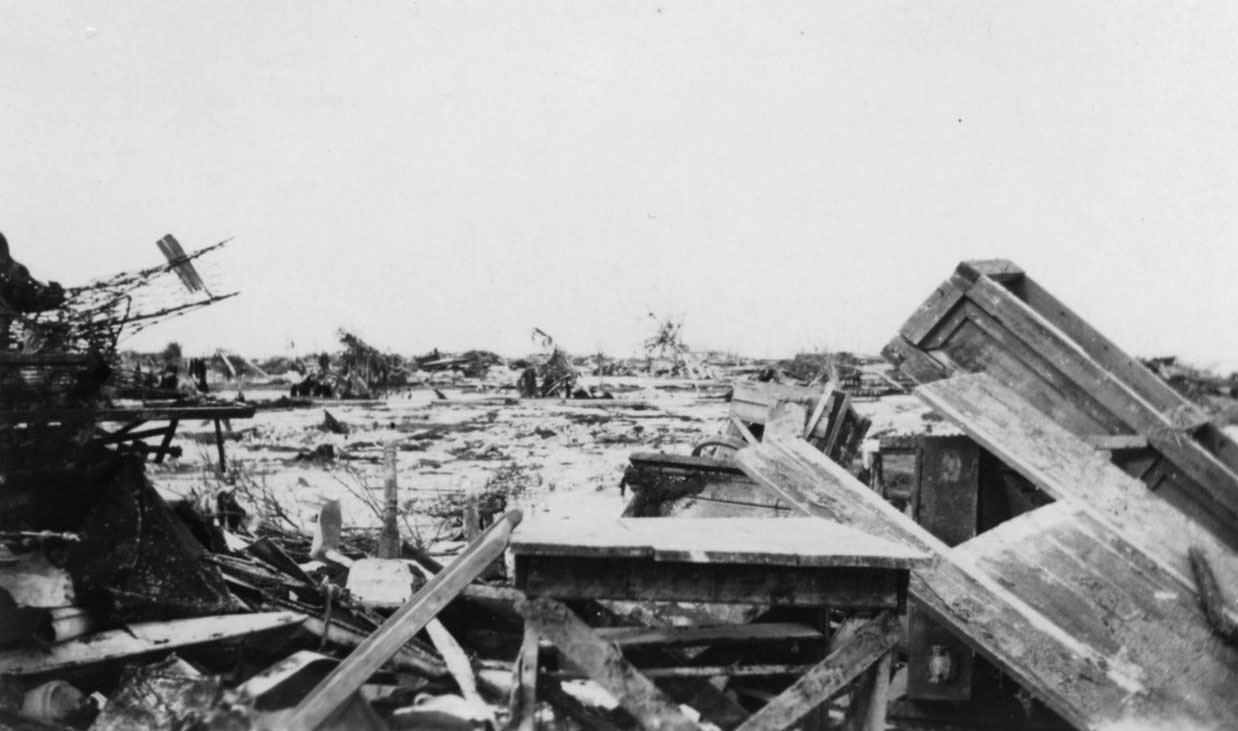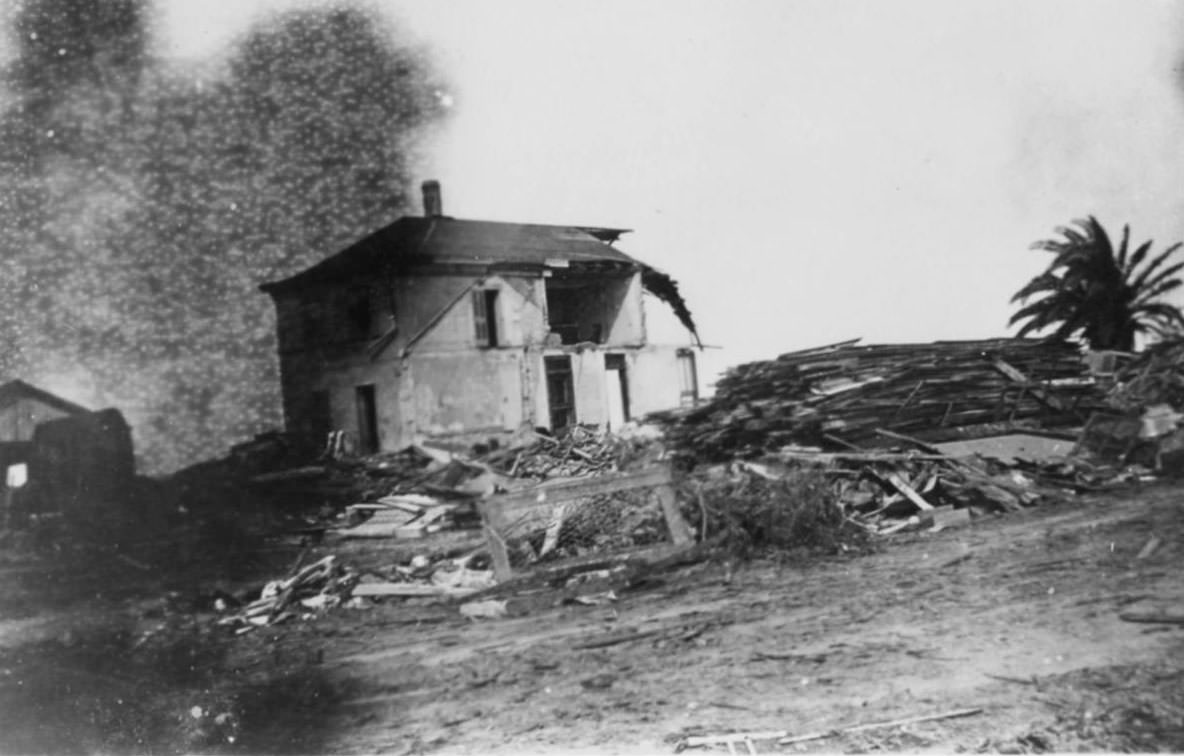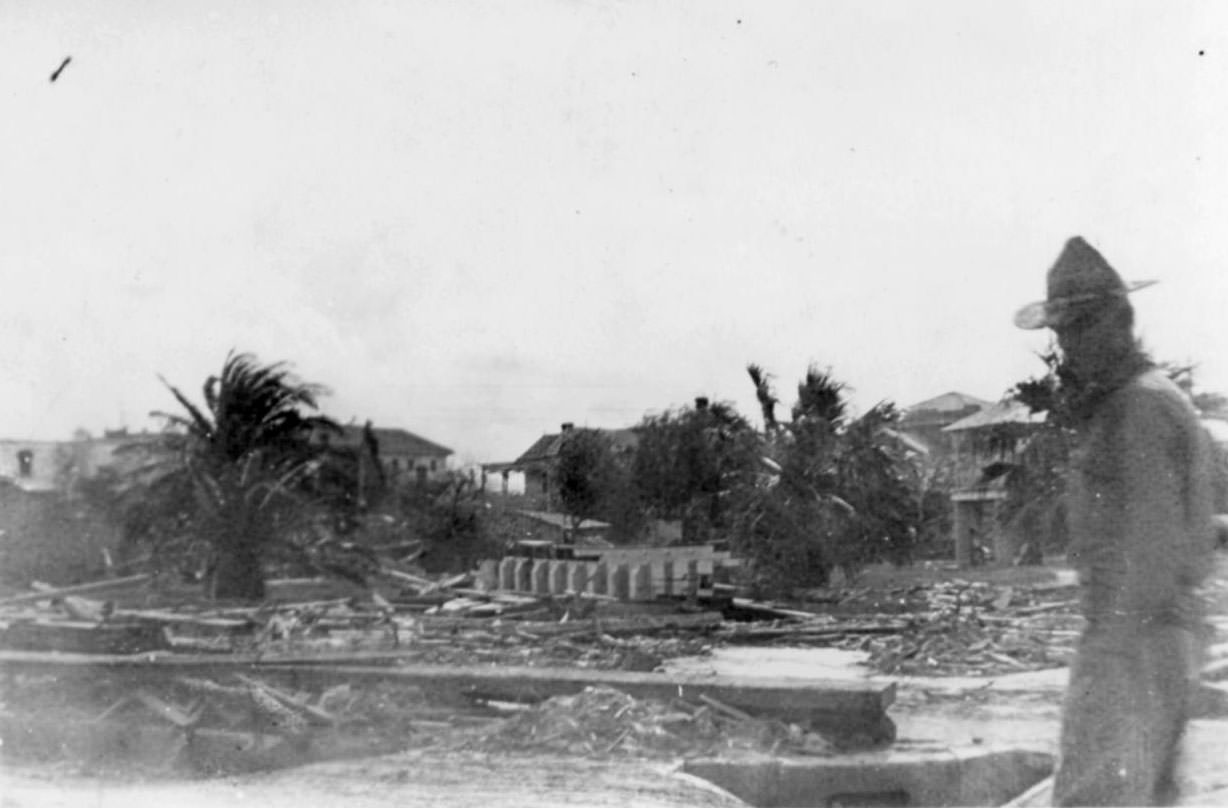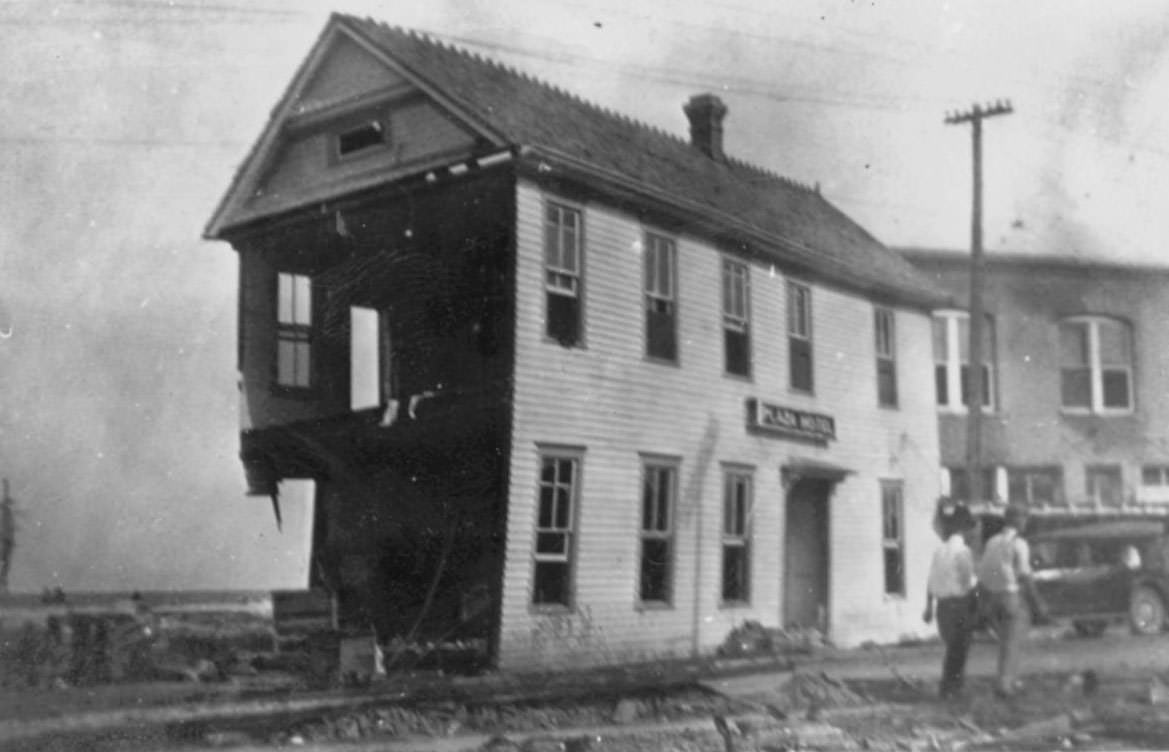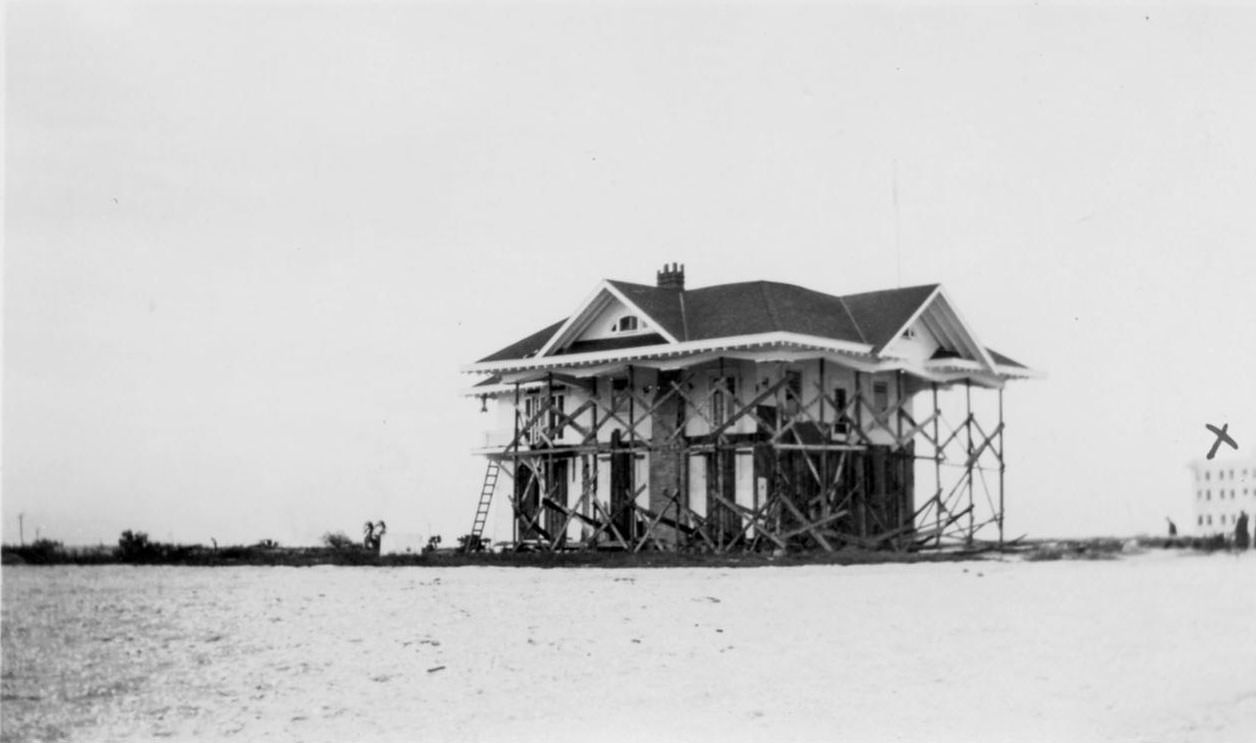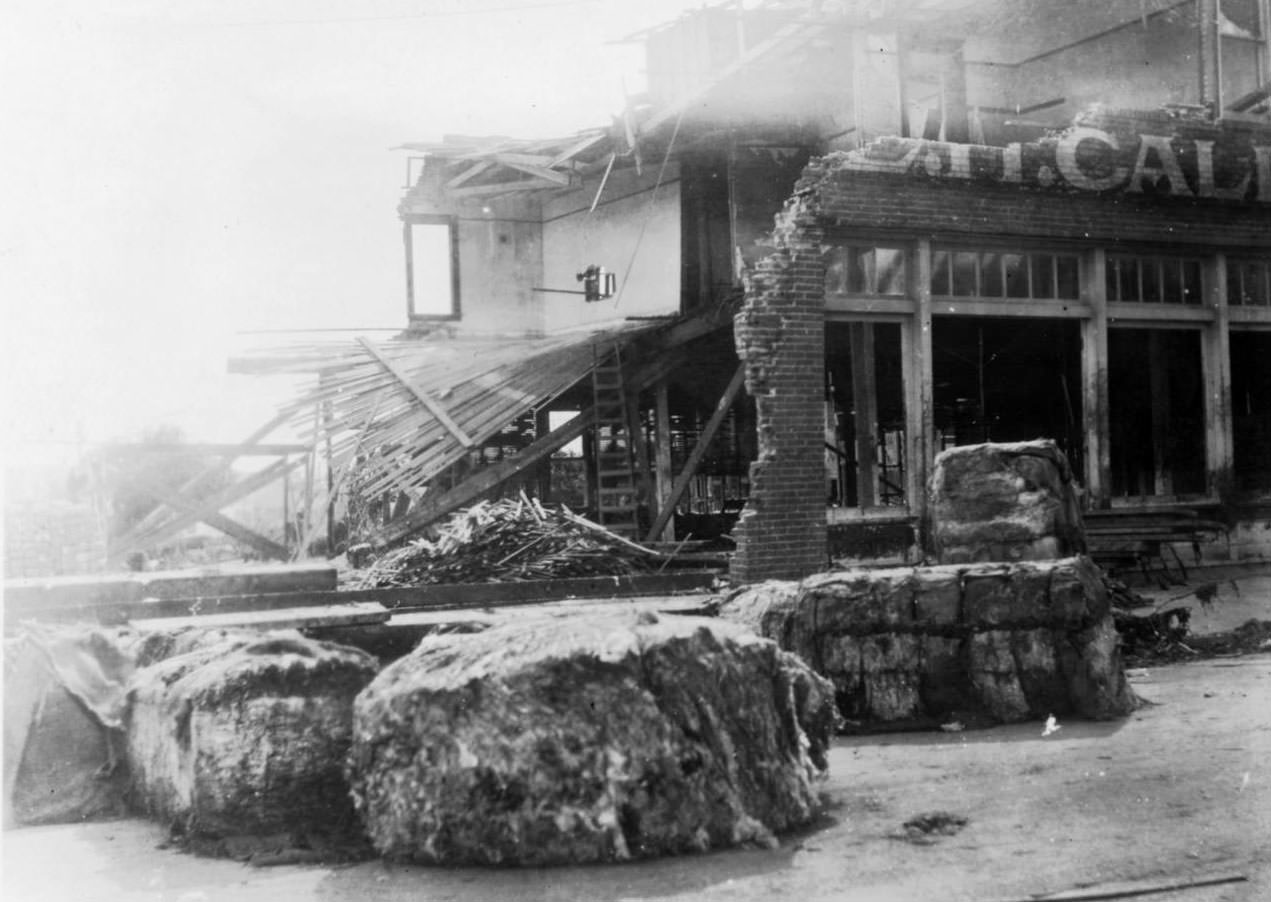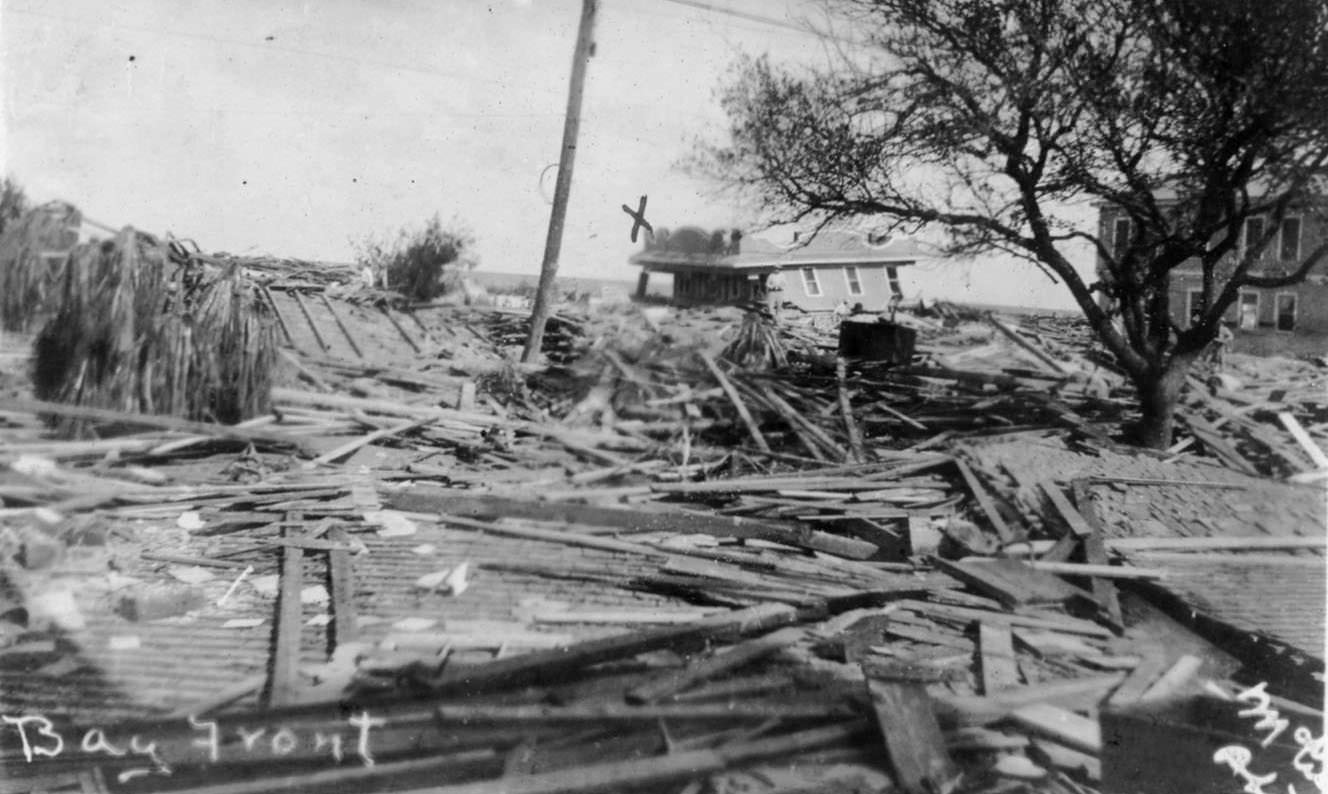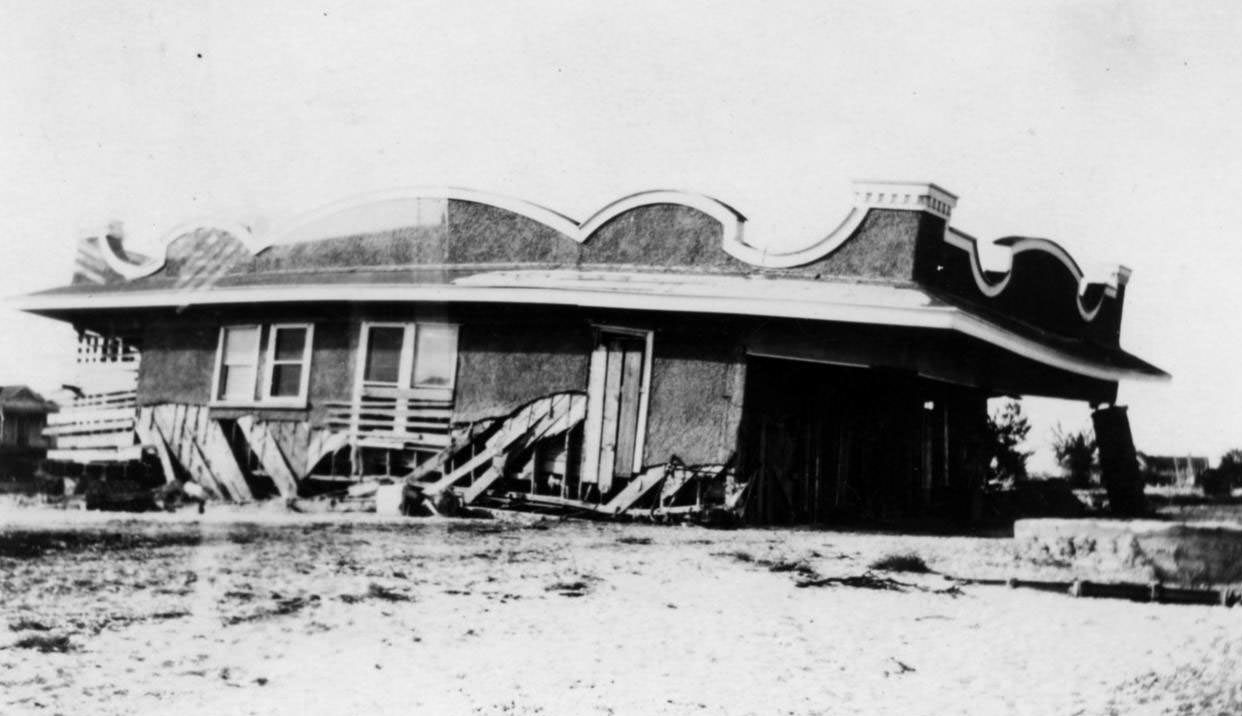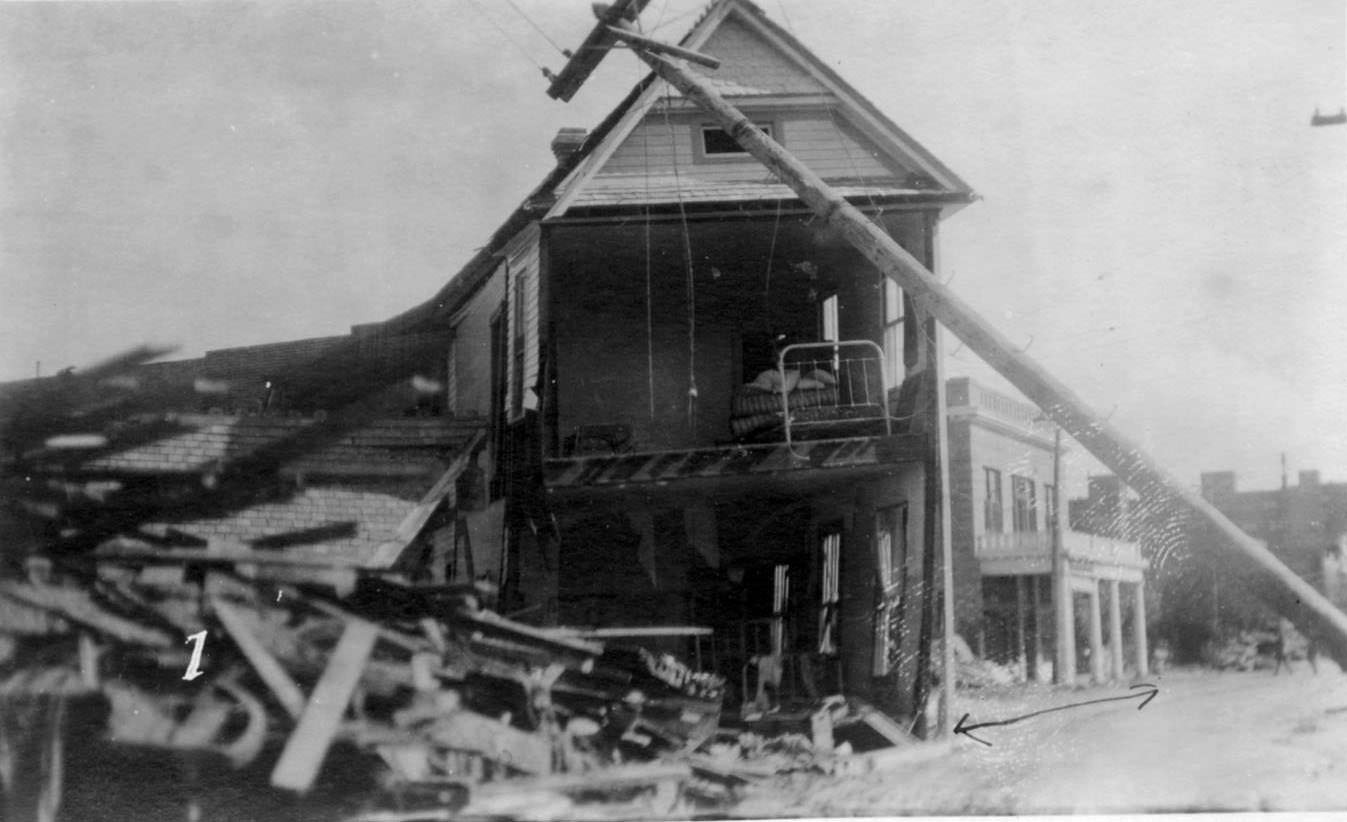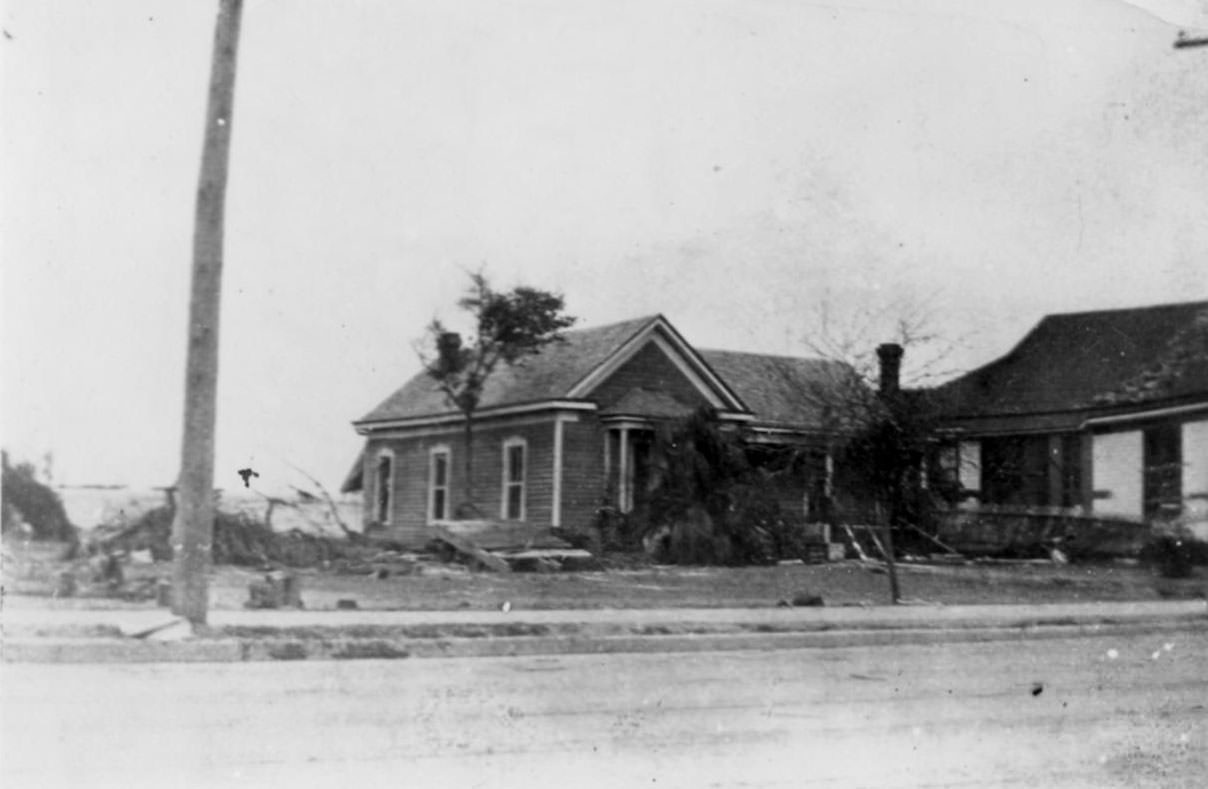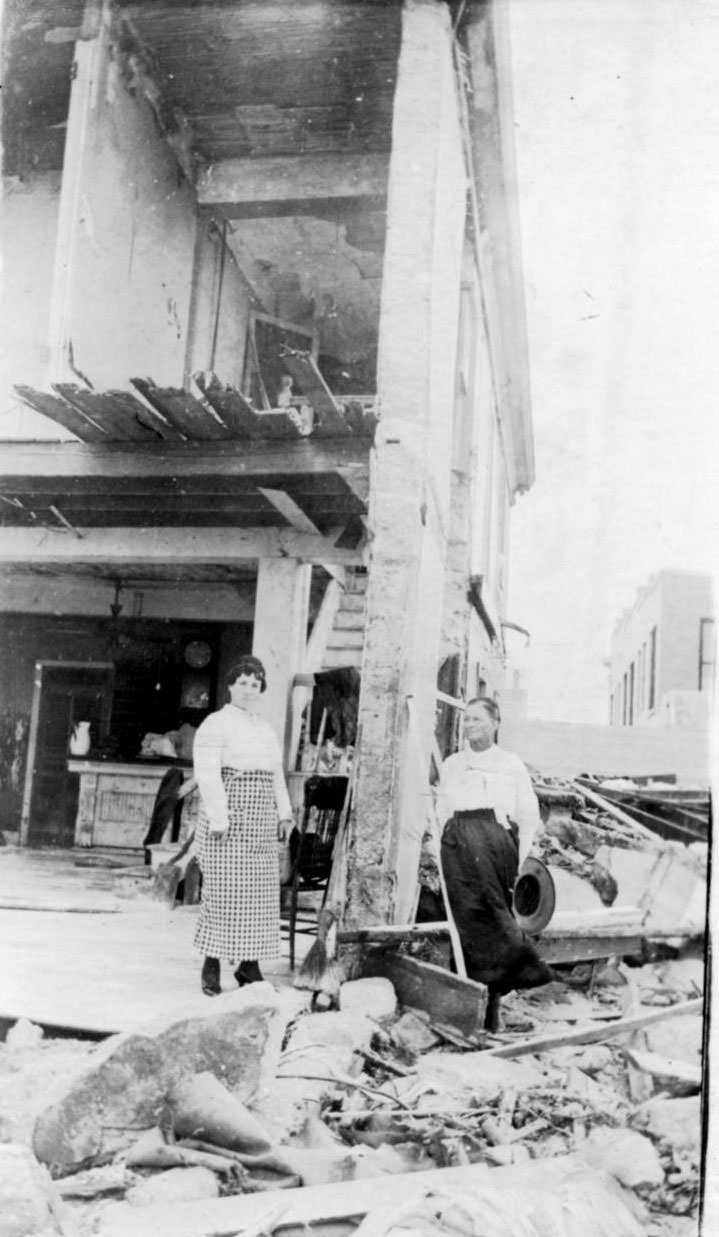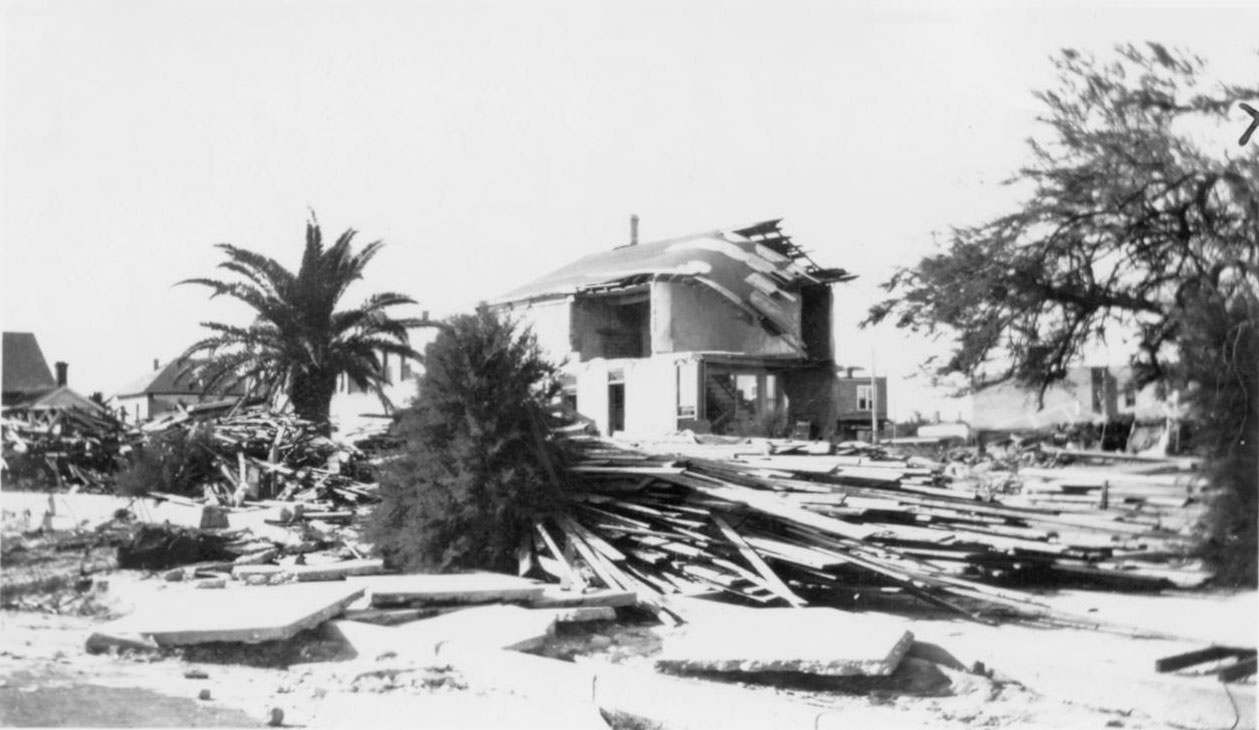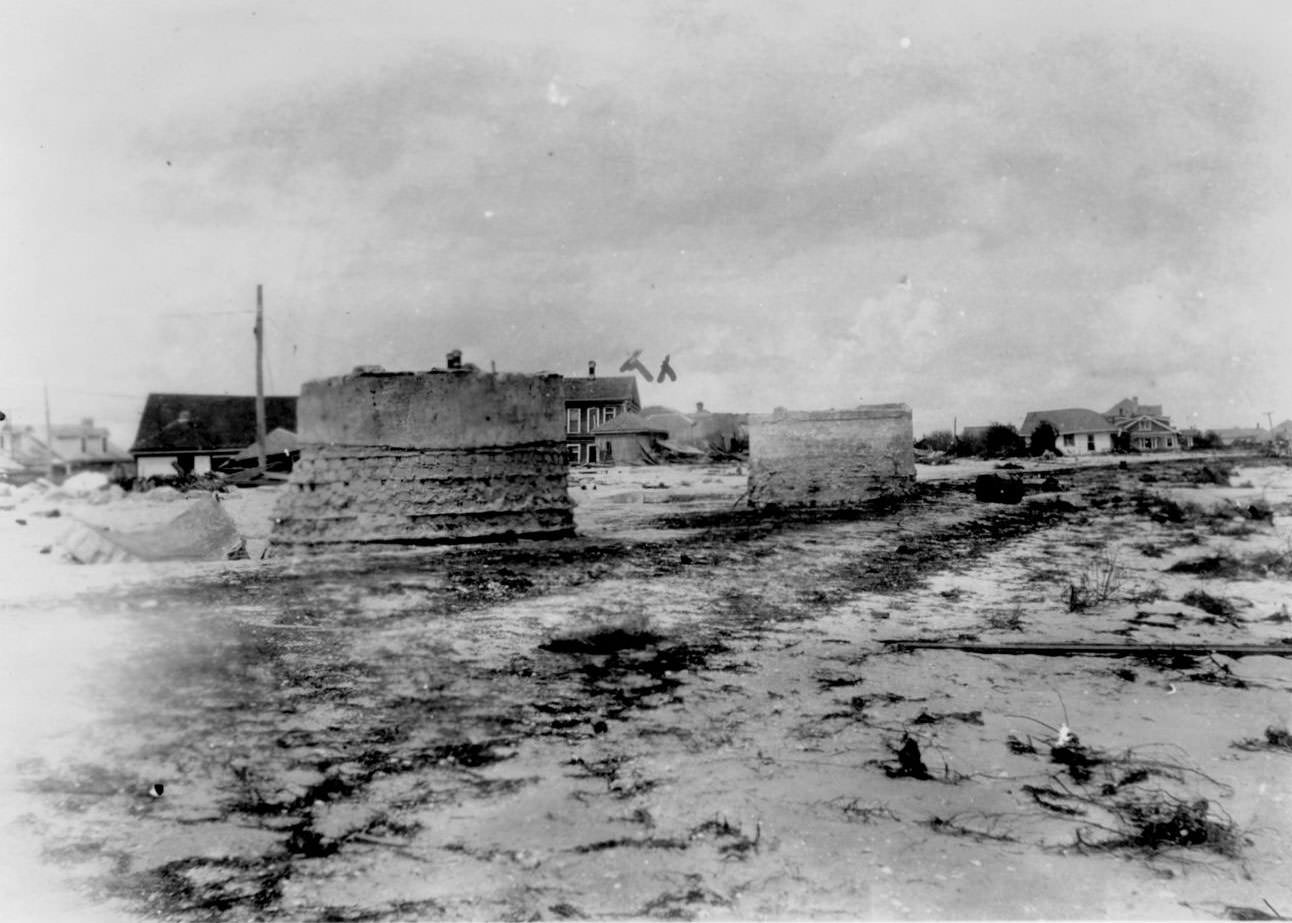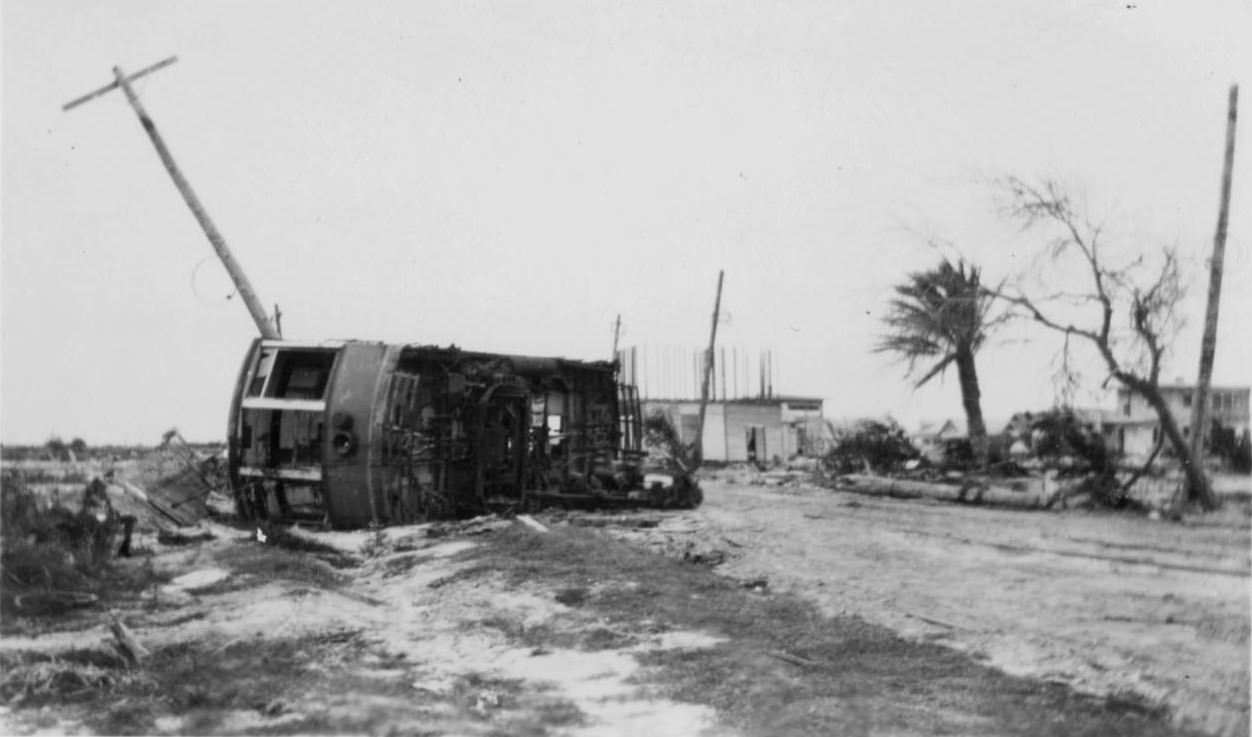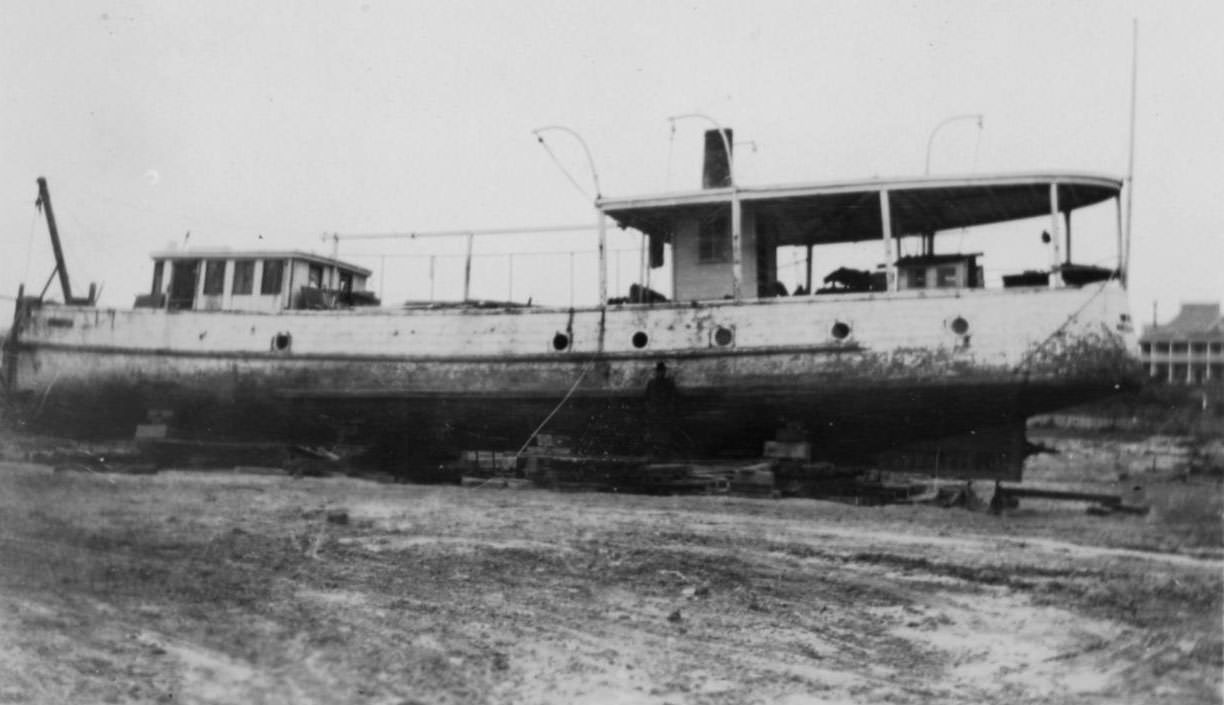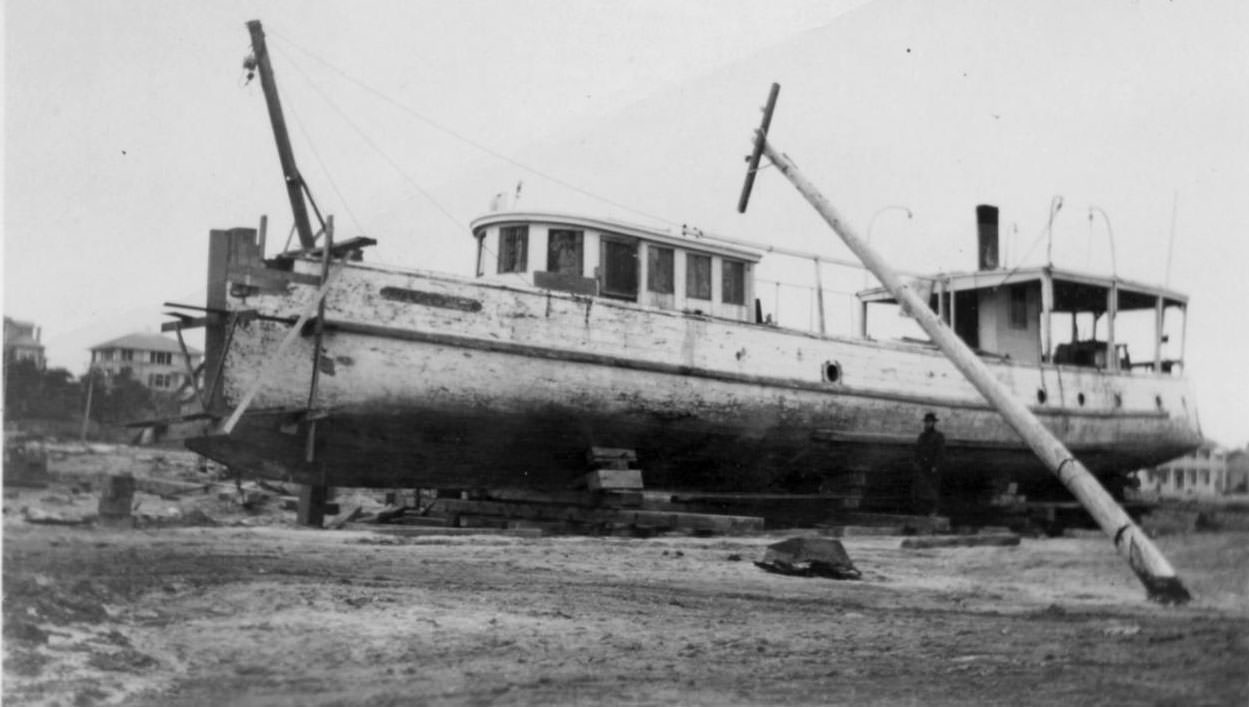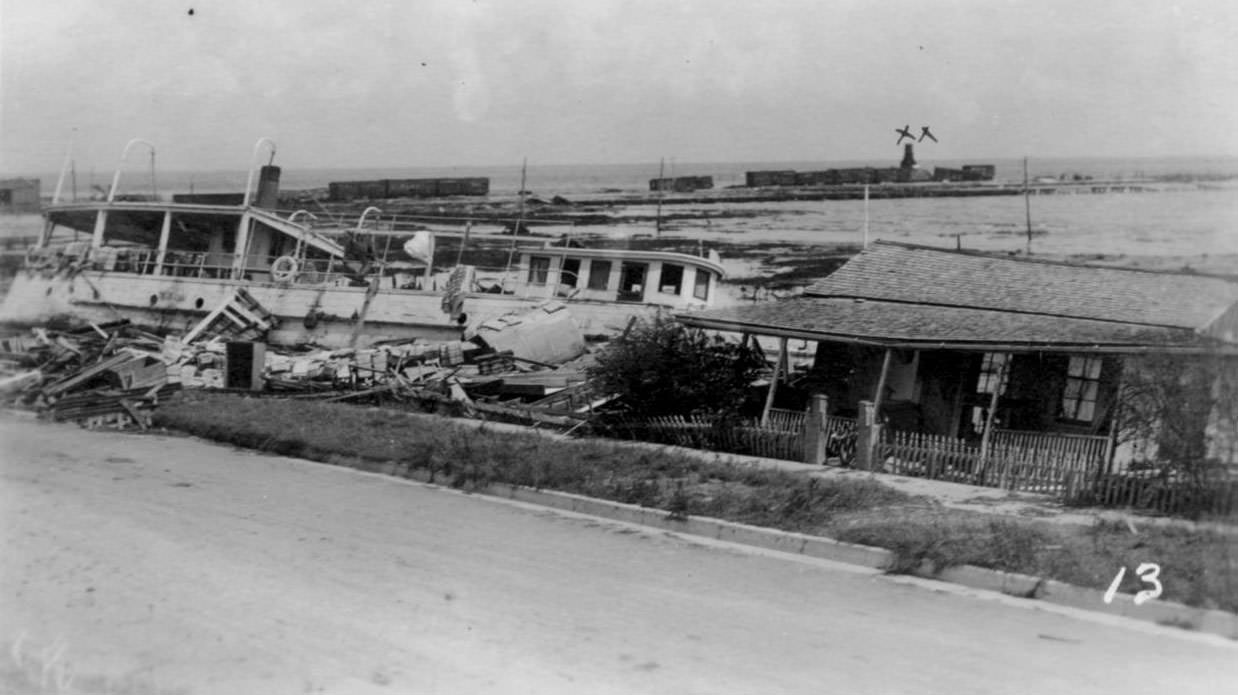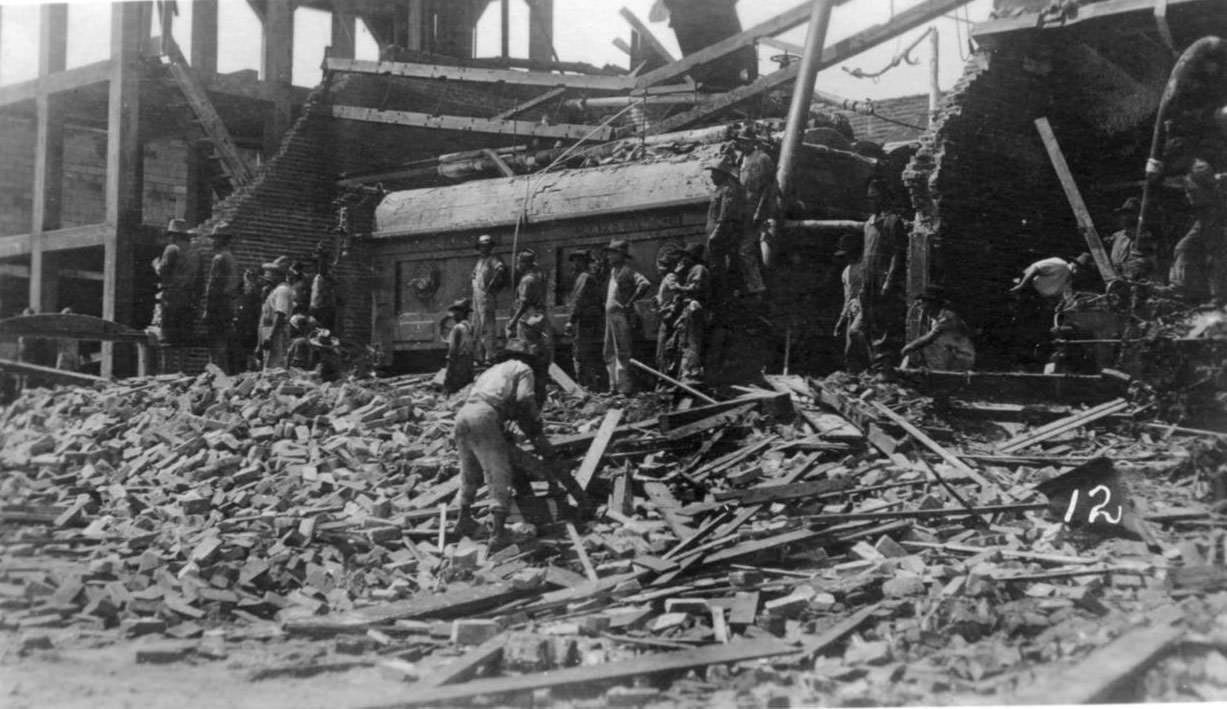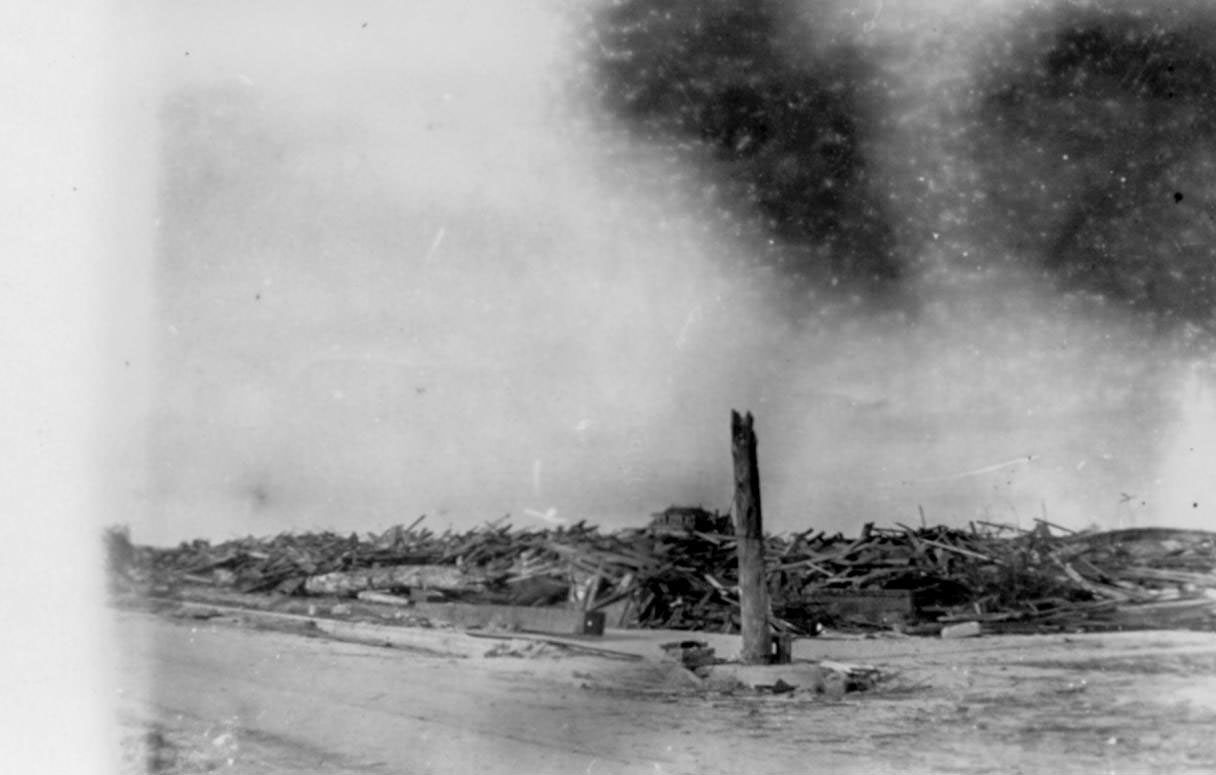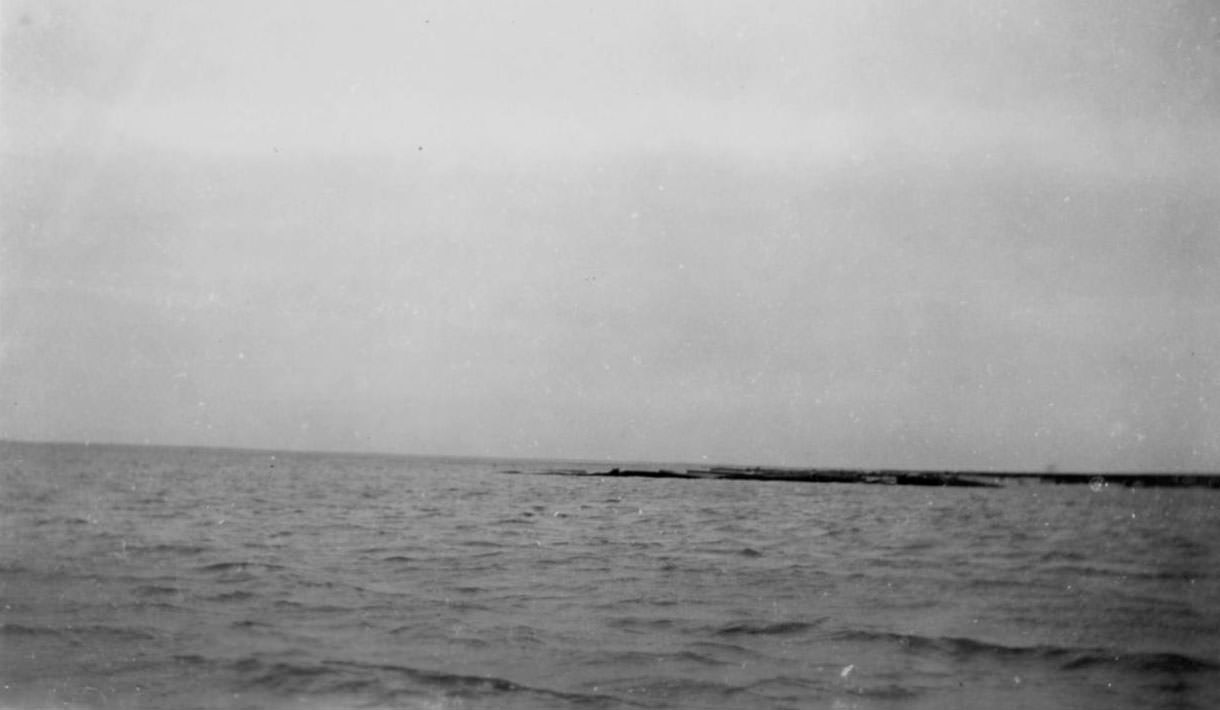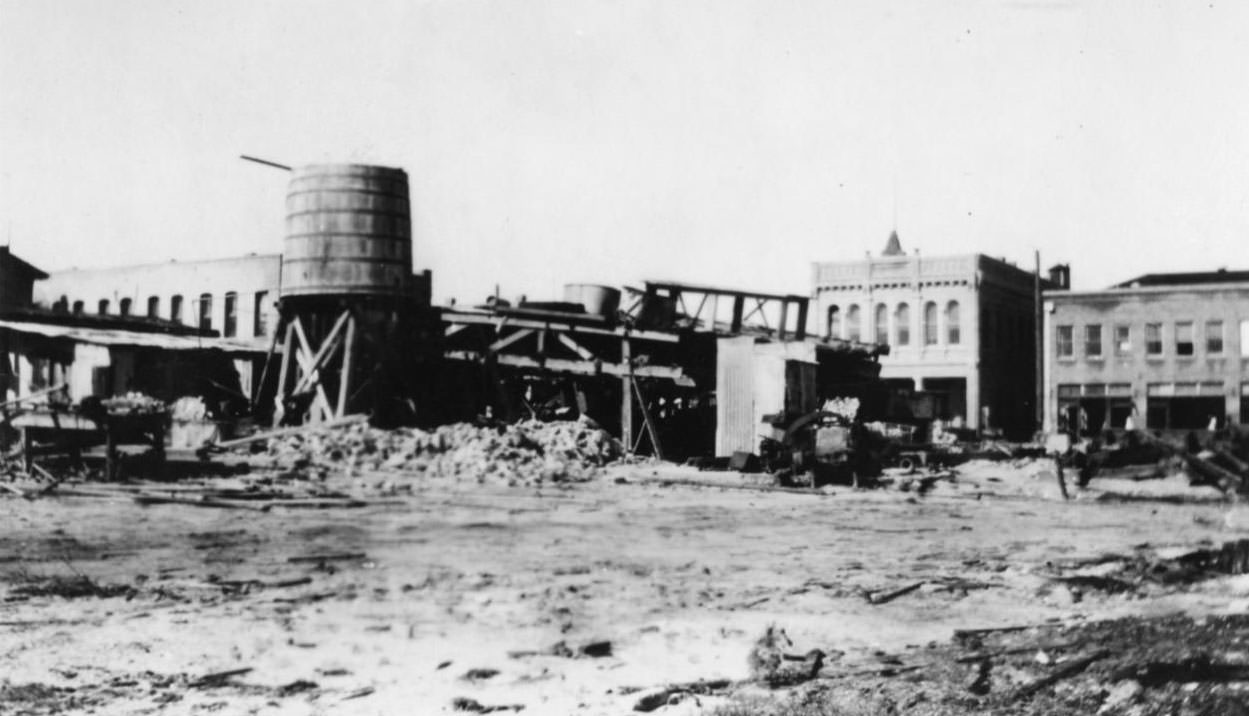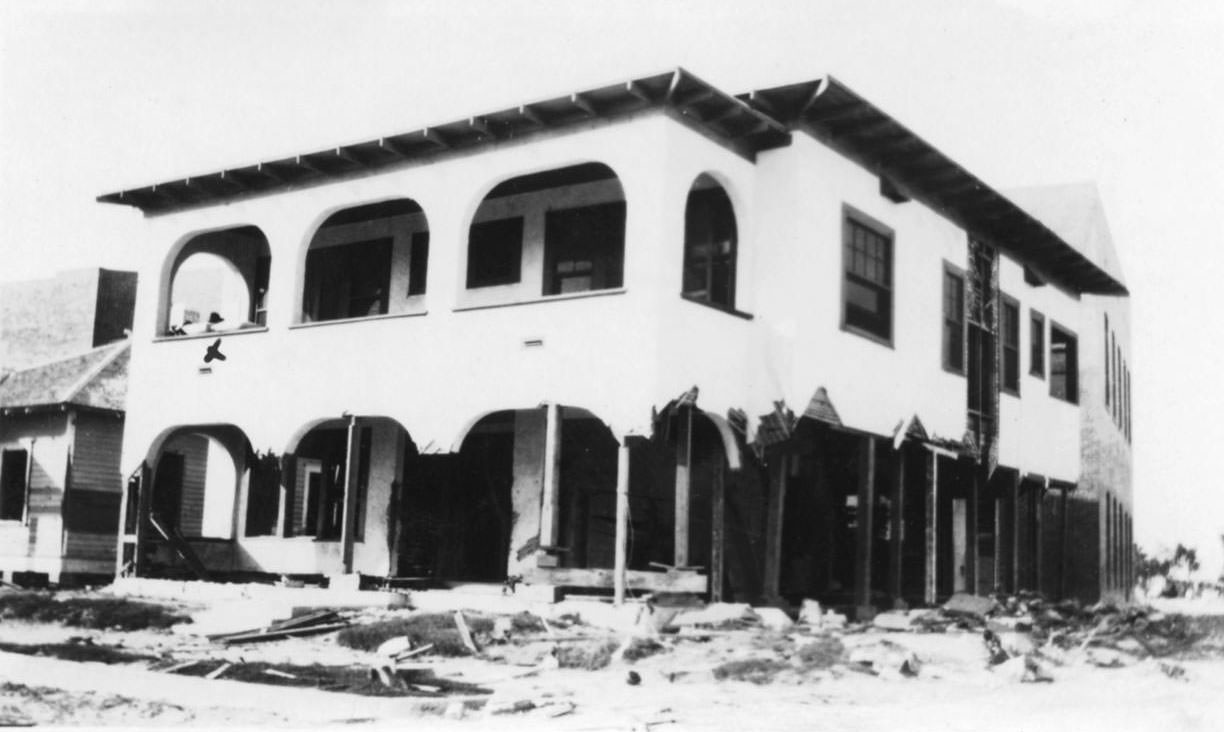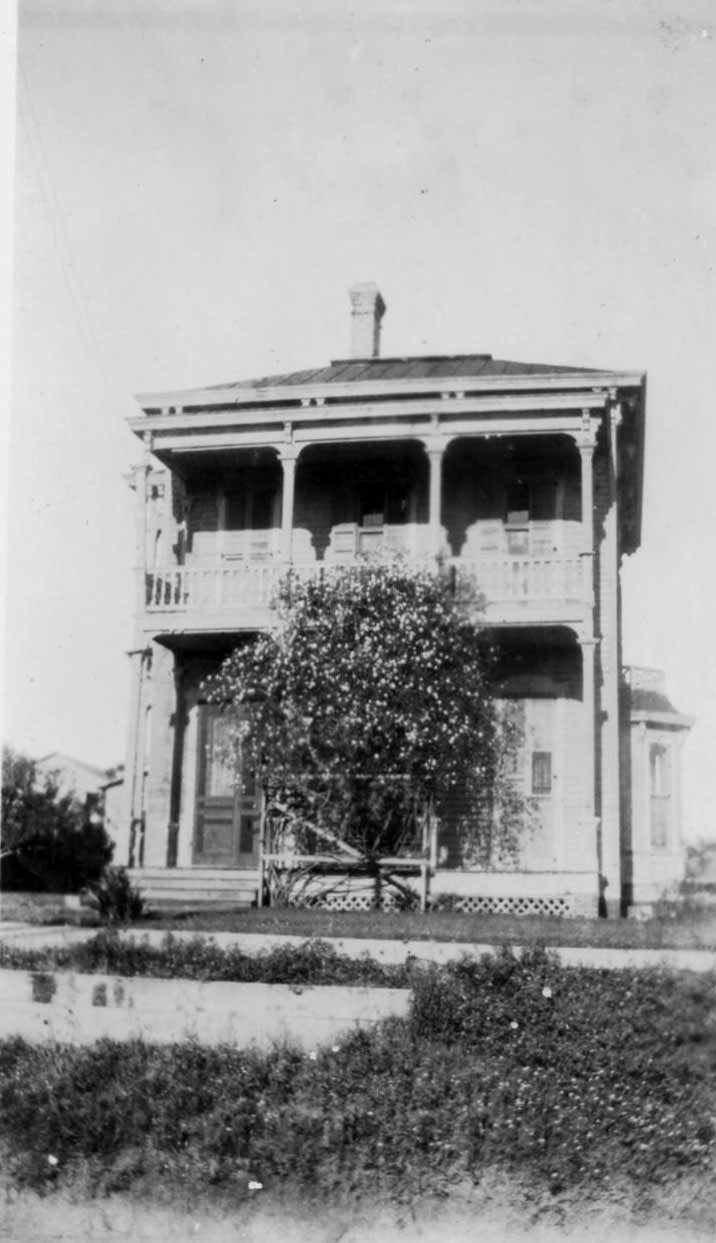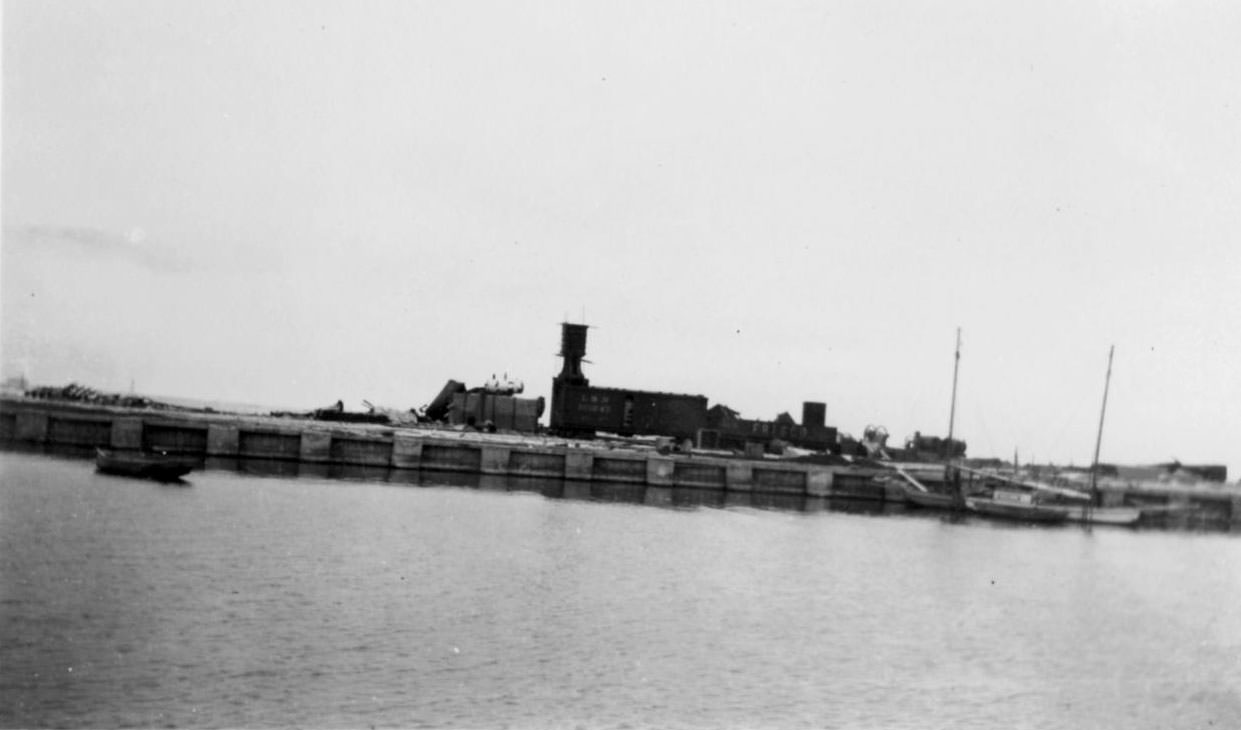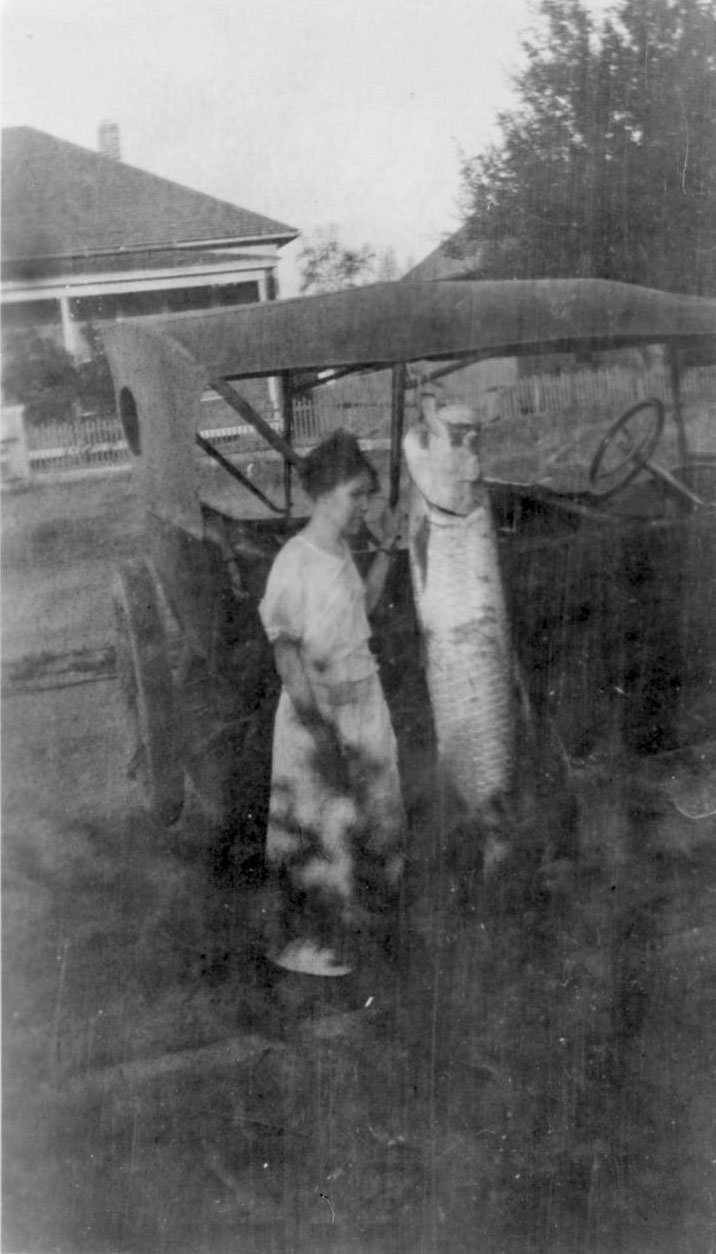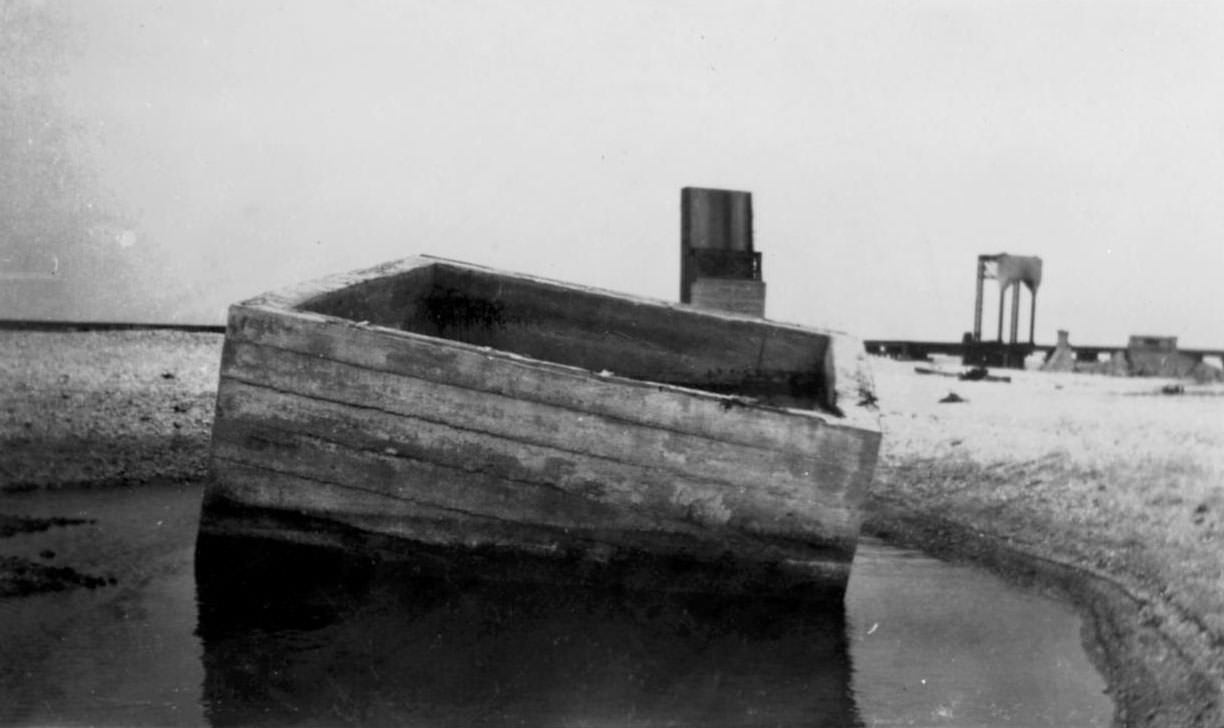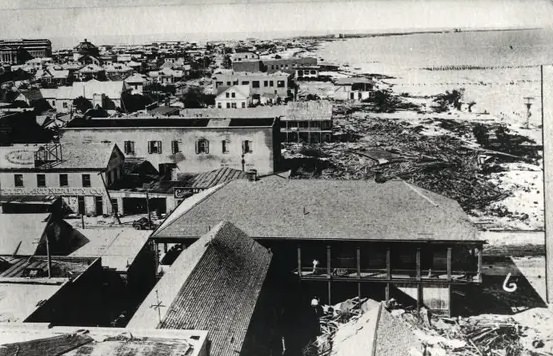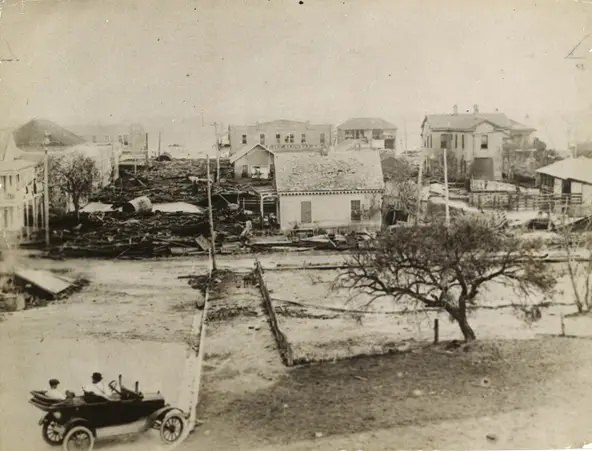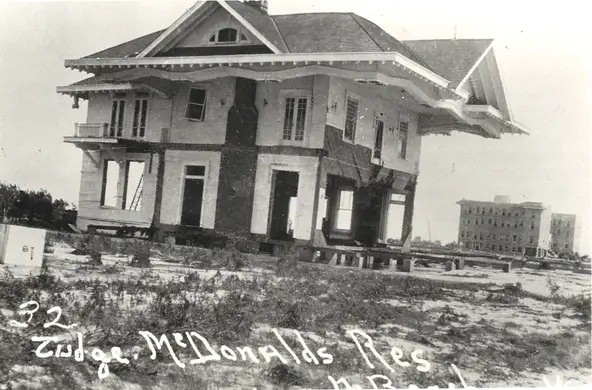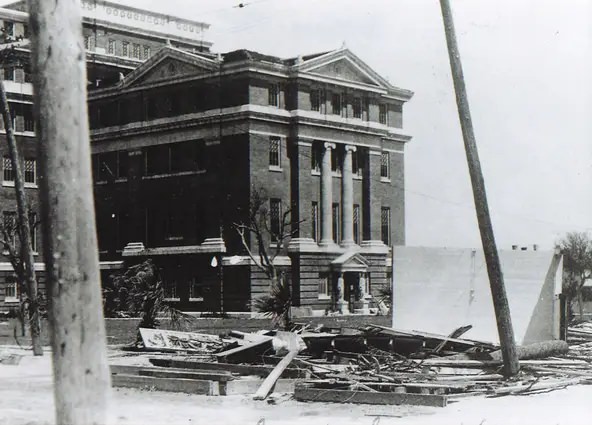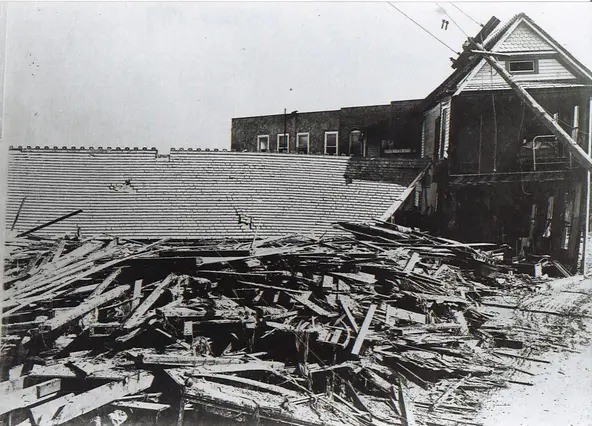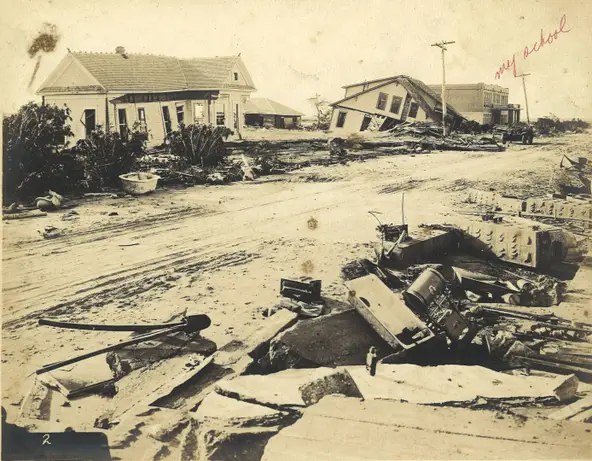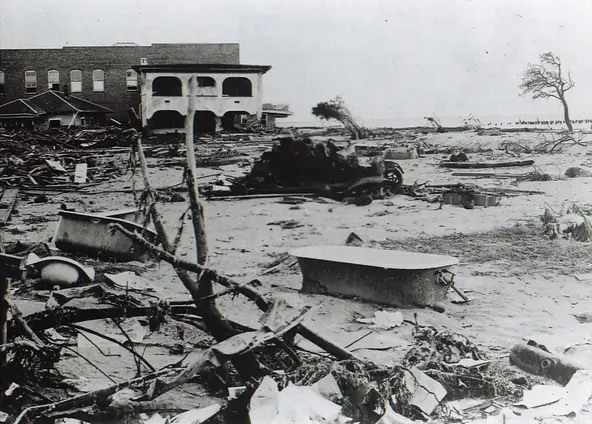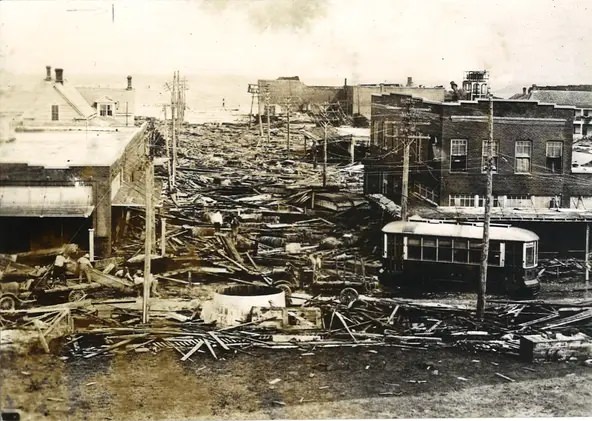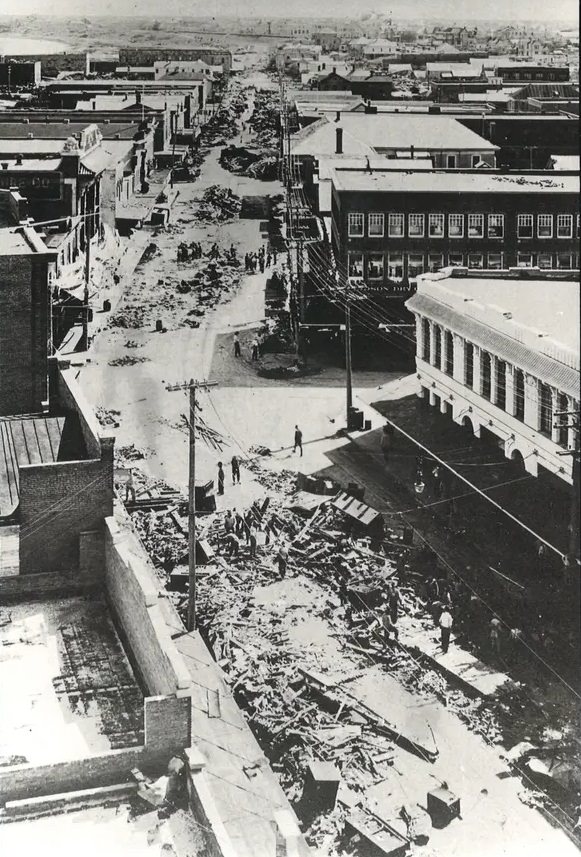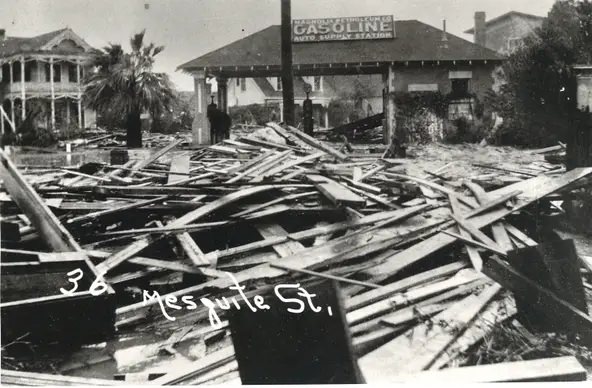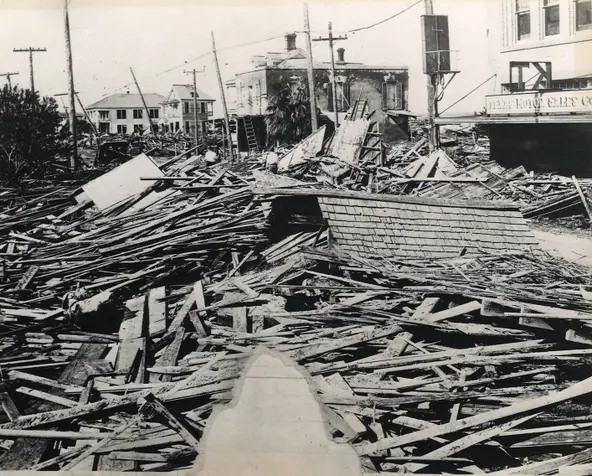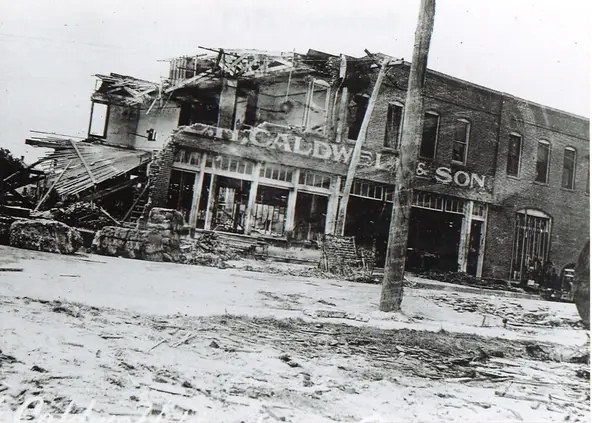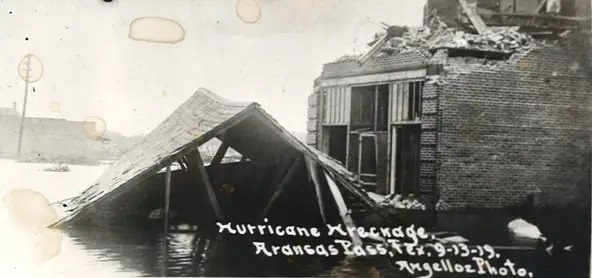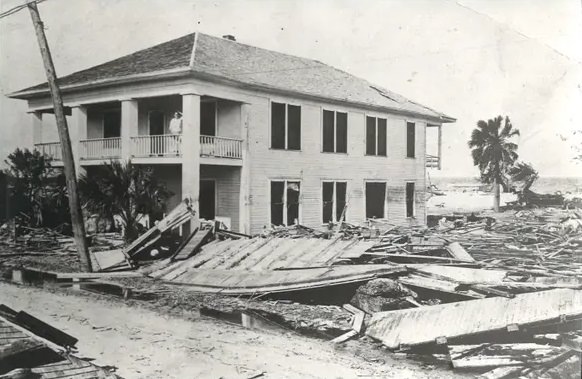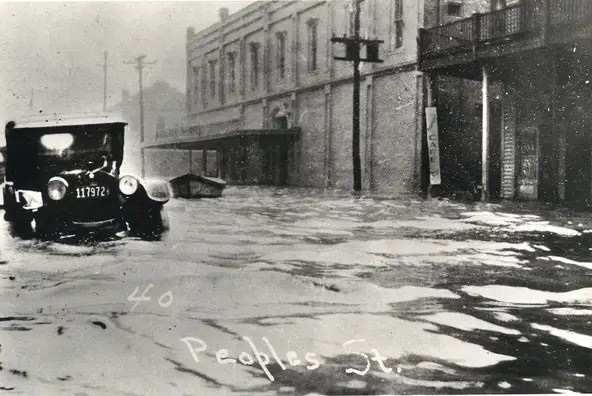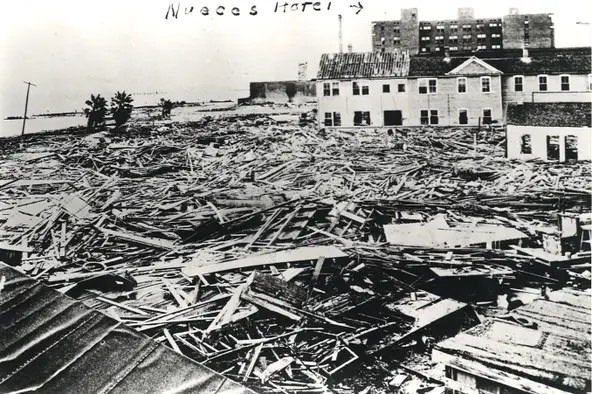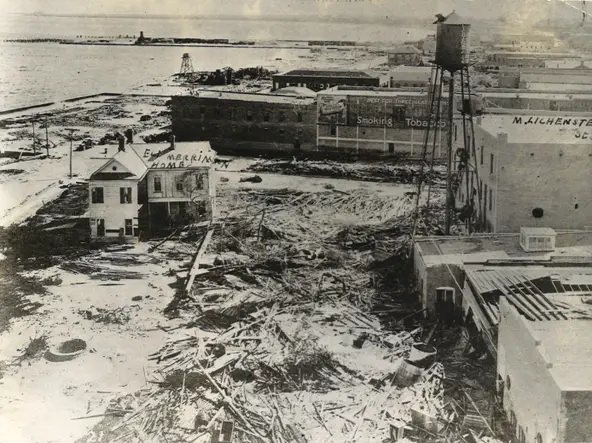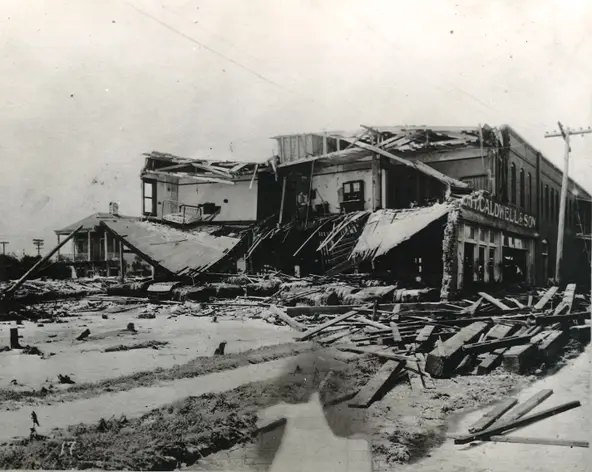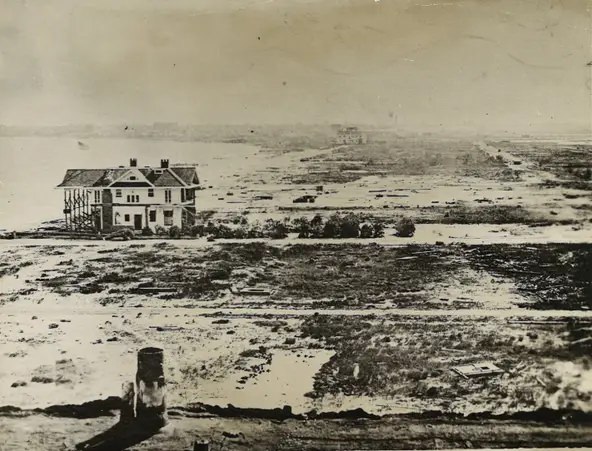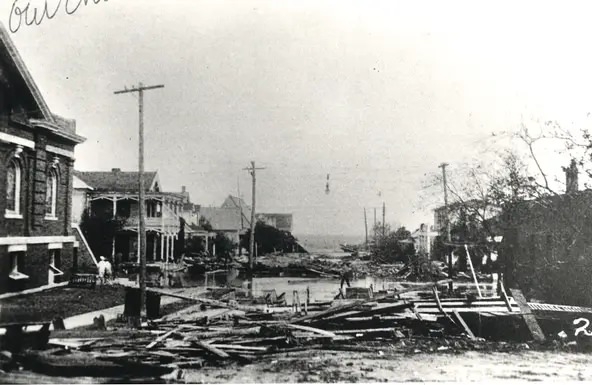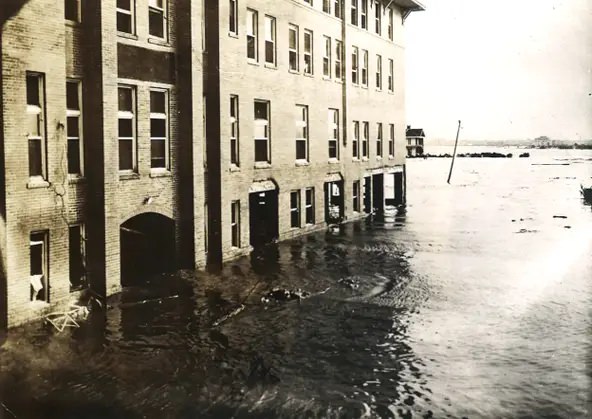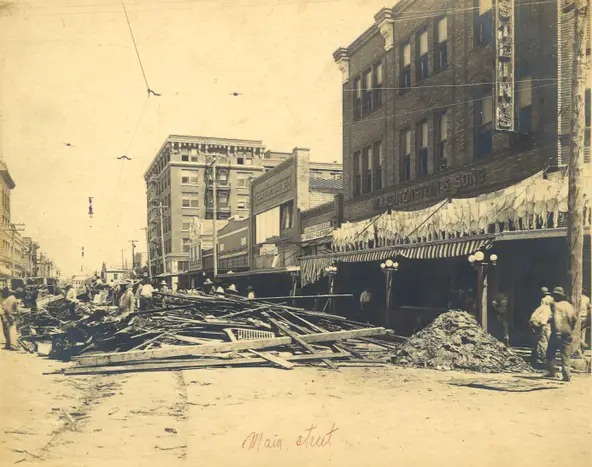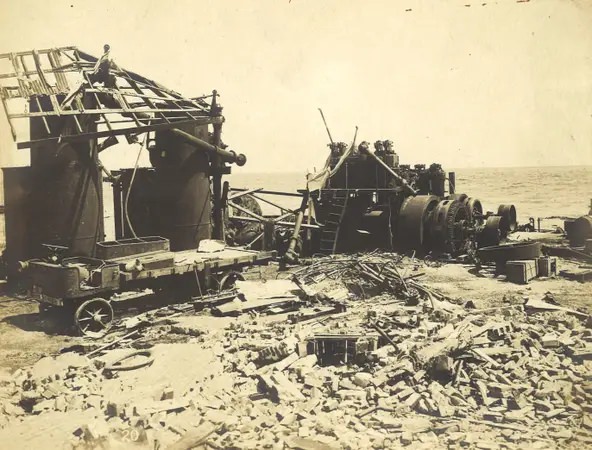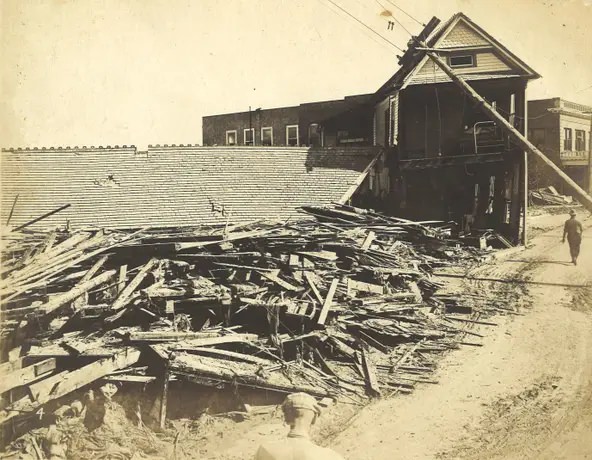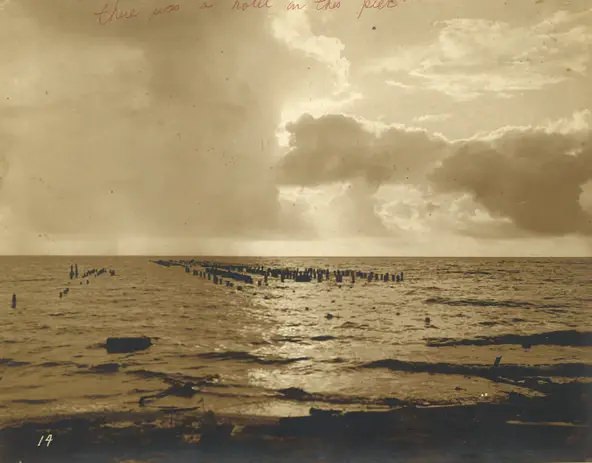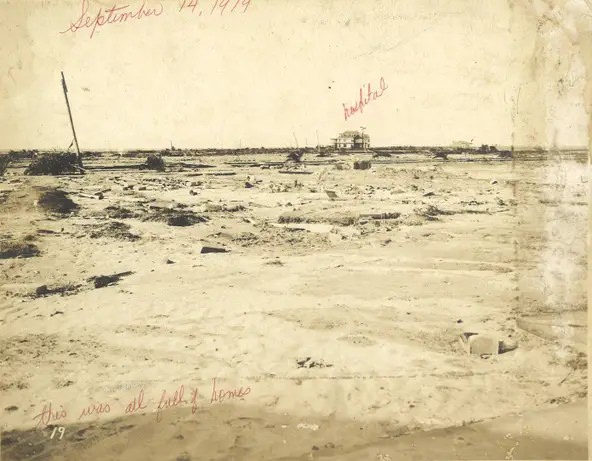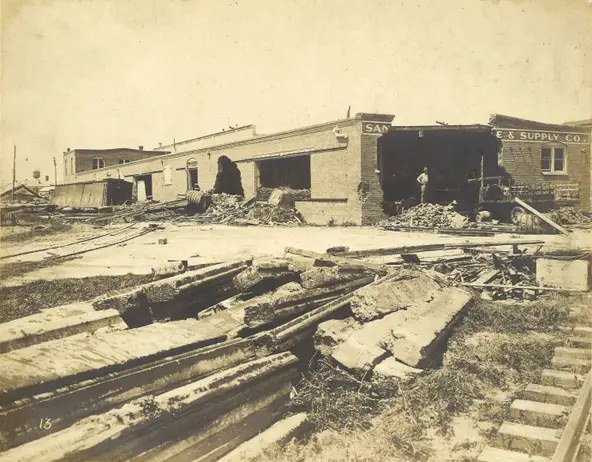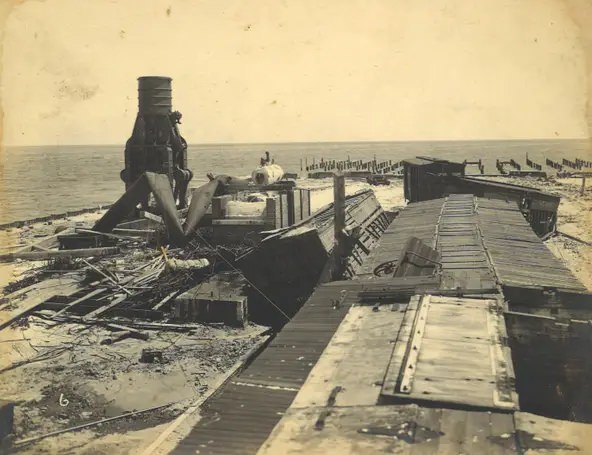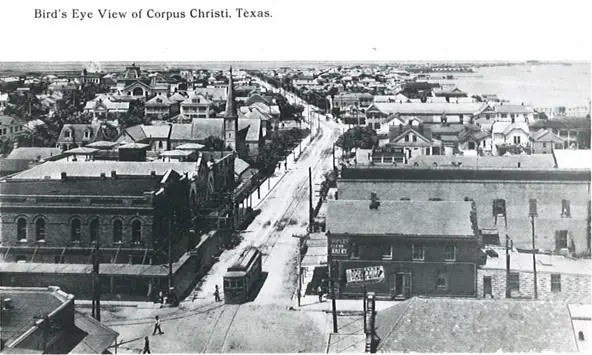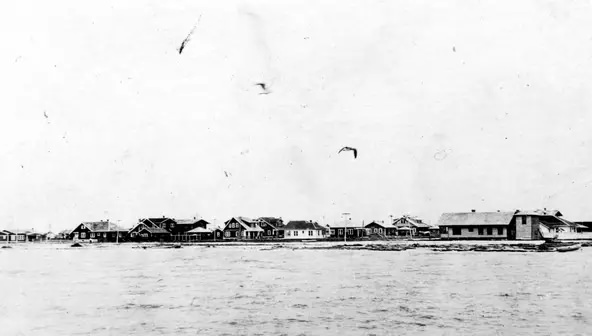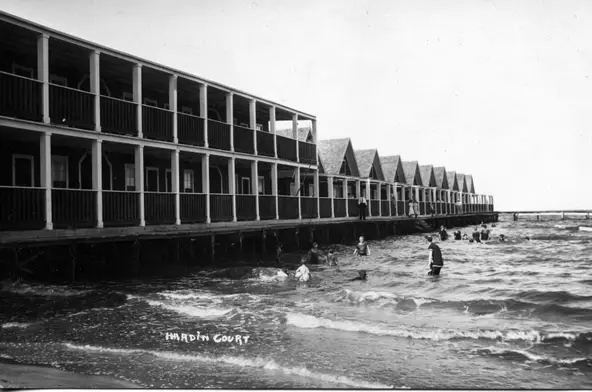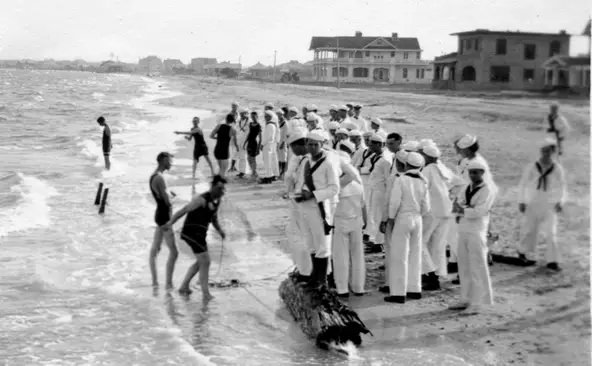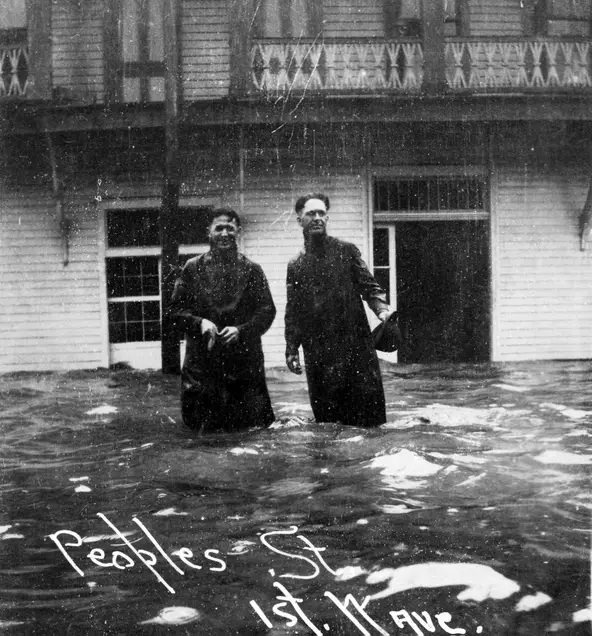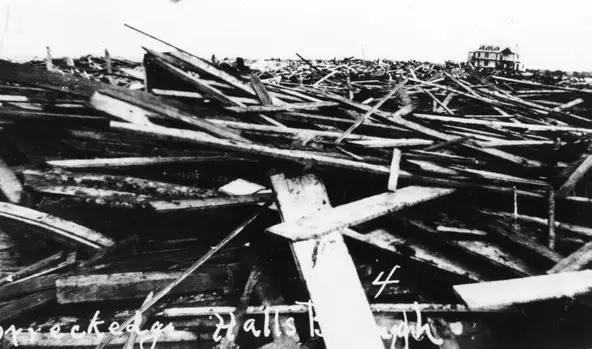The 1919 Florida Keys hurricane in Texas was among the deadliest tropical cyclones along the Texas Coastal Bend. Beginning in the Leeward Islands, the storm moved west-northwestward and devastated the Florida Keys on its way to the Gulf of Mexico. The hurricane caused widespread devastation across the region, further exacerbated by the large extent of its winds. Corpus Christi experienced the most extensive damage, contributing more than half of the damage toll; more than half of the confirmed fatalities were residents.
Corpus Christi and its immediate surroundings suffered the most damage from the hurricane. Two hundred and eighty-four of the 284 confirmed fatalities were Corpus Christi residents; 57 bodies were found in the city proper, while 121 were found in nearby White Point, the highest death toll of any area. The hurricane made landfall in Corpus Christi’s right-front quadrant, which usually contains the storm’s strongest winds and most powerful storm surges. There was an intense storm surge of 16 feet (4.9 meters) between September 14 and 15 in Corpus Christi from winds ranging between 70-110 mph (110-180 km/h).
There were people trapped inside homes and other buildings as the waves pounded at the walls. Floating in the water were wrecked houses, telephone poles, oil from ruptured tanks, and water-soaked cotton bales. People trapped inside buildings grabbed hold of whatever they could as improvised rafts. The hurricane destroyed over 900 buildings in Corpus Christi and surrounding areas. Several buildings in the downtown area and North Beach were destroyed. Some of the city’s businesses were destroyed below the promontory. Over 23 blocks of city beaches between Star Street and Dan Reid Street, 900 homes disintegrated, leaving only sporadic debris to remind them of their former existence. Only three structures remained intact on North Beach, one of which was the Spohn Sanitarium, where four people died. Storm surges carried many residents into Nueces Bay, where some drowned; others survived as the waves carried them to White Point. Many homes were destroyed along the beach.
The city asked Congress for assistance after the storm of 1919, but Congress denied it. However, the Texas Legislature approved an ad valorem tax for seven South Texas counties to help fill a storm protection fund. During the storm, former mayor Roy Miller lost his own home but sheltered his family at the Nueces Hotel. He was appointed to head a relief committee by his political rival, current mayor Gordon Boone. He began lobbying for a deepwater port in Corpus Christi as soon as relief efforts began.
Here are some historical photos of Corpus Christi that depict the devastation caused by the 1919 Florida Keys hurricane.
#1 Army Hospital after the hurricane of 1919 in Corpus Christi.
#2 A damaged house in Corpus Christi, Texas around the time of a hurricane in 1919.
#3 Buildings damaged in the 1919 hurricane in Corpus Christi.
#4 Overturned cars on the beach in Corpus Christi, Texas around the time of a hurricane in 1919.
#5 Building after the hurricane of 1919 in Corpus Christi.
#6 Flooded intersection of Chaparral and Taylor Streets after the hurricane of 1919 in Corpus Christi.
#7 Chaparral Street, flooded with a large pile of debis. Plaza Hotel stands to the right.
#8 Houses on Chaparral Street by the Seashore Club, 1919
#9 A heavily-damaged two-story brick and concrete building, 1919
#10 Piles of debris after the hurricane in 1919 in Corpus Christi.
#11 Methodist Church and two other buildings standing after the hurricane of 1919 in Corpus Christi.
#12 Homes, hotels and debris in Corpus Christi after the 1919 hurricane.
#13 The damaged area of Corpus Christi after the hurricane of 1919.
#14 The concrete rubble and pilings where the Municipal Pier once stood before the Corpus Christi hurricane of 1919.
#15 Group of Men and Women on the Beach, 1919
#16 A concrete building that is half gone after the hurricane of 1919 in Corpus Christi.
#17 An unidentified orchard and garden in Corpus Christi, Texas around the time of a hurricane in 1919.
#18 Deep flood waters on Peoples Street in Corpus Christi after the hurricane of 1919.
#19 The remains of the causeway that once crossed the bay in Corpus Christi after the hurricane of 1919.
#20 A damaged neighborhood in Corpus Christi, Texas around the time of a hurricane in 1919.
#21 The causeway and railroad bridge near Corpus Christi after distruction of the 1919 hurricane.
#22 Looking towards the town from the bay area of Corpus Christi after the hurricane of 1919.
#23 The remains of the old Winona Hotel in standing water after the Corpus Christi hurricane of 1919.
#24 Two men standing knee deep in water before a home on Peoples Street in Corpus Christi after the hurricane of 1919.
#25 A house and a hotel that sustained damage from the 1919 hurricane in Corpus Christi.
#26 Buildings along the shoreline surrounded by debris after the Corpus Christi hurricane of 1919.
#27 A house that has been heavily damaged by a hurricane in Corpus Christi, Texas in 1919.
#28 A house with a large sand bank behind it.
#29 Two women and a man standing by the ruins of a house after the 1919 hurricane in Corpus Christi.
#30 A two-story house surrounded by debris from the Corpus Christi hurricane of 1919.
#31 A two-story house whose front walls are missing.
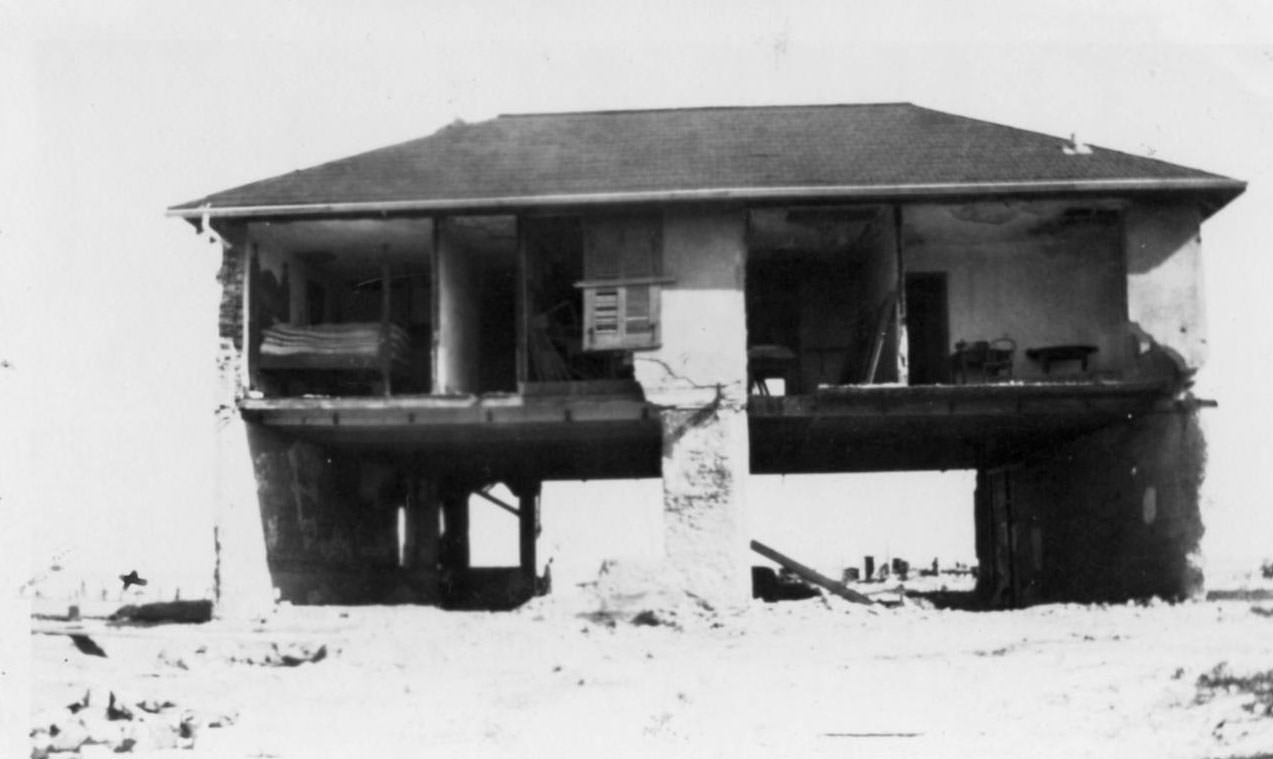
This is also brick covered with concrete. It is not stucco but hard concrete. This was one of the oldest houses here and was the same distance from the bay as the other - that is it was on the same side of Water St. But there were buildings across the street between it and the bay.


